10 Best Onsen Towns near Tokyo!

Going to an onsen is one of the most exciting and relaxing experiences that you can have in Japan. It has been an essential part of Japanese culture for centuries, and visiting an onsen allows you to refresh and get rid of exhaustion from a hard days or weeks work. Japan boasts a large number of onsen resorts that can be found everywhere, and a number of them are conveniently located near Tokyo. Taking a weekend trip to a relaxing onsen town will help you unwind while exploring tourist attractions and take in the impressive scenery around as well. Here is a list of the best onsen towns near Tokyo !
▼ Explore Tokyo on our private tour!

What is an onsen?
How to get to hakone yumoto onsen, how to get to kusatsu onsen, how to get to ikaho onsen, how to get to nasu onsen, how to get to kinugawa onsen, how to get to gora onsen, how to get to ito, how to get to shuzenji, how to get to manza onsen, how to get to shima onsen, japan wonder travel tours in tokyo, other articles you might like.
In Japanese the word onsen is written as 温泉, and the two kanji that are translated as ‘hot’ and ‘water’, which is basically the definition of an onsen. The water of onsen must be at least 25°C at the source and the water must meet one of the 19 criteria related to the mineral content of the water. Going to an onsen is a very important and cherished part of Japanese culture and this tradition has been in place for many centuries.

Throughout Japan there are countless onsen resorts, each with their own health benefits and characteristics. Some are located in the mountains , in cities , near beaches or really anywhere else. There are many different rules, of which the most important one is never to use soap or shampoo inside the shared bath. Before entering an onsen, always wash and rinse yourself first! Read more about how to take an onsen in the article below.
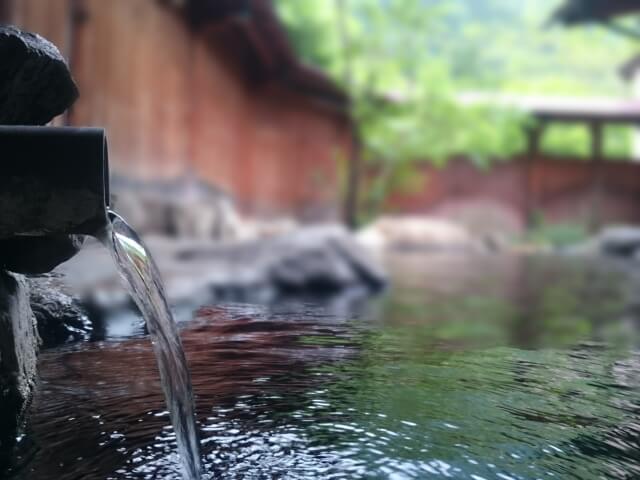
1. Hakone Yumoto Onsen (Kanagawa) 90 minutes
Hakone is widely known as one of the most popular onsen towns in Japan. In fact for many people, the natural hot springs are the first thing that come to mind when thinking of Hakone. There are 17 hot spring sources in the area of Hakone, also known as Hakone Ju-nana-yu (Hakone 17), including the most famous Yumoto, Kowakudani and Sengoku. Each onsen area offers different water quality and subsequent health and/or beauty benefits. Some require bathing suits and others allow tattoos .

Located in the west part of Kanagawa prefecture , Hakone attracts numerous tourists all year round with a range of tourist attractions and scenic spots around. Because Hakone is easily accessible from Tokyo, it takes only 1.5 hours to get to the area from Tokyo by train, it is a popular day trip destination as well!
Popular attractions around Hakone Yumoto Onsen
- Lake Ashi : a large crater lake offering a peaceful cruise with the stunning views of Mt. Fuji.
- Hakone Shrine : a sacred shrine dating back around 1,300 years that stands in the peaceful forests by the lake.
- The Hakone Open-air Museum : Beautiful museum with a variety of unique exhibits displayed inside and outside of the museum in harmony with nature around.
Take the Odakyu Romancecar from JR Shinjuku Station and get off at Hakone Yumoto Station (1.5 hrs, ¥2,330).

2. Kusatsu Onsen (Gunma) 3-4 hours
Kusatsu is a traditional onsen town that is located in Gunma prefecture . The town is famed for its high quality water and especially for its health benefits which are said to cure any kind of illness, except for lovesickness. The hot water field known as yubatake is the symbol of Kusatsu Onsen. A total of 32,000 liters of hot water gushes out of the hot spring per minute, and yubatake in the center of the town is the place where the piping hot water is cooled down. There are over 100 Japanese ryokan offering relaxing onsen experiences around the city. It also produces the largest amount of hot spring water as a solo onsen resort in Japan. Once you step into the city, you will soon realize the unique smell of sulfate that embraces the entire city!
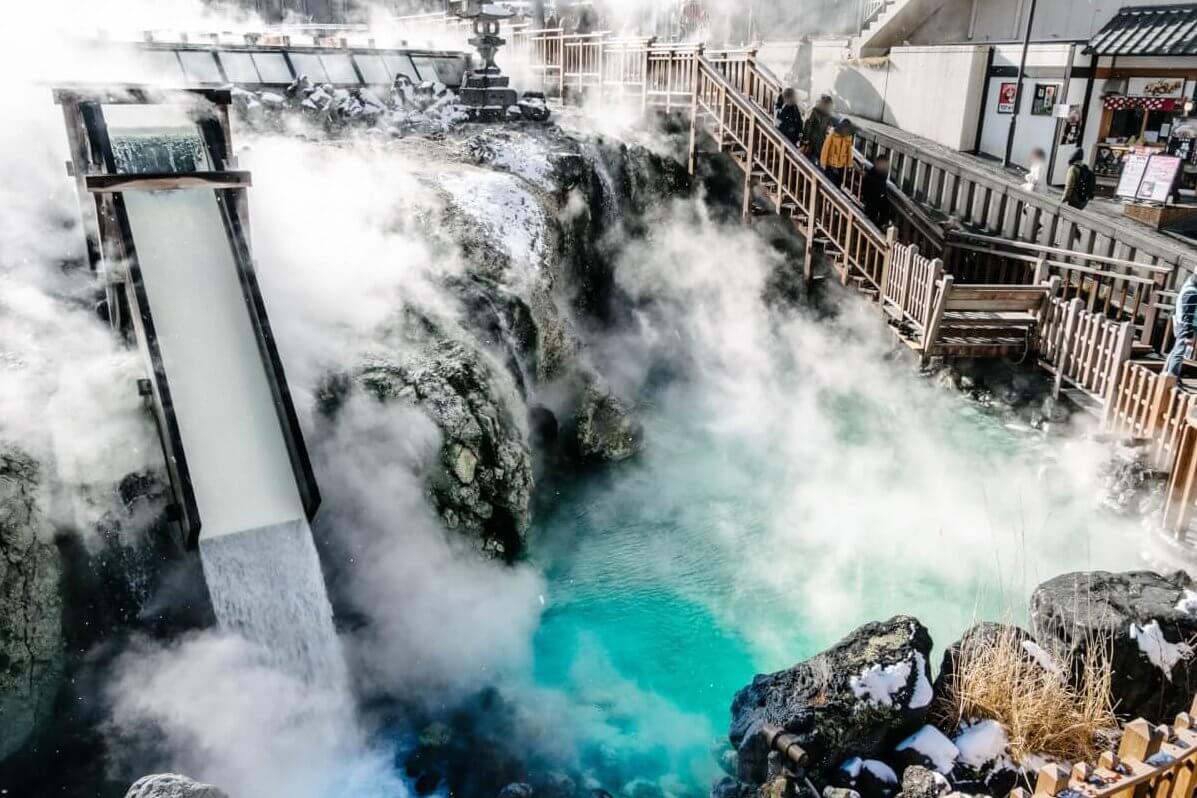
Popular attractions in Kusatsu Onsen
- Kusatsu Yubatake : The symbolic spot known as the “hot water field” that is situated in the center of the city. It looks like a giant pool storing a large amount of hot spring water and is especially beautiful when illuminated at night!
- Nishinokawara Park : This is a nice quiet park with a number of hot spring sources, free foot baths, and seasonal plants around.
- Yumomi (Netsunoyu) : Enjoy traditional performances to cool down the hot spring water!
Take the limited express Tokkyu Kusatsu from JR Ueno Station. Get off at Naganohara Kusatsuguchi Station. It takes 20 min to get to Kusatsu Onsen by bus (3-3.5 hrs, ¥5,450).

3. Ikaho Onsen (Gunma)
Gunma Prefecture is also home to another famous hot spring destination called Ikaho . It is located on the foot of Mt. Haruna and is known for the 365 symbolic stone steps running through the main district of the village. On each side of the steps, you can find a variety of attractions such as traditional Japanese inns, gift shops, restaurants, and other entertainment spots.
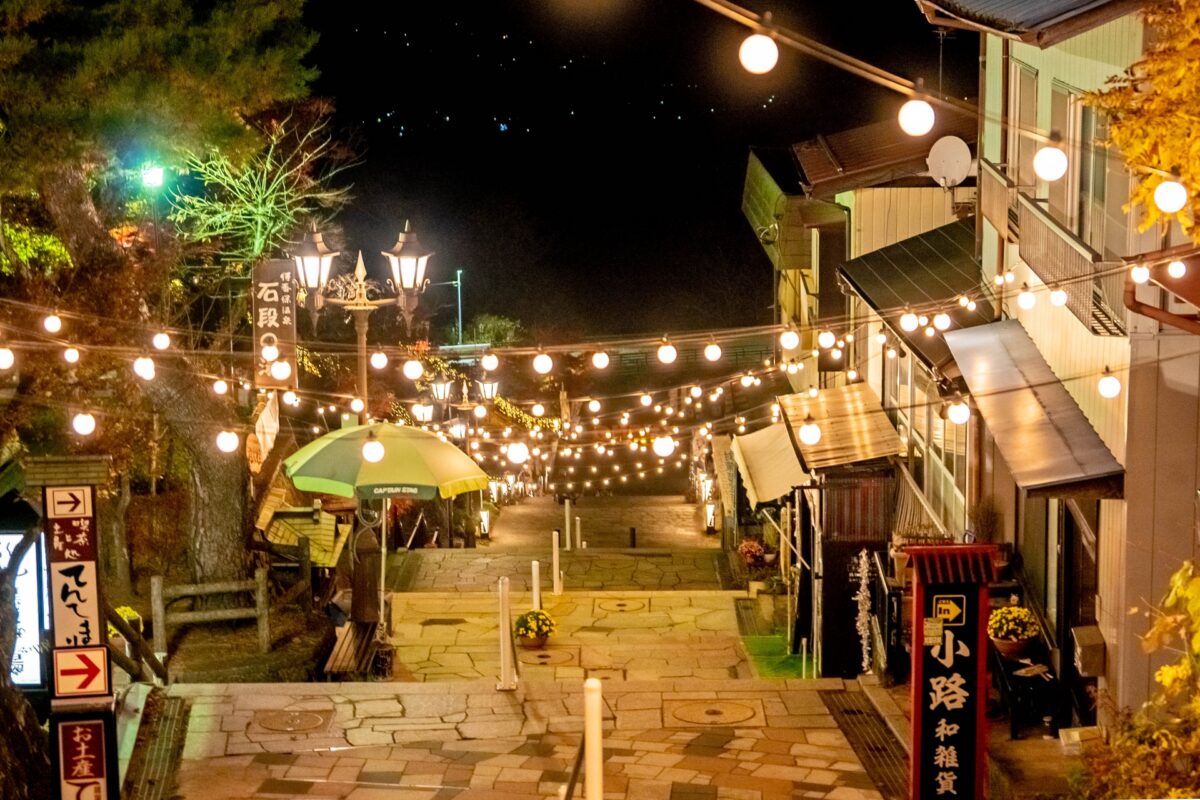
Explore the peaceful town along the stone steps until you finally reach Ikaho Shrine standing at the top. The colors of water of Ikaho also make it unique: golden and silver water that deliver different types of health benefits!

Popular attractions in Ikaho Onsen
- Ikaho Shrine : An iconic and historical shrine offering a panoramic view of Mt. Haruna & other surrounding peaks!
- Kajika Bridge : The perfect spot to enjoy stunning autumn leaves from the bridge beautifully painted in red.
Take the limited express Tokkyu Kusatsu from JR Ueno Station and get off at Shibukawa Kusatsuguchi Station. From there it takes 30 min to get to Ikaho Onsen by bus (2–2.5 hrs, ¥4,200)
4. Nasu Onsen (Tochigi)
Nasu is a famous hot spring resort in Tochigi Prefecture that draws almost 5 million visitors every year. The first hot spring facility is said to be founded around 630, and Nasu Onsen has since then developed as a popular onsen destination with its beautiful natural surroundings. It consists of 7 separate areas with different hot spring sources, scattered across the mountainside. Visitors can try each of them while receiving a range of benefits and effects!
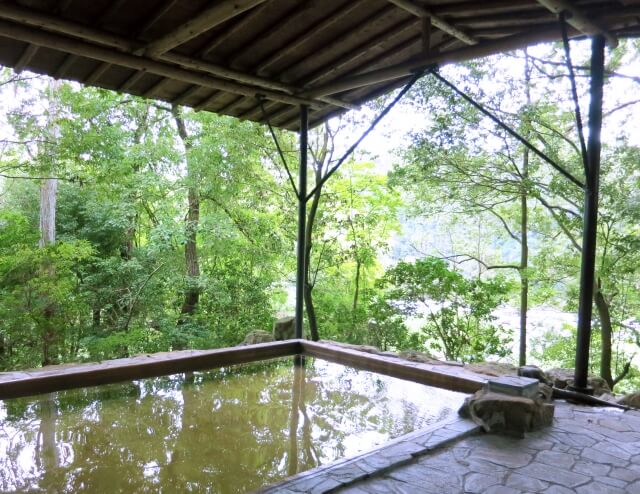
Popular attractions in Nasu Onsen:
- Mt. Nasu : A scenic mountain offering panoramic views.
- Killing Stone : A large rock that vents poisonous gasses.
- Minamigaoka Ranch : Admission-free ranch with a range of outdoor activities and interaction with animals.
Take the Tohoku Shinkansen to Nasushiobara Station (70 min, ¥5,390). From there switch to local buses from there, depending on which hot spring facilities you want to visit it will take about 40-60 min (¥300).

5. Kinugawa Onsen (Tochigi)
Kinugawa is another onsen resort in Tochigi Prefecture , near the popular Nikko area. It was discovered in the Edo period about 260 years ago and at the time only notable monks and feudal clans visiting Nikko were granted permission to enjoy the hot spring. It was later opened to the public, and developed as one of the most famous onsen resorts in the Kanto region . In the 1970’s tourism was booming here and many large ryokan facilities were built. After the recession in the 1990’s some went out of business and the abandoned buildings give an interesting vibe to the area. The water is relatively mild and safe even for those who have sensitive skin, and effective to treat a range of health problems such as fatigue and neuralgia.

Popular tourist attractions Kinugawa Onsen
- Nikko Toshogu Shrine : The famous UNESCO World Heritage Site which enshrines Tokugawa Ieyasu, the first shogunate of the Tokugawa Shogunate.
- Kinugawa river : An iconic river where you can join memorable river rafting!
- Tobu World Square : Unique theme park with a number of 1/25 scale reproductions of famous buildings and architectures from all over the world.
Take the Tobu Nikko Kinugawa train from JR Asakusa Station to Kinugawa-Onsen Station (2 hrs, ¥2,890)
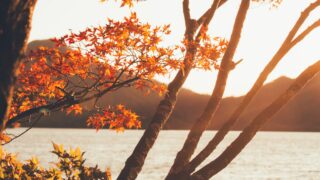
6. Gora Onsen (Kanagawa)
Gora Onsen refers to the hot spring area that covers the area around the Gora Station on Hakone Tozan Railway. It is sometimes considered as a part of Hakone Onsen, and welcomes visitors with luxurious inns and different types of hot spring sources. In the early 19 th century, the area experienced rapid development as a holiday villa area for celebrities along with the opening of Gora park. It currently boasts 46 hot spring sources which allows visitors to enjoy different colors of onsen classified into 5 types.
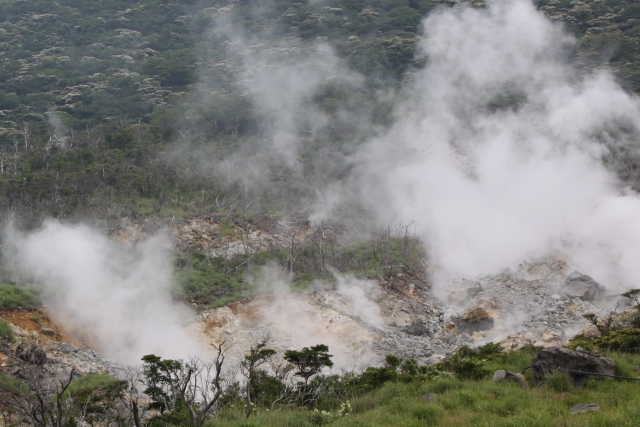
Popular attractions near Gora Onsen
- Hakone Ropeway : Symbolic transport system in Hakone area taking you to the popular tourist attractions such as Owakudani Hell Valley (大涌谷).
- Hakone Gora Park : French-style garden with a range of seasonal flowers, cozy cafes, and unique experiences.
Take the Odakyu Romancecar from JR Shinjuku Station to Hakone Yumoto Station. Transfer to Hakone Tozan Railway and get off at Gora Station (2 hrs, ¥2,720)
7. Ito (Shizuoka)
Izu Peninsula in Shizuoka Prefecture is a preferred holiday destination because of its easy access from Tokyo (less than 2 hrs) and rich nature. Ito is a coastal city located in the north eastern part of Izu Peninsula along with other famous onsen resorts such as Atami . Ito boasts the third largest output of onsen water per minute with more than 750 sources that can be found around the city. The large volume of onsen water allows visitors to enjoy the 100% natural hot springs directly from the sources without any additives at a number of inns and hotels in the area.
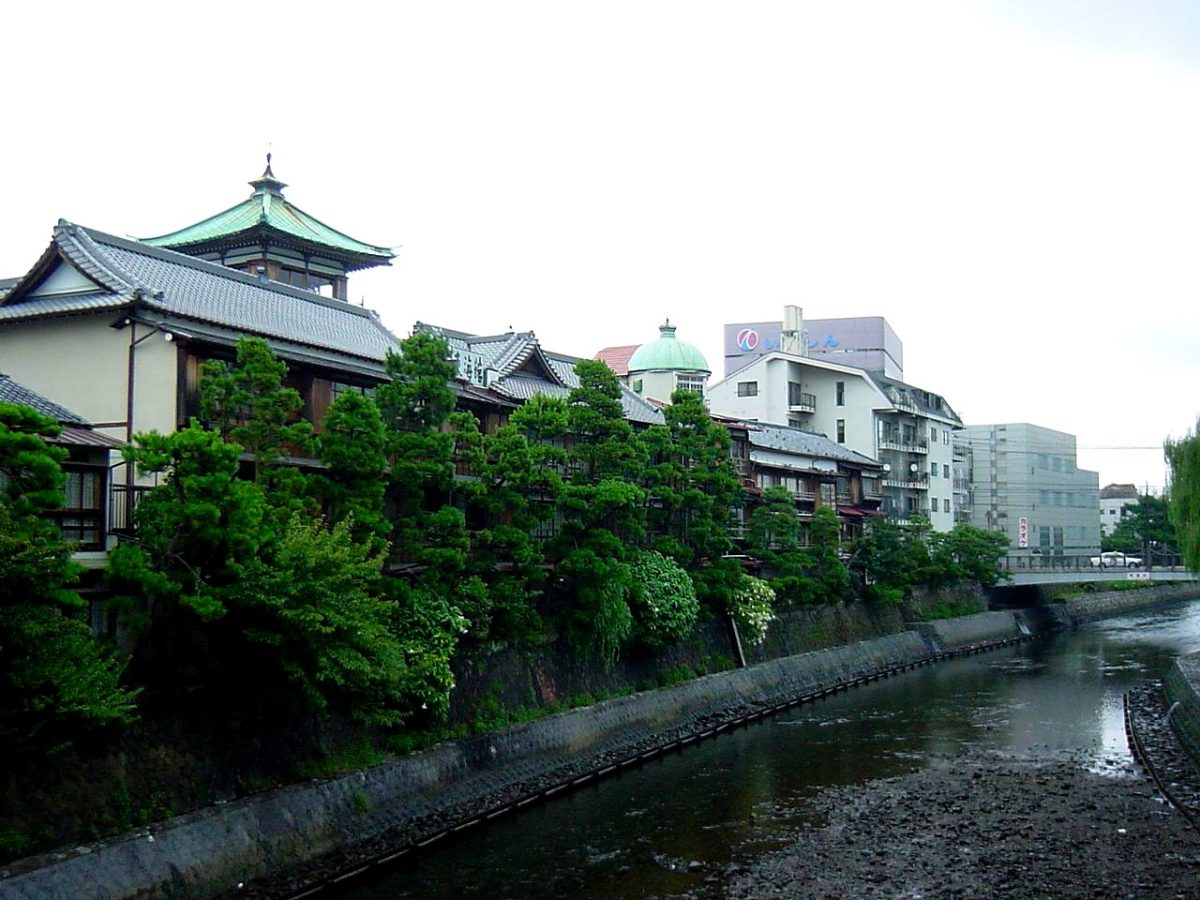
Popular attractions near Ito:
- Jogasaki Coast : Enjoy the stunning coastline scenery and enjoy a refreshing hike.
- Mt. Omuro : A 580 meters extinct volcano offering a panoramic view of Mt. Fuji!
Take the limited express JR Odoriko from Shinagawa Station. It takes you directly to Ito Station without transfer (1.5 hrs/ ¥4,200). You can also take the Shinkansen to JR Atami Station and transfer to JR Ito Line.

8. Shuzenji (Shizuoka)
A 1.5 hour train ride east from Ito city takes you to Shuzenji, another hot spring resort situated in the mountainous area of Izu Peninsula. Shuzenji is known as the oldest onsen resort on the Izu peninsula, it is said to date back to the early 9 th century. The peaceful area has also been visited and is loved by many famous novelists and writers such as Mori Ogai and Natsume Soseki.
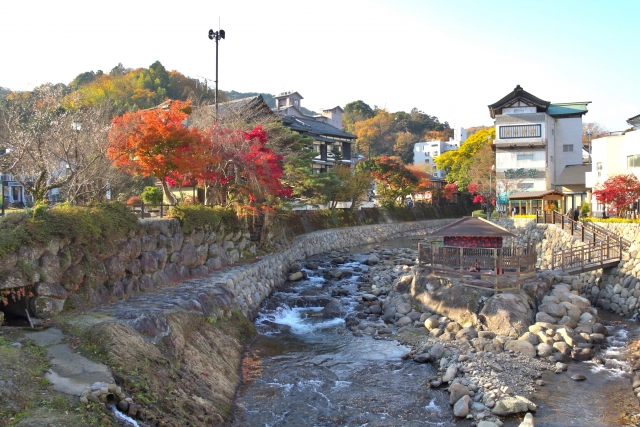
Popular attractions near Shuzenji:
- Shuzenji Bamboo Path : Walk through the beautiful bamboo grove while immersing yourself in the sacred atmosphere.
- Shuzenji Temple : Pay a visit to the symbolic temple located in the heart of the city.
- Joren Waterfall : The perfect spot for a refreshing stroll along with the scenic waterfall.
Take the limited express JR Odoriko from Shinagawa station that will take you to Shuzenji Station without transfer (2 hrs, ¥4,800). You can also take the Shinkansen to JR Mishima station and transfer to the Izu Hakone Railway.
9. Manza Onsen (Gunma)
Located at 1,800 meters above sea level, Manza Onsen welcomes visitors with some of the most fascinating landscapes that you can enjoy from an onsen. Manza Onsen is a part of Joshinetsu-Kogen National Park that covers vast areas including Gunma, Nagano, and Niigata prefecture across borders. The milky-white water contains a large amount of sulfur, which has a positive effect on your blood flow and metabolism. It is also known as a perfect ski destination during the winter season !
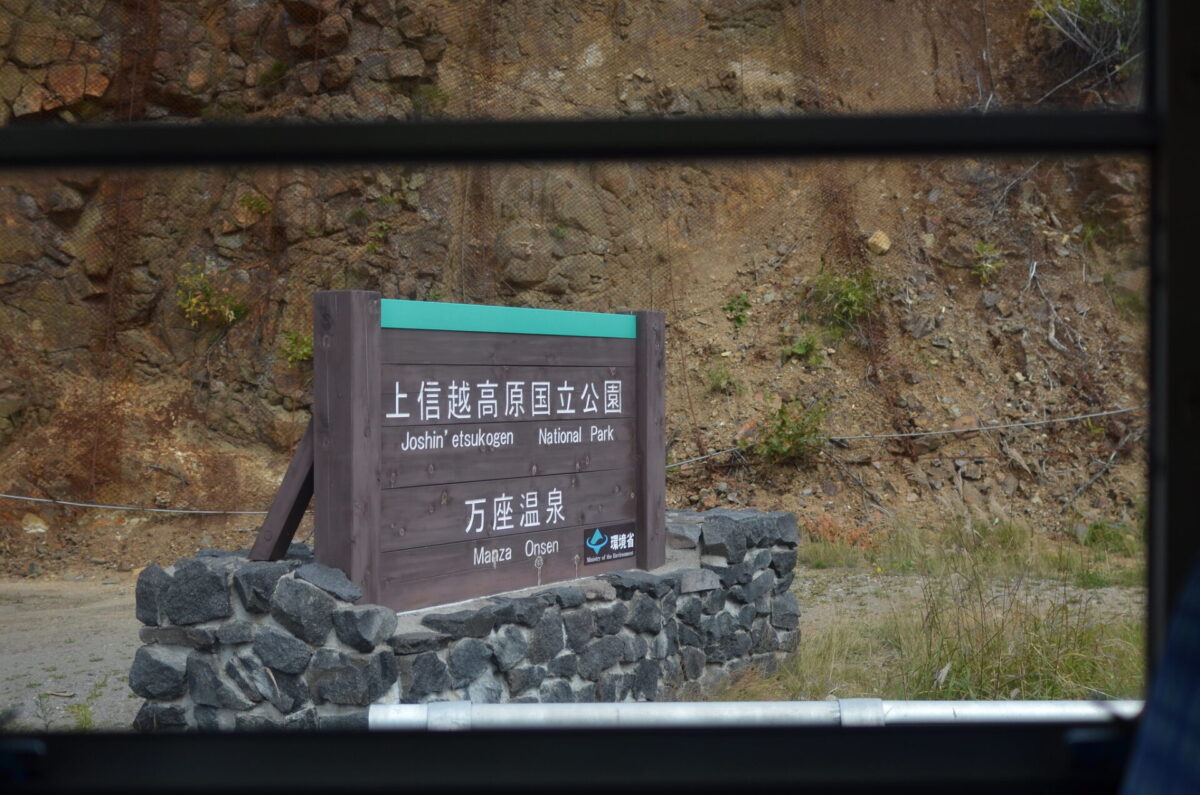
Popular attractions near Manza Onsen
- Manza Onsen Prince Ski Resort : Enjoy an exciting ski experience and refreshing hot springs!
- Manza Onsen Nisshinkan : Treat yourself to the open-air hot spring and buffet-style dishes!
Take the bus, Shinkansen, or local train to Karuizawa Station or Kazawaguchi Station. Transfer to the Seibu Kanko Bus and get off at Manza Bus Terminal (3-4 hrs, ¥5,000- ¥9,000, depending on your mode of transportation).
10. Shima Onsen (Gunma)
Shima is a nostalgic onsen resort stretching about 4 km along the Shima river running through Gunma prefecture. It consists of 5 districts that each feature unique tourist attractions and traditional Japanese ryokans.
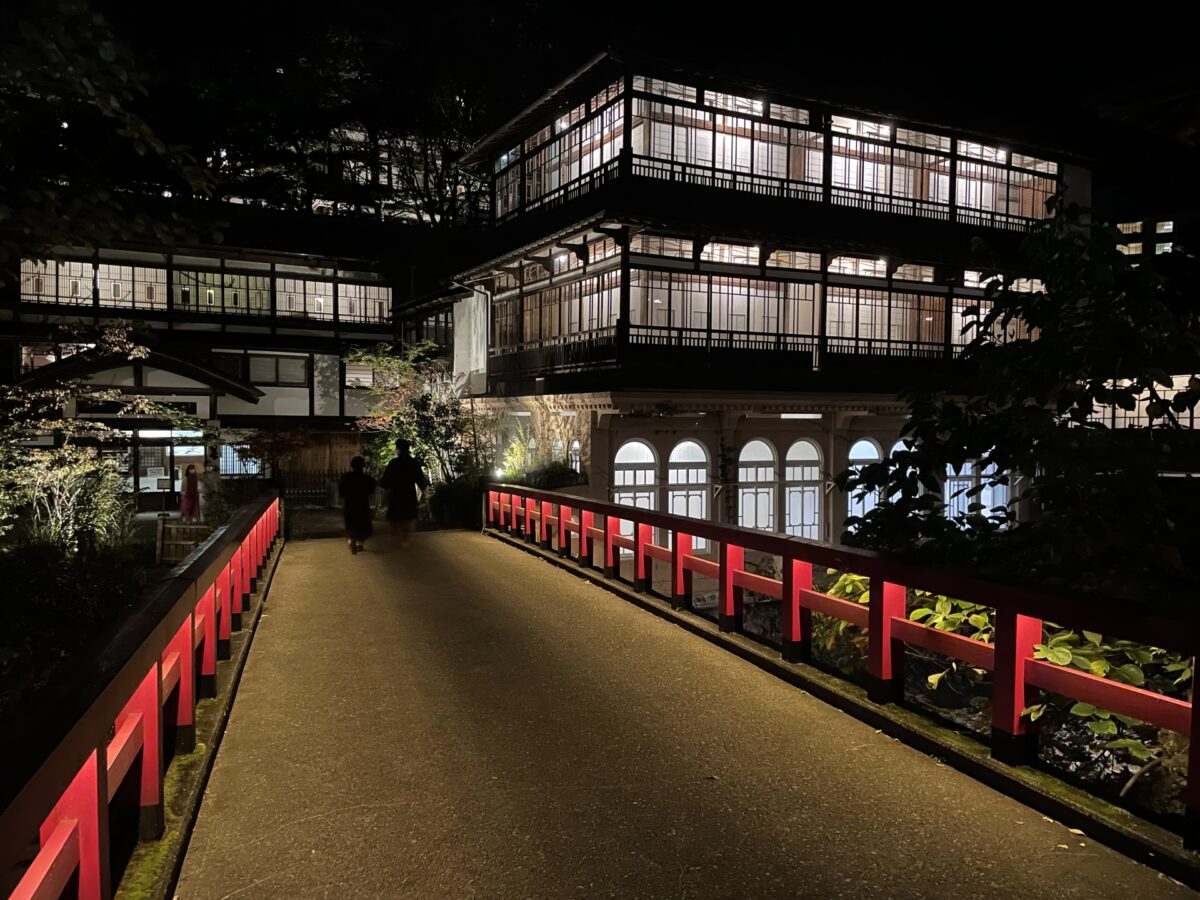
Sekizenkan is one of the most famous and renowned ryokan offering amazing services. The main building is known as the oldest wooden onsen facility in Japan and is designated as a Important Cultural Property. It is also said that the bath house of Spirited away , the world-famous Ghibli movie, is modeled after the building and the iconic red bridge in front!
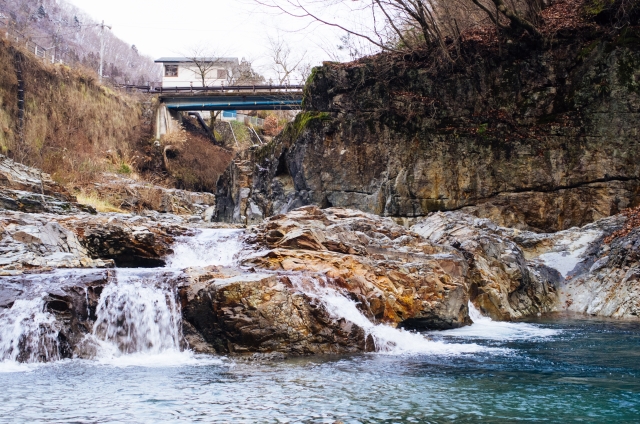
Popular attractions near Shima Onsen
- Okushimako : Take a refreshing stroll around the beautiful artificial lake while exploring the surrounding nature that changes for each season!
- Shima no Oketsu : Naturally created potholes that can be spotted in the crystal-clear flow of Shima river.
Taking the highway bus is the easiest and cheapest way to get to Shima Onsen from Tokyo (3.5 hrs, ¥3,150).
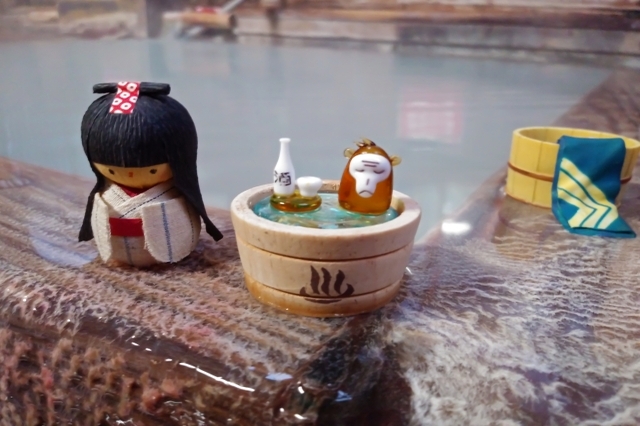
It can be a little bit challenging to take a public bath if you have no onsen experience before. You may feel embarrassed in the beginning, but gradually get used to it and start to feel comfortable as you soak your body in the relaxing hot water. It is also enjoyable to combine your onsen trip with exploring the surrounding area and trying local food or visit famous tourist attractions. You might think winter is not suitable for onsen because of the cold weather, but it is actually the perfect season to enjoy it as the temperature of onsen is generally higher than usual bath. Let yourself unwind in the natural-heated hot springs while enjoying the stunning sceneries created by the white snow!
▼Book our izakaya-hopping tour in Shinjuku!

Japan Wonder Travel is a travel agency that offers guided tours throughout Japan. From private walking tours to delicious Food and Drink tours, we can help organize the best tours just for you! If you want to explore Japan and learn more about the history and backstories of each area you are traveling in, our knowledgeable and friendly guides will happily take you to the best spots! In addition, we can provide you with any assistance you may need for your upcoming trip to Japan, so please feel free to contact us if you have any questions or need some help!
▶ Tokyo Tsukiji Fish Market Food and Drink Tour Explore the most lively and popular fish market in Tokyo, where you will have the chance to try some of the local’s favorite street foods and sake along with your friendly English-speaking guide!

▶ Tokyo 1–Day Highlights Private Walking Tour (8 Hours) There’s no better way to explore an area than taking a tour with a knowledgeable local guide. You will have the chance to learn about the history and interesting background stories of Tokyo, as well as discover some hidden gems which can be hard to do without a guide.

▶ Shinjuku Bar Hopping Tour: Experience Tokyo’s Nightlife in Izakaya Check out the best spots in Shinjuku while bar hopping through the lively and vibrant area. Try some delicious local food and drink as you explore the narrow yet photogenic alleys that the town has to offer. Experience Japanese izakaya culture and drink in Shinjuku like the locals!
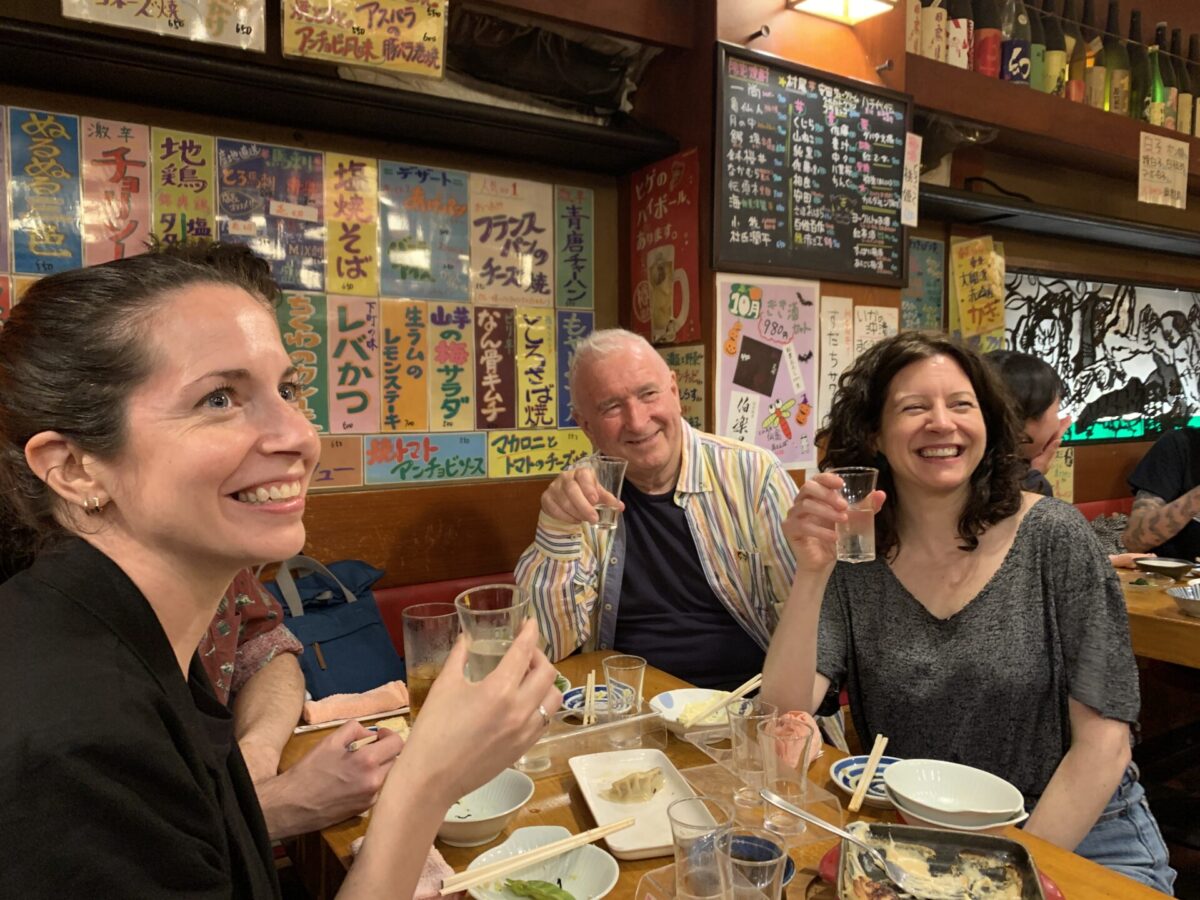
Follow us on Instagram or Facebook for more travel inspiration. Or tag us to get featured!
Happy traveling!
Stay informed of the best travel tips to Japan, the most exciting things to do and see, and the top experiences to have with the Japan Wonder Travel Newsletter. Once every two weeks we will introduce you to our latest content.

This post contains some affiliate links. When you click through and make a purchase we may receive some commission, at no extra costs to you.

- Popular destinations
- Hidden places in Japan
- Tours and workshop
- Food and drink in Japan
- Itinerary in Japan
- Places to visit in Tokyo
- Food and drink in Tokyo
- Seasonal events
- Tours & workshops
- Tokyo This Week
- Day trip from Tokyo
- Itinerary in Tokyo
- Places to visit in Kyoto
- Food and drink in Kyoto
- Itinerary in Kyoto
- Day trip from Kyoto
- Travel tips
- Accommodation
- Cultural tips
- Transportation
- Tokyo Tours
- Kyoto Tours
- Kimono Rental
- Fukushima Tours
- Mount Fuji Tours
- Tour Package
- Media Kit(English/日本語)
- 100% tailor made
- 100% value guarantee
- Expert consultant
- Ground support
- No hidden cost
- Why Tailor-made Travel ?
- Our Promise
- Responsible tourism
- Best & Reasonable Price

- Thailand and Vietnam
- Thailand and Cambodia
- Thailand Vientam Cambodia
- Vietnam and Cambodia
- Southeast Asia Tours
- Japan Tours
- Japan Family Tours
- Japan Senior Tours
- Japan Food Tours
- Japan Autumn Tours
- Japan Nature Tours
- Japan Walking&Hiking Tour
- Custom Japan Honeymoon
- China Tours
- China Guides
- Thailand Tours
- Thailand Guides
- Vietnam Tours
- Vietnam Guides
- Cambodia Tours
- Cambodia Guides
- Indonesia Tours
- Philippines Tours
- Tailor-Made Trip
- expert consultant
- ground support
- no hidden cost
- Japan Travel Guide
Tokyo Onsen Guide: The Best Hot Springs In and Near Tokyo
Are there onsens in Tokyo? Tokyo Onsen , or Tokyo Hot Springs , may not be as famous as other hot springs such as Beppu Onsen and Ginzan Onsen among all the Onsen Japan , there are also excellent hot springs worth visiting during your trip to Tokyo. If you visit neighboring hot spring areas such as Hakone and Nikko, you can enjoy also delicious Japanese food in Japanese-style buildings and explore the best onsen village near Tokyo. Here is the ultimate guide to the best onsen in Tokyo, the popular onsen town near Tokyo, Tokyo hotel with onsen, tattoo friendly onsens Tokyo, and a transportation guide to the onsen city near Tokyo.
Table of Contents
1. 10 Best Onsens in Tokyo
2. Top 8 Onsen Towns Near Tokyo
3. Tattoo Friendly Onsen in Tokyo
4. Recommended Tokyo Onsen Ryokan
5. Transportation Guide to Onsen Town Near Tokyo
1. 10 Best Hot Springs in Tokyo
There are so many best places in Japan for onsen , does Tokyo have good onsen? Tokyo is a vibrant and modern city in Japan, but it's also a place with an abundance of hot springs. Here are some great places to soak in hot springs in and around the Tokyo city area, enjoying the Tokyo private onsen.
●Spa LaQua: Enjoy the Best Natural Hot Spring in Tokyo
LaQua Spa is not a hot spring facility, but more specifically a spa where you can experience onsen Tokyo. It is located on the 5th to 9th floors of the LaQua building in TOKYO DOME CITY. Spa Laqua Tokyo is surrounded by various railroad routes, making it very convenient for travelers to depart from Tokyo Station or Shinjuku. The Spa LaQua uses natural hot spring water, "Sodium Salt Spring", which gushes out of the ground under TOKYO DOME CITY, and is good for sore shoulders and necks, cold hands and feet, and fatigue recovery. In addition, this hot springs Tokyo has excellent moisturizing and heat preservation properties, so it is a good place to go for beauty treatments.
Address: 1 Chome-1-1 Kasuga, Bunkyo City, Tokyo 112-0003, Japan
Hours: Closed at 9:00 AM
Phone: +81 3-3817-4173
● Thermae Yu Shinjuku Tokyo: Experience the Super Public Bath in This Natural Hot Springs
Newly opened in August 2015, Thermae Yu is located in the Shinjuku Ward, which is the next street from Kabukicho. In the hustle and bustle of Shinjuku, a place that never sleeps, Thermae-Yu is exceptionally peaceful. The spacious bath in the Thermae Yu Shinjuku is filled with highly concentrated bubbling carbonated spring water, which is known for its beauty-enhancing properties. Since this is a newer onsen Shinjuku Tokyo, the environment and facilities from indoor to outdoor, from changing rooms to relaxation rooms are all new and clean in the Thermae Yu Tokyo.
Address: 1 Chome-1-2 Kabukicho, Shinjuku City, Tokyo 160-0021, Japan
Hours: Open 24 hours
Phone: +81 3-5285-1726
● Times SPA RESTA: A Spa in Tokyo Featuring Indoor and Outdoor Hot Baths
Times SPA RESTA is located in Ikebukuro, a shopping paradise, next to the famous Sunshine City Ikebukuro. It is an elegant spa club that is only an eight-minute walk from Ikebukuro Station. The well-designed spring pool on the top floor creates a high-end feel like a Western-style hotel, and this hot springs in Japan Tokyo is very popular among female office workers.
Address: Japan, 〒170-0013 Tokyo, Toshima City, Higashiikebukuro, 4 Chome−25−9 12F タイムズステーション池袋10F
Hours: Closed at 8:30 AM
Phone: +81 3-5979-8924
● Asakusa Rox Matsuri Yu: Featuring Open-air Bath with a Stunning View of Tokyo Skytree
Asakusa Rox Matsuri Yu , which is open all year round until late at night, can be reached in less than 10 minutes from the station. There are as many as hot spring baths and 3 types of saunas, so you can choose from a wide variety of options to experience hot spring in Tokyo. Best of all, the open-air hot springs of Asakusa Rox Matsuri Yu offer a great view of Tokyo's first landmark, the SKYTREE, which is one of the best views in Tokyo
Address: Japan, 〒111-0032 Tokyo, Taito City, Asakusa, 1 Chome-25-15 ROX 7th floor
Phone: +81 3-3845-7526
● Toshimaen Niwa No Yu: Best Onsen Day Trip from Tokyo
When it comes to the best onsen in Tokyo, how can we ignore the Toshimaen Niwa No Yu Onsen , a one-day hot spring facility located next to a quiet Japanese garden of approximately 1,200 square meters? At Toshimaen Niwa No Yu Tokyo, you can enjoy a relaxing onsen while admiring the Japanese garden with its seasonal flowers and grasses. The hot springs of Toshimaen Niwa No Yu are divided into men's area, women's area, and a mixed-gender area (with swimsuits), so you can enjoy the Japanese hot springs with friends and family. There are also 3 kinds of saunas, massages, and SPA here, which can definitely make people relax completely. After taking a bath, you can also enjoy delicious food in this best onsen in Tokyo for foreigners.
Address: 3 Chome-25-1 Koyama, Nerima City, Tokyo 176-8531, Japan
Hours: Closed at11 PM
Phone: +81 3-5984-4126
● Tokyo Somei Onsen SAKURA: Enjoy the "Beauty's Hot Spring" in Tokyo
When it comes to the best onsen in Tokyo, how can we ignore the Somei Onsen SAKURA , which is located an 8-minute walk from Sugamo Station Exit A1 and a 10-minute walk from Komagome Station Exit 3? It is a "high-end hotel" concept, where you can spend time relaxing in a calm and modern space. The natural hot spring gushes out from 1,800 meters underground at a high temperature of 48.8 degrees. Tokyo Somei Onsen SAKURA is rich in minerals. It is said that soaking in hot water will make the skin smooth, and moisturize the skin. This Japan hot springs Tokyo also is perfect for relaxing after a tiring journey.
Address: 5 Chome-4-24 Komagome, Toshima City, Tokyo 170-0003, Japan
Hours: Closed at 11:00 PM
Phone: +81 3-5907-5566
● Maenohara Onsen Sayano Yudokoro: A Tokyo Onsen with Salt Sauna and Rock Bath
Maenohara Onsen Sayano Yudokoro basically meets tourists' requirements for Tokyo hot springs. The indoor bath has a high-concentration carbonated spring, and three types of massage pools, a shower, a sitz bath, and a cold water bath. The open-air hot spring is also great, which is a courtyard-style hot spring with a relatively high water temperature and three pots of hot springs. On a good day, you can also see the stars and clouds when dipping yourself in this onsen in Japan Tokyo. There are two saunas, one of which is a sauna with salt, to offer a very unique experience. There is a rock bath on the second floor.
Address: 3 Chome-41-1 Maenocho, Itabashi City, Tokyo 174-0063, Japan
Hours: Closed at 12:00 AM
Phone: +81 3-5916-382
● Tokyo Odaiba Oedo Onsen Monogatari: One of the Best Onsens in Tokyo That Is Permanently Closed
Tokyo Odaiba Onsen Monogatari is a natural hot spring facility where you can soak in natural hot springs that are very rare in Tokyo. Its spring water comes from weakly alkaline spring water that gushes out 1,400 meters underground. It is helpful for people with cold hands and feet, muscle pain, and other symptoms. In addition, Odaiba Tokyo Oedo Onsen Monogatari also features baths such as the "kini-no-yu" that promotes blood circulation and cleans pores, and the "hot spring fish therapy" that removes old dead skin cells. In addition to soaking in hot springs, you can also choose your favorite yukata at Odaiba Oedo Onsen Monogatari, enjoy delicious food in 17 restaurants, or experience interesting games such as shuriken and ninja blowguns. Ooedo Onsen Odaiba is a place where both adults and children can enjoy themselves. Regrettably, Odaiba Tokyo Oedo Onsen is permanently closed. When there is another new Odaiba onsen in Tokyo, we will keep updating.
Address: 2 Chome-6-3 Aomi, Koto City, Tokyo 135-0064, Japan
Phone: +81 3-5500-1126
● Musashi Koyama Onsen Shimizu Yu: A Well-known Sento in Tokyo Popular among Female
Musashi koyama onsen shimizu yu is a local sento that has been in use since 1924. It is located on the west side of the center of Tokyo. It is very convenient to get from Shinagawa and Shibuya. The peculiarity here is that there are only two hot springs available. In addition to Tokyo's unique black hot spring, you can also enjoy a golden hot spring that shines with gold color. In addition, this Tokyo onsen is also equipped with rock bath facilities (extra fee needed), which is very rare in sento in Japan. This Tokyo Sento is very popular and well-known among female customers. Because this is the best sento in Tokyo, it can be quite crowded, so please keep in mind.
Address: 3 Chome-9-1 Koyama, Shinagawa City, Tokyo 142-0062, Japan
Phone: +81 3-3781-0575
● Spadium Japon: The Largest Hot Spring Paradise in the Kanto Region
How can you travel to Japan without taking a hot spring bath? But options on the best Onsens in Tokyo are limited. " Spadium Japon " is only about 30 minutes away from Ikebukuro, making it the best onsen day trip from Tokyo. There are 15 natural hot springs and 5 rock baths in Spadium Japon for everyone to enjoy. The hot spring water here is taken from the same water source as "Higashikurume Musashino Hot Spring". It is collected from an underground area between 1,200 meters and 1,500 meters. It has 37-38 degrees transparent springs, which is rare in the Kanto region. The spring water contains a large amount of bicarbonate, which has beauty and skin-beautifying ingredients. It can effectively remove exfoliation, skin keratin, and dirt. It is known as the "miracle skin-beautifying hot spring". In addition, because the concentration of ingredients is close to the human body, it is easy to absorb hot spring ingredients. The pH value is slightly alkaline at 7 to 8. The hydrogen ion index is almost the same as natural water. Therefore, it is also a hot spring suitable for children and the elderly.
Tips on Spadium Japon Tattoos: Small covered tattoos are allowed as long as they are covered and they sell tattoo seals to hide them. Large tattoos are not allowed.
Transportation: Take the Seibu Ikebukuro Line to the east exit of "Higashi-Kurume Station", change to a Seibu Bus, and get off at "Higashi-Kurume Danchi Station".
Dip yourself in the private onsen Tokyo to relieve your tiredness for the wonder time of the next day's Tokyo tour itinerary. If you head to Kyoto after you finish your Tokyo Onsen tour, a guide to the best hot springs in Kyoto will be helpful for you to experience different Onsen in Japan.
2. Top 8 Hot Springs Near Tokyo
When it comes to the "keywords" for traveling in Japan, "onsen" is a must! Don't think that all of Japan's 3,000 hot springs are far away from the city. In fact, there are several excellent hot springs not far from Tokyo, including Kusatsu Onsen, which is the top 1 famous onsen in Japan. Let's check out the best Onsen near Tokyo here.
● Kusatsu Onsen: Visiting the Yubatake and Experiencing the Yumomi Performance
Kusatsu Onsen is Japan's number one hot spring in terms of natural spring water, with a staggering 4,000 liters per minute or more of source water. The water, which gushes out from over a hundred outlets, is 100% natural and is not heated, boiled, cooled, or recycled in any way, but is piped through wooden pipes to reduce the temperature of the hot water and transported to various onsen facilities and ryokan in Kusatsu.
Yubatake is located in the center of Kusatsu Onsen Gunma Prefecture and is an enclosed source of hot spring water about the size of a soccer field, with clouds of white smoke rising from everywhere. The pungent odor that you can smell when you are standing around Yubatake is the smell of sulfur. Even though some people are not used to it, it is undeniable that it is this unique smell that creates the premium enjoyment of Kusatsu Onsen Japan. When visiting Kusatsu Onsen Gunma, be sure to experience the traditional "yumomi dance", (stirring of the hot spring water) at Kusatsu Onsen Netsunoyu, which aims to evenly mix the medicinal elements in the hot spring, lower the temperature, and increase the therapeutic effect.
How to Go to Kusatsu Onsen from Tokyo:
(1) JR Limited Express + Bus: JR Ueno Station → JR Naganohara Kusatsuguchi Station → Take the bus to Kusatsu Onsen
(2) Highway Bus: Take the bus from Shinjuku West Exit Bus Station to Kusatsu Onsen.
● Atami Onsen, Shizuoka: Take a Dip in an Island Resort-style Seaside Hot Springs near Tokyo
Atami on the east coast of the Izu Peninsula in Shizuoka Prefecture has always been a popular hot spring spot in Japan. Atami Onsen Shizuoka is only a 40-minute Shinkansen ride from Tokyo. It is very convenient to soak in hot springs and enjoy the sea view from Tokyo. It is also a cherry blossom viewing spot not to be missed during the cherry blossom season . Atami and the Izu Peninsula are rich in Onsen Ryokan resources, as well as coveted local seafood. But if you go to Atami hot springs in the summer, you need to book an Atami Onsen Ryokan at least one month in advance because it coincides with the fireworks display.
Hot to get to Atami Onsen from Tokyo: Take the "JR Tokaido Shinkansen" from Tokyo Station to Atami Station.
● Nozawa Onsen: Enjoy the Onsen Close to Tokyo after Skiing
Nozawa Onsen is generally hot, and some of the hot springs are large with two pools of different temperatures. It may be hard to get used to it at first, but once you do, you will feel great, and you can turn on the cold water faucet to cool it down properly, but do remember to turn off the water when you feel it's okay or when you leave. In addition, there are some basic onsen etiquettes such as washing your body before entering the bath, do not soak for too long time as you will feel dizzy, etc.
The Nozawa hot springs are not open 24 hours a day, and are closed from 11:00 p.m. to 5:00 p.m. the next day. Occasionally it will be temporarily closed for a few hours due to cleaning and filming.
How to get to Nozawa Onsen from Tokyo: Take the Hokuriku Shinkansen to Iiyama Station from Tokyo Station. The journey typically takes around 1.5 to 2 hours. Then transfer to the bus from Iiyama Station, and take a bus to Nozawa Onsen. The bus ride is approximately 25 minutes.
● Hakone Onsen: The 17 Hot Springs of Hakone Await You to Experience
Located a short distance from Tokyo, Hakone is a famous hot spring town in Japan and is well-known around the world. There are many wonders in Hakone, such as the Owakudani Valley, the remains of a volcano that has been smoldering for 2,000 years. There are famous Hakone 7 Baths (seven hot springs) and Hakone Hachiri (historical sites). It's no wonder why it's so popular. Other facilities and attractions to visit in addition to the Hakone Onsen include Hakone-Yumoto Shopping Street, Taikanzan, Hakone Venetian Glass Museum (Glass Forest), Hakone Gōra Park, and Hakone Shrine.
Access to Hakone Onsen from Tokyo: Just take the Odakyu Electric Railway (Shinjuku→Hakone-Yumoto) from Shinjuku, Tokyo.
● Kinugawa Onsen: One of the Hidden Gems Worthy Visit among Japanese Hot Springs
Kinugawa Onsen is located along the Kinugawa River in Nikko National Park and is one of the most representative and favorite hot springs in the Northern Kanto region of Japan, so a visit to Onsen Kinugawa Japan is a must. This Onsen town near Tokyo has been in existence for more than 300 years and has been known as the "town of secret hot springs" since ancient times, but it was not until the Meiji period that this beautiful mountain hot spring was opened to the general public. Today, Kinugawa Onsen has grown into one of Japan's famous Onsen Towns, with nearly 100 Kinugawa Onsen hotels lining the Kinugawa Valley.
How to get to Kinugawa Onsen from Tokyo:
Take the "Tsukuba Express" from Tokyo Akihabara Station to Kitasenju Station, transfer to the "Nikko/Kinugawa" train to Kinugawa Onsen Station, and walk for 5 minutes from the station.
● Takaragawa Onsen, Gunma: Enjoy the Open-air Mixed Gender Bath in Japan
In addition to the famous Kusatsu Onsen, Tone-gun in the northern part of Gunma Prefecture also has some excellent hot springs such as Takaragawa Onsen , and a number of superb ryokans with private onsen. Among them, the Takaragawa Onsen Osenkaku has the largest open-air mixed-sex bathing hot spring in Japan. You must take a dip in this mixed bath when you come to Gunma!
Opened in 1923, Takaragawa Onsen Onsenkaku was built next to the Takaragawa River and is the largest open-air hot spring in Japan with a natural forested landscape. The biggest feature of Takaragawa Onsen Osenkaku Japan is that it has 3 large mixed-gender areas and 1 female-only bath. Among them, the "子宝の湯" has an area of 330 square meters, which is really huge! The spring water gushing from four springs with a capacity of 1800 liters per minute is really spectacular! You can also enjoy the superb natural scenery while soaking in Takaragawa Onsen Japan, and the snow scenery here in winter is also beautiful.
Address: 1899 Fujiwara, Minakami, Tone District, Gunma 379-1721, Japan
How to get to Takaragawa Onsen : You can take the free shuttle bus from JR Kamige-Kogen Station or Minakami Station.
● Lake Kawaguchi Onsen: Soaking in the Japanese Onsen with Mt Fuji View
Lake Kawaguchi Onsen is located in Lake Kawaguchiko at the foot of Mt. Fuji, a symbol of Japan's hot spring area, from where you can see Mount Fuji up close and experience the stunning views of Mount Fuji and the natural hot springs. When the weather is good, you can also try to see if you can take a picture of Mount Fuji in reverse. The spring quality of Fuji Lake Kawaguchi Onsen is sodium, calcium, sulfate, and chloride spring. Fuji Kawaguchiko Onsen is very suitable for travelers who want to take a bath in a hot spring while admiring the spectacular Mount Fuji, or for those who want to visit Tokyo.
Address: Kawaguchi, Fujikawaguchiko Town, Minamituryu County, Yamanashi Prefecture 401-0304 Japan
How to get to Kawaguchiko Onsen from Tokyo: JR Shinjuku Station → JR Otsuki Station → Transfer to the Fujikyu Express → to Lake Kawaguchiko
● Shibu onsen: Experience the 9 Public Bathhouses in the Hot Spring Street
Shibu Onsen is located in Yamanouchi Town, Shimotakai County, Nagano Prefecture, and has a history of more than 1,300 years. Shibu Onsen has a unique landscape due to the addition of complex wooden buildings from the Taisho to the early Showa period of Japan. One of the famous features of Shibabu Onsen Nagano is experiencing 9 public baths, which are nine outdoor baths that are open to residents free of charge. Not only do these nine public bathhouses have different names, but they also have different effects on hot springs. The "Kanaguya" hotel is highly recommended as a tourist attraction in Shibu Onsen Japan, whose atmosphere and special design are indeed worth a visit.
How to get to Shibu Onsen Japan : Take the Nagano Dentetsu-Nagano Line to Yudanaka Station. And then walk for a half-hour or take a short taxi ride to arrive at Shibu Onsen.
Overall, there are many great places to soak in onsens near Tokyo, whether you want to experience a traditional Japanese onsen or a modernized onsen theme park, there is something to suit every visitor's needs. Whether it's the cold winter or the hot summer, soaking in a hot spring in Japan is a great way to relax. Which one do you think is the best onsen near Tokyo? Leave us a message to tell us which Japanese onsen near Tokyo do you want to visit the most?
3. Tattoo Friendly Onsen Tokyo
Most of the Onsens in Japan don't allow visitors with tattoos; fortunately, there are still a few tattoo-friendly Onsens welcome tourists. Is there any tattoo friendly onsen in Tokyo? Here are some Tokyo onsens that allow tattoos for you to enjoy the private onsen in Tokyo without any worries.
● Mikokuyu: Tokyo Tattoo Friendly Onsen to View the Tokyo Skytree
Mitaniyu is located in the middle area between Kinsincho, which is famous for its bustling streets, and Oshiage, where the Tokyo Skytree is located. The open-air bath of the Mikokuyu onsen is a great spot to overlook the Tokyo SkyTree. It was just renovated in 2015 and is characterized by a modern and stylish interior decoration. In addition to the "Mount Fuji painting" that is typical of sento baths, Mikokuyu Tokyo also has tile paintings based on the "red and white plum screen". It is an onsen in Tokyo that allows tattoos.
Address of Mikokuyu Bathhouse: 3 Chome-30-10 Ishiwara, Sumida City, Tokyo 130-0011, Japan
Hours: Closed at 2:00 AM
Phone: +81 3-3623-1695
● Togoshi Ginza Onsen: Dipping into the Black Water Hot Springs to Beautify Your Skins
Togoshi Ginza Onsen is a Japanese-style bathhouse that welcomes tattoos. It was built in 1960 and underwent major renovations in 2007. The overall style has been completely renewed, combining traditional style with modernity. It is a must-visit place for many people when they come to Togoshi Ginza. More importantly, Togoshi Ginza Onsen has the very rare natural hot spring in Tokyo, Kuroyu Hot Spring. There are very few natural hot springs in Tokyo, and Kuroyu Hot Spring is rare in Japan. The water quality of Togoshi Ginza Onsen is transparent and slightly black, so it is called beauty hot spring. After soaking the Togoshi Ginza Onsen, you will feel your skins refreshed and smooth. Girls who like skincare should not miss this Onsen in Tokyo.
Address: 2 Chome-1-6 Togoshi, Shinagawa City, Tokyo 142-0041, Japan
Hours: Closed at 1 AM
Phone: +81 3-3782-7400
● Koganeyu: Tattoo-friendly and Serving Beer on-site to Enjoy a Good Sento Experience in Tokyo
Koganeyu Tokyo features a harmonious blend of traditional and contemporary styles, attracting a diverse and youthful crowd, particularly women. With a variety of baths available, including a scorching sauna exceeding 100℃, patrons can experience the invigorating contrast of a very cold water bath, registering below 10℃, all while basking in the rejuvenating outdoor air. Renowned as one of Tokyo's premier sauna public baths, Koganeyu onsen stands out for its inclusive policy toward tattoos and boasts an impressive selection of quality beers to savor afterward. A visit to Koganeyu Sento is highly recommended for a unique and refreshing experience.
Address: 4 Chome-14-6 Taihei, Sumida City, Tokyo 130-0012, Japan
Hours: Closed at 12:30 AM
Phone: +81 3-3622-5009
For more options on tattoo friendly onsens Tokyo, we will try our best to figure out and keep updating the onsens in Tokyo that allow tattoos. Stay tuned.
Onsen Hotels in Tokyo: Experience a Tokyo Ryokan with Private Onsen
There are so many funny things and stunning views and iconic attractions to explore in Tokyo. After a tiring day trip, a relaxing soak in the soothing hot springs at a Ryokan is a great satisfaction. Is there any onsen Tokyo hotel where you can experience the ryokan in Tokyo with onsen? Yes, here are our three best hand-pick hotels with onsen Tokyo to enjoy the Tokyo Ryokan Onsen and you can choose your favorite one according to your itinerary schedule.
● Mitsui Garden Hotel Nihonbashi Premier
Mitsui Garden Hotel Nihonbashi Premier Tokyo is a very good Tokyo hotel with onsen in Japan. The hotel is located on Nihonbashi's main street, providing easy access to many restaurants and shops. The area is not too crowded and it feels nice walking down the street. Mitsui Garden Hotel Nihonbashi Premier / Tokyo includes hot spring facilities. The large public bath is one of the attractions of the Mitsui Garden Hotel Nihonbashi, which is a bonus for visitors after a long day tour, as it is very helpful for taking a bath to relieve fatigue after a tiring day. The hot spring in the Mitsui Garden Nihonbashi is clean and tidy, and the quality and hospitality here are top notch throughout the stay. You will like the Japanese bath in this Tokyo onsen hotel.
Address: Japan, 〒103-0022 Tokyo, Chuo City, Nihonbashimuromachi, 3 Chome−4−4 9階
Phone: +81 3-3270-1131
● Yuen Shinjuku
Onsen Ryokan Yuen Shinjuku is located in the Shinjuku area, which is very convenient for transportation and shopping. The source of the high-rise open-air hot springs in the Yuen Shinjuku Onsen Ryokan is from Hakone, so you don't have to go all the way to Hakone to experience the same therapeutic benefits. The large indoor bath of Onsen Yuen Shinjuku is filled with yuzu, calamus, ginger, etc. in accordance with the seasons, so you can experience the change of seasons and Japan's unique bathing culture while soaking in the Yuen Shinjuku hotel.
Address: 5 Chome-3-18 Shinjuku, Shinjuku City, Tokyo 160-0022, Japan
Phone: +81 3-5361-8355
● Onyado Nono Dormy Premium Asakusa Natural Hot Springs
Is there a natural Tokyo hot spring hotel in Asakusa? Yes, among the Onyado Nono series of the Dormy Inn Hotel, which is based on the concept of "Japanese-style inns in the city", its Asakusa branch, Onyado Nono Asakusa Hot Springs offers a natural hot spring "Kuroyu" that is rich in minerals. Onyado Nono Asakusa natural hot spring also features semi-open-air baths and saunas. A one-night stay at Onyado Nono Asakusa for two people costs about 15,000 to 20,000 yen, which is a good value in terms of cleanliness, abundant facilities, and spaciousness of the room among hotels with onsen Tokyo.
Transportation to Onyado Nono Asakusa Natural Hot Springs: About 8 minutes walk from Asakusa Station on Ginza Line.
Address: 2 Chome-7-20 Asakusa, Taito City, Tokyo 111-0032, Japan
Phone: +81 3-5830-0510
Apart from these three Tokyo onsen ryokans, there are also some other Tokyo hotels with private onsen, such as Onsen Ryokan Yuen Bettei Tokyo Daita , Ryokan Kamogawa Asakusa , Villa Fontaine Grand Tokyo Ariake , etc. If you have a special preference for the Onsen Hotel Tokyo or Onsen Ryokan Tokyo, don't hesitate to contact us .
5. Transportation Guide to Onsen Town near Tokyo
As we all know there are many excellent hot springs near Tokyo, and because of the convenient location, it is easily accessible to these onsens near Tokyo. Check out the transportation guide to the best onsen close to Tokyo here.
●How to get to Kusatsu Onsen from Tokyo?
How far is Kusatsu Onsen from Tokyo? You can take JR and then transfer to a bus, or take the highway bus from Tokyo to Kusatsu Onsen:
1) Take the Hokuriku Shinkansen from Tokyo Station to Karuizawa Station for about 1 hour and 10 minutes, then transfer to take a bus to Kusatsu Onsen in about 1 hour and 20 minutes.
Time required: approximately 2 hours and 40 minutes, excluding transfer time
2) Take the Highway bus from Shibuya at Shibuya Mark City 5F to arrive at Kusatsu Onsen.
Time required: 4 hours and 40 minutes, excluding transfer time
3) Take the JR Highway Bus from Tokyo Station/Shinjuku Station to Kusatsu Onsen.
Time required: 4 hours and 30 minutes, excluding transfer time
●How to Get to Hakone Onsen from Tokyo?
How far is Hakone Onsen from Tokyo? From Tokyo Station, take the "Tokaido Shinkansen" to "Odawara" station and transfer to the Hakone Tozan Railway to "Hakone Yumoto" station. In addition, there is also a direct bus from Tokyo Station to Hakone "Togendai" "Station, which takes about 125 minutes.
●How to get from Tokyo to Nozawa Onsen?
How far is Nozawa Onsen from Tokyo? Take the Hokuriku Shinkansen from Tokyo Station, get off at Iiyama Station in 1 hour and 39 minutes at the fastest, and transfer to the "Nozawa Onsen Liner" bus that goes directly to Nozawa Onsen. Check Nozawa Onsen from Tokyo for more details on various transportation options to Nozawa Onsen by Bus & Taxi, or by train.
● How to Get to Ginzan Onsen from Tokyo?
Take the JR Yamagata Shinkansen from Tokyo to JR Oishida Station, which takes about 3.5 hours, then transfer to the Obanazawa Municipal Bus up the mountain, which takes about 40 minutes directly to Ginzan Hot Spring.
● How to Get to Takaragawa Onsen from Tokyo?
From Tokyo Station, how to get to Takaragawa Onsen ? Take the Joetsu Shinkansen for about 75 minutes to Jomo-Kogen Station and transfer to a bus bound for Minakami Station for about 25 minutes. After arriving at Minakami Station, you can take the bus directly to Takaragawa Onsen and then arrive in about 35 minutes.
● How to Get to Shibu Onsen from Tokyo?
When it comes to Tokyo to Shibu Onsen , you can take the Hokuriku Shinkansen from Tokyo Station to get off at Nagano Station in about 1.5 to 2 hours. Then transfer to the Nagano Dentetsu Line (Nagaden Line) towards Yudanaka Station, which takes approximately 45 minutes. From Yudanaka Station, you can take a bus or taxi to Shibu Onsen. The bus ride is about 10 minutes, and taxis are also readily available.
● How to Get to Zao Onsen from Tokyo?
Take the Yamagata Shinkansen from Tokyo Station to Yamagata Station for about 2.5 to 3 hours, then transfer to the Senzan Line and head to Yamagata Zao Station in around 40 minutes. Finally, you can take a bus or taxi to Zao Onsen from Yamagata Zao Station. The bus ride is approximately 30 minutes.
● How Far is Kurokawa Onsen from Tokyo?
Kurokawa Onsen is located in the Aso region of Kumamoto Prefecture, Japan. It is approximately 1,000 kilometers (about 620 miles) southwest of Tokyo. Traveling from Tokyo to Kurokawa Onsen typically involves taking a combination of trains and buses, which can take around 6 to 8 hours depending on the routes and connections.
When it comes to Japan's unique cultural experiences, the most representative one is "Onsen". A hot springs bath is a must when visiting Japan. With our complete guide to the onsen Tokyo, start planning your tailor-made Tokyo onsen trip by contacting one of our specialists now .
▲More Travel Guides to Experience Onsen in Japan:
>>> Private Onsen Osaka Japan
>>> Hokkaido Noboribetsu Onsen
>>> Best Hokkaido Onsen
>>> Public Onsen in Takayama
>>> Spa World Osaka Private Onsen
>>> Solaniwa Onsen Osaka Bay Tower Tickets
Destinations
- Singapore Tours

- Why trailor-made travel?
- our promise
- responsible tourism
- best & reasonable price
- Philippines

STARS AND STRIPES
- Middle East
- Asia-Pacific
- Map Of Memorials
- Entertainment
- - Video Games
- Europe Travel
- - Quick Trips
- - After Hours
- Pacific Travel
- The Meat and Potatoes of Life
- U.S. Travel
- Storm Tracker
- Rewards for readers
- Get Stripes
- Stripes Lite
- Archives/Library
- Special Publications
- Mobile Apps
- Email Newsletters
- Digital Access
- Home Delivery
- Marine Corps
- Coast Guard
- Space Force
- Archive Photo Of The Day
- - Military Matters
- - Force For Hire
- Out of Uniform
- Communities
- Stripes Europe
- Stripes Guam
- Stripes Japan
- Stripes Korea
- Stripes Okinawa
- Our Other Websites
- In Memoriam
- Month of the Military Child
- Best of Germany
- Best of the Pacific
- Letters to Santa
10 best onsen towns near Tokyo for perfect hot springs escape
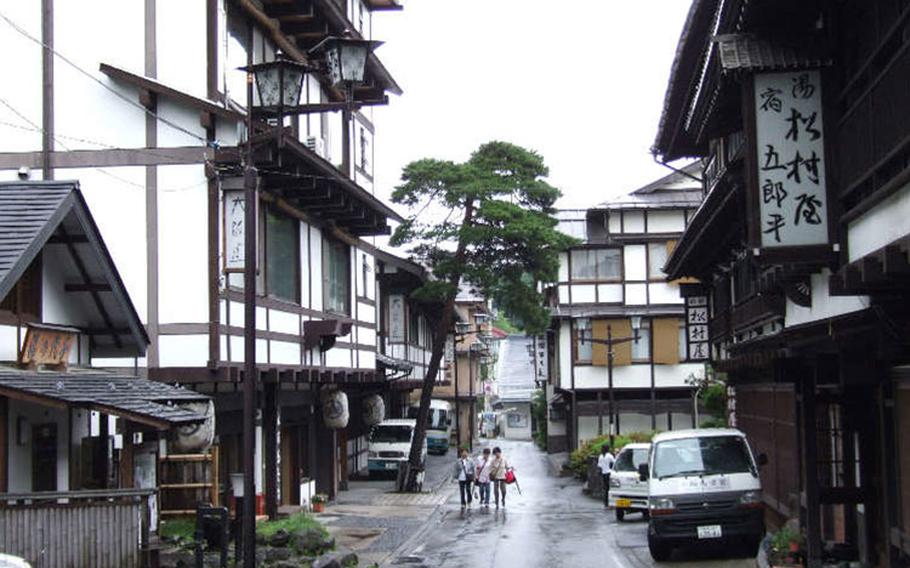
Hot springs near Tokyo offer the perfect retreat to warm up during the cooler months, as Japan boasts an array of such soothing destinations. Fortunately, there are numerous onsen towns in proximity to Tokyo, allowing you to relax and rejuvenate in mineral-rich waters.
Here, we'll present ten of the best onsen near Tokyo, all of which are easily accessible by train or bus. Utilize our recommendations, which delve into the unique features and benefits of each hot spring , to curate your ideal winter escape in Japan.
1. Kusatsu Onsen (Gunma): Famous as one of Japan's Top Three hot springs areas
Kusatsu Onsen is a charming hot spring town located in the Agatsuma district of Gunma Prefecture in the Kanto region. It is well-known for its Yubatake, a hot water field that is the town's centerpiece and helps to adjust the temperature of the hot spring water for bathing.
Kusatsu Onsen is also considered one of Japan's top three hot springs , alongside Arima Onsen in Hyogo Prefecture and Gero Onsen in Gifu Prefecture.
The hot spring water at Kusatsu Onsen is very hot, around 55 degrees Celsius, and is believed to offer numerous health benefits.
Visitors can purchase "Yunohana," the sediment that is extracted from the Yubatake, which is highly concentrated in hot spring minerals and is sold as a bathing agent. Additionally, visitors can enjoy the "yumomi" show , where the hot spring water is stirred to cool it down, and watch the beautiful illumination of the Yubatake at night.
About Kusatsu Onsen
Kusatsu Onsen boasts the highest natural hot spring water output in Japan. More than 32,300 liters of hot spring water gushes out every minute. The water's quality is highly acidic, which contributes to its potent sterilizing properties.
Size of spa resort area
There are over 100 hotels and hot spring inns in Kusatsu Onsen , with a concentration of souvenir shops and restaurants around the Yubatake area.
Getting there
To reach Kusatsu Onsen from JR Ueno Station, take the "Tokkyu Kusatsu" limited express train to Nagano-Kusatsuguchi Station, then transfer to a JR bus and disembark at the "Kusatsu" stop. This journey takes approximately three hours.
Spring qualities and benefits
Cuts and burns, neuralgia, bruises, diabetes, hypertension, etc.
Main hotels in the area
Kusatsu Onsen Nagataya, Kusatsu Hotel , Kusatsu Onsen Ozu no Koyado Hanaingen
Kusatsu Onsen Eidaya 草津温泉 永田屋 Address: Kusatsu 464-285, Kusatsu, Gunma, 377-1711 View Map Nearest Station: Haneo Station (JR Agatsuma Line)
Kusatsu Onsen Kusatsu Hotel 1913 草津温泉 草津ホテル 1913 Address: Kusatsu 479, Kusatsu, Gunma, 377-1711 View Map Nearest Station: Haneo Station (JR Agatsuma Line)
Hanaingen 草津温泉 お豆の小宿 花いんげん Address: 92, Kusatsu, Gunma, 377-1711 View Map Nearest Station: Haneo Station (JR Agatsuma Line)
2. Ikaho Onsen (Gunma): A town of stone steps and hot spring manju sweets
Image Courtesy of Gugutto Gunma Photo Gallery
Ikaho Onsen is a delightful hot spring town located in Gunma Prefecture that has been thriving since ancient times. Records dating back over 600 years reveal the existence of hot springs in the area. The heart of the town is a flight of 365 stone steps, and as you make your way up, you'll find souvenir shops , restaurants, and game centers, making it a fun and lively destination.
One must-try treat in Ikaho Onsen is the famous "Yunohana Manju," a classic souvenir of Japanese hot spring towns that is said to have originated here. These unique treats have a brown outer layer and a taste that is hard to forget. Be sure to grab some before you leave!
About Ikaho Onsen
Features There are two types of hot springs in Kusatsu Onsen : the "Golden Water" and the "Silver Water." The Golden Water turns a brownish color due to oxidized iron content, while the Silver Water is clear and colorless, hence the name.
Size of spa resort area There are around 50 lodging facilities affiliated with the Ikaho Onsen Ryokan Cooperative. Visitors can purchase souvenirs at the shops along the stone steps, and there are also nearby museums and art galleries to explore.
Getting there The "Tokkyu Kusatsu " limited express train from JR Ueno Station takes about 1 hour and 30-40 minutes to reach Shibukawa Station.
Spring qualities and benefits Golden Water: Neuralgia, skin diseases, high blood pressure, etc. Silver Water: Recovery from illness and fatigue, health promotion, etc.
Main hotels in the area Oyado Tamaki, Kishigon Ryokan , Kaichoro
Oyado Tamaki お宿玉樹 Address: Ikaho 87-2, Shibukawa, Gunma, 377-0102 View Map Nearest Station: Ubashima Station (JR Agatsuma Line)
Kishigon Ryokan 岸権旅館 Address: Ikahomachi, Ikaho 48, Shibukawa, Gunma, 377-0102 View Map Nearest Station: Ubashima Station (JR Agatsuma Line)
3. Manza Onsen (Gunma): Hot springs located in a national park near a popular ski resort
Images Courtesy of Gugutto Gunma Photo Gallery
Manza Onsen is a cute hot spring located in Tsumagoi Village , Agatsuma District, Gunma Prefecture , within the Joshinetsu Kogen National Park . With a rich history dating back 400 years, it's been a go-to spot for many people seeking the healing properties of the hot springs .
Whether you visit in spring to take in the fresh greenery or in fall to enjoy the beautiful autumn leaves, you're sure to enjoy the natural scenery in all four seasons . At an altitude of 1,800 meters, it's also a popular summer resort to escape the heat. And during winter , it's recommended to combine your hot spring experience with a visit to the nearby Manza Onsen Ski Resort for some fun in the snow. Plus, with its convenient location near Karuizawa, you won't have any trouble finding shopping opportunities.
About Manza Onsen
Manza Onsen is known for its abundant hot spring water, with a daily output of approximately 5.4 million liters. It is said to have over 20 types of hot spring sources, making it a unique and diverse onsen near Tokyo.
There are around nine hotels near the Joshinetsu Kogen National Park , which are designed with skiers in mind. These hotels are conveniently located near Manza Onsen and offer a range of facilities.
To get to Manza Onsen from Tokyo, you can take the Hokuriku Shinkansen to Karuizawa and then take a bus to the onsen , which takes about 2 hours and 45 minutes.
Sulfur spring . Beneficial for respiratory disease, gastrointestinal disease, rheumatism, skin disease, etc.
Manza Kogen Hotel , Manza Prince Hotel
Manza Kogen Hotel 万座高原ホテル Address: Hoshimata 2401, Tsumagoi, Gunma, 377-1595 View Map Nearest Station: Fukurogura Station (JR Agatsuma Line)
Manza Prince Hotel 万座プリンスホテル Address: Manzaonsen, Tsumagoi, Gunma, 377-1595 View Map Nearest Station: Fukurogura Station (JR Agatsuma Line)
4. Shima Onsen (Gunma): These hot springs are believed to have healing powers
Shima Onsen is a fascinating hot spring with an interesting legend behind its name. The Chinese characters "四万" mean "40,000," and according to the legend, bathing in the hot springs can cure all 40,000 known illnesses. Who wouldn't want to give that a try?
Aside from the beautifying effects of the hot spring water, there are several drinking fountains on the premises where visitors can enjoy the health benefits of the water, which is said to be good for the stomach and gut.
The Sekizenkan Ryokan located within Shima Onsen is also rumored to have inspired the bathhouse in the Ghibli movie Spirited Away, adding to the onsen 's unique charm. With a free foot bath and communal bathhouse, it's easy for visitors to enjoy the hot springs , even if they're only there for the day. And don't forget to take a leisurely stroll by the nearby clear streams and waterfalls to enjoy nature while visiting these hot springs near Tokyo.
About Shima Onsen
Features Shima Onsen features sodium-calcium-chloride-sulfate hot spring waters. Of the 42 hot spring sources in the area, approximately 39 of them are natural springs.
Size of spa resort area In the hot springs town, there is a concentration of restaurants and souvenir shops for visitors to enjoy.
Getting there From Tokyo Station , visitors can take the Shima Onsen bus for approximately 3.5 hours to reach Shima Onsen, or take the Kusatsu Limited Express from JR Ueno Station to JR Nakanojo Station and transfer to a bus bound for Shima Onsen for about 3 hours to reach the final destination.
Spring qualities and benefits Bathing in the hot spring s is said to be effective for gastrointestinal disease, neuralgia, skin disease, scratches, cuts, and atopic dermatitis. Drinking the hot spring water is said to be effective for gastrointestinal disease and increasing appetite.
Main hotels in the area Sekizenkan Kashotei Sanso, Shima - Onsen Toshimaya, Shima Onsen Kashiwaya Ryokan
Sekizenkan Kashotei Sanso 積善館 佳松亭・山荘 Address: Shima Ko 4236, Nakanojo, Gunma, 377-0601 View Map Nearest Station: Nakanojo Station (JR Agatsuma Line)
Shima-Onsen Toshimaya Address: Shima 3887, Nakanojo, Gunma, 377-0601 View Map Nearest Station: Nakanojo Station (JR Agatsuma Line)
Shima Onsen Kashiwaya Ryokan 四万温泉 柏屋旅館 Address: Shima 3829, Nakanojo, Gunma, 377-0601 View Map Nearest Station: Nakanojo Station (JR Agatsuma Line)
5. Nasu Onsen (Tochigi): A leading hot spring resort near Tokyo
Nasu Onsen Resort is a group of amazing hot springs situated in the area surrounding Mt. Chausu, the only active volcano in Tochigi Prefecture . The resort includes 11 different hot springs, with Nasu Onsen (also known as "Kanoyu") being the most well-known, having been discovered in 630 AD.
The area is also called "Nasu Jikkyu-yu" or "Nasu Eleven Hot Springs ," and one of the hot springs within the Nasu Onsen Resort is Kitayu, which is known for its unique tengu masks and has even been featured in movies.
In addition to the hot springs , Mt. Chausu is known for its season al flowers and is an excellent hiking destination outside of the snowy season. For families, the area also offers many theme parks , such as Nasu Safari Park and Nangaku Ranch, making it a perfect spot for a day trip.
About Nasu Onsen
Features The source temperature of the hot spring s ranges from 63 to 80 degrees Celsius, making them high-temperature hot springs. The most famous Nasu Onsen , Kanoyu, is a sulfur hot spring, while Omaru Onsen, located at an altitude of 1,300 meters, is a simple hot spring. The quality of the hot springs varies depending on the location of the hot spring resort.
Size of spa resort area If you're looking to dine out, there are plenty of restaurants near the hotels and theme parks . For souvenirs, you can find them at roadside stations or large commercial facilities.
Getting there From Tokyo Station , visitors can take the Tohoku Shinkansen to Nasu-Shiobara Station and then take a bus to Nasu Onsen for about 2 hours and 15 minutes.
Spring qualities and benefits Sulfur hot spring s , such as Kanoyu, are believed to be effective for skin disease, women's health issues, gastrointestinal disease, and fatigue recovery. The effects may vary depending on the hot spring.
Main hotels in the area Jizaiso, Resort Hotel Laforet Nasu, Hotel Epinard Nasu
Jizaiso こころのおやど 自在荘 Address: Yumoto 206-98, Nasu, Tochigi, 325-0301 View Map Nearest Station: Kurodahara Station (JR Tohoku Main Line)
Resort Hotel Laforet Nasu リゾートホテル ラフォーレ那須 Address: Yumoto 206-959, Nasu, Tochigi, 325-0301 View Map Nearest Station: Kurodahara Station (JR Tohoku Main Line)
Hotel Epinard Nasu ホテルエピナール那須 Address: Takakuhei 1, Nasu, Tochigi, 325-0302 View Map Nearest Station: Takaku Station (JR Tohoku Main Line)
6. Kinugawa Onsen (Tochigi): Scenic hot spring resort near Tokyo particularly beautiful during the autumn foliage season
Kinugawa Onsen is a delightful hot spring resort nestled along the Kinugawa River in Tochigi Prefecture . Located in a mountainous hot spring town, visitors can unwind and take in the fresh air and serene atmosphere.
The Kinugawa River is famous for its rapids and rocky cliffs, making it an ideal spot for river rafting. And when combined with a hot spring experience, especially during the autumn foliage season when the area is particularly stunning, it's truly an unforgettable experience.
The area also offers a wealth of nearby attractions, including the Nikko Toshogu Shrine , Edo Wonderland , Tobu World Square, and the popular SL Taiju steam train that runs between Shimotsuma Station and Kinugawa Onsen Station. With so much to see and do, you'll never get bored in this amazing hot spring town.
About Kinugawa Onsen
Features The hot springs are odorless and tasteless, making them easy for children and the elderly to enter. The water is gentle on the skin and does not have a distinct flavor, making it easy to enjoy.
Size of spa resort area There are 28 lodging facilities that belong to the Kinugawa and Kusatsu Onsen Ryokan Cooperative Association, and souvenir shops and restaurants are clustered in the hot spring town near Kinugawa Onsen Station.
Getting there From JR Shinjuku Station, visitors can take the JR/Tobu through express train, or from Tobu Asakusa Station, they can take the Tobu Spacia train to Kinugawa Onsen Station, which takes about 2 hours.
Spring qualities and benefits Alkaline simple hot springs are believed to be effective for various health conditions such as neuralgia, stiff shoulders, fatigue recovery, and overall health improvement.
Main hotels in the area Tsuganoki, Monogusa no Yado Hanasenkyo, Ooedo- Onsen Monogatari Kinugawa Kanko Hotel
Monogusa no Yado Hanasenkyo ものぐさの宿 花千郷 Address: Kinugawa Onsen Taki 482-6, Nikko, Tochigi, 321-2526 View Map Nearest Station: Kinugawa-Onsen Station (Tobu Kinugawa Line), 18 minutes on foot
Ooedo-Onsen Monogatari Kinugawa Kanko Hotel 大江戸温泉物語 鬼怒川温泉 鬼怒川観光ホテル Address: 359-2 Kinugawa Onsentaki , Nikko, Tochigi, 321-2526 View Map Nearest Station: Kinugawa-Onsen Station (Tobu Kinugawa Line), 16 minutes on foot
7. Hakone Onsen (Kanagawa): Relax in a hot spring with Mt. Fuji views!
Hakone Onsen is a group of fantastic hot spring resorts located in the Hakone area of Kanagawa Prefecture . These 20 hot springs are the result of the thermal activity of the Hakone volcano. Two of the most famous hot springs are Hakone Yumoto, which is also a stop on the Odakyu Romancecar from Tokyo, and Ōwakudani within the national park .
One of the biggest draws of Hakone Onsen is the opportunity to soak in an outdoor bath while taking in the breathtaking views of Mount Fuji . It's no wonder that this area is a popular hot spring destination within Japan, with the highest number of annual visitors.
With so much to explore and enjoy in this beautiful area, it's no surprise that Hakone Onsen is a must-visit spot for anyone looking to experience the natural beauty and rejuvenating power of Japanese hot springs .
About Hakone Onsen
Features This is the largest hot spring resort in Kanagawa Prefecture , with a discharge rate of about 19,500 liters per minute. Due to the complex geological features of the hot spring source, the 20 hot spring resorts have varying spring qualities.
Near the Hakone Yumoto Station, the gateway to the Hakone hot spring resort, there is a shopping street with a variety of restaurants and souvenir shops .
From Odakyu Shinjuku Station, take the Odakyu Romancecar to Hakone Yumoto Station, which takes approximately 1 hour and 25 minutes.
Sodium chloride springs can provide relief from ailments such as sensitivity to cold, stiff shoulders, and lower back pain at Hakone Yumoto Onsen , while other hot springs offer different types of benefits.
Tsukino Yado Sara, Hotel Zagakukan, Hakone Yumoto Onsen Hotel Kajikaso
Tsukino Yado Sara 箱根湯本温泉 月の宿 紗ら Address: 588-1, Hakone, Kanagawa, 250-0311 View Map Nearest Station: Hakone-Yumoto Station (Hakone Tozan Railway), 11 minutes on foot
Hotel Zagakukan 坐樂閑 Address: Yumoto 642-1, Hakone, Kanagawa, 250-0311 View Map Nearest Station: Hakone-Yumoto Station (Hakone Tozan Railway), 7 minutes on foot
Hakone Yumoto Onsen Hotel Kajikaso 箱根湯本温泉 ホテル河鹿荘 Address: Yumoto 688, Hakone, Kanagawa, 250-0311 View Map Nearest Station: Hakone-Yumoto Station (Hakone Tozan Railway), 6 minutes on foot
8. Yugawara Onsen (Kanagawa): A therapeutic spring that has been beloved by cultural figures
Yugawara Onsen is a fantastic hot spring resort located in the southwest of Kanagawa Prefecture . With 109 hot springs , each with its own unique water quality, including chloride springs, simple springs, and sulfuric acid springs, it's a treasure trove of "medical treatment springs" that are believed to be good for healing and recuperation.
The water quality, combined with the opportunity to enjoy both the sea and mountain scenery, has attracted many cultural figures, such as painters and novelists, who visited for therapeutic purposes.
If you're looking for souvenirs, be sure to check out the citrus fruit cultivation in the nearby area. Many souvenirs featuring oranges are sold in the hot spring town, making it a great spot to pick up a unique and tasty memento.
Whether you're seeking relaxation, rejuvenation, or just a fun getaway from Tokyo, Yugawara Onsen is definitely worth checking out. With so many hot springs to choose from, you're sure to find the perfect one for you.
About Yugawara Onsen
Features The main spring quality, which is the saline spring, is said to have an excellent heat retention effect that prevents the body from getting cold. Some of the springs are known as "wound healing springs" and are reputed to be effective in recovering from bruises, wounds, and post-surgical recovery.
Size of spa resort area There are many souvenir shops and restaurants concentrated around Yugawara Station. Additionally, souvenirs can also be purchased at roadside stations and along the coast.
Getting there It takes about 34 minutes from Tokyo Station by the Shinkansen (Kodama).
Spring qualities and benefits This type of hot spring is characterized by its chloride and sulfate content, and is said to be effective for conditions such as poor circulation, bruises, and recovery after injuries or surgery.
Main hotels in the area Yugawara Retreat Goen no Mori, Yugawara Onsen Ryokan Uohan
Yugawara Retreat Goen no Mori 湯河原リトリート ご縁の杜 Address: Doi 5-4-6, Yugawara, Kanagawa, 259-0303 View Map Nearest Station: Yugawara Station (JR Tokaido Main Line / JR Ueno Tokyo Line), 5 minutes on foot
9. Atami Onsen (Shizuoka): A refreshing hot spring town facing the sea
Atami Onsen is a wonderful hot spring resort town located on the eastern edge of the Izu Peninsula in Shizuoka Prefecture . It's a fantastic spot to relax and enjoy the healing properties of the hot springs , making it a popular getaway from Tokyo.
One unique feature of Atami Onsen is the Atami Sun Beach, which is lined with palm trees and offers a tropical atmosphere. It's hard not to feel relaxed and refreshed here! Atami Onsen has a rich history that dates back to 713 when it was discovered. Over the years, many Japanese royalty, samurai warriors, and cultural figures built villas in the area.
Thanks to its warm climate, Atami experiences an early arrival of spring , and visitors can enjoy the plum blossoms and Atami cherry blossoms as early as late January. And for those who love fireworks, Atami is famous for its long-lasting fireworks festivals held from April to December. There's always something happening in this amazing hot spring town near Tokyo!
About Atami Onsen
Atami boasts a total output of approximately 16,600 liters per minute and a large amount of hot water. The water is characterized by its lack of smell and colorless transparency. It is said that there are many sulfuric acid springs along the mountains and chloride springs along the coast.
There are nearly 300 ryokans and hotels in the city of Atami . Souvenir shops and restaurants are located in the shopping district in front of Atami Station.
It takes about 45 minutes by the Tokaido Shinkansen (Kodama) from Tokyo.
Sulfate spring : effective for arteriosclerosis, cuts, burns, chronic skin diseases, etc.
Chloride spring : effective for cuts, burns, chronic skin diseases, chronic women's diseases, etc.
Uminohana, Shin Kadoya, Fufu Atami
Uminohana 時間を旅する宿 海のはな Address: Shimotaga 37-9, Atami, Shizuoka, 413-0102 View Map Nearest Station: Ajiro Station (JR Ito Line / JR Ueno Tokyo Line), 15 minutes on foot
Shin Kadoya 新かどや Address: Koarashi 14-8, Atami, Shizuoka, 413-0029 View Map Nearest Station: Kinomiya Station (JR Ito Line / JR Ueno Tokyo Line), 11 minutes on foot
Fufu Atami ふふ 熱海 Address: Minaguchi-cho 11-48 , Atami, Shizuoka, 413-0016 View Map Nearest Station: Kinomiya Station (JR Ito Line / JR Ueno Tokyo Line), 5 minutes on foot
10. Chichibu Onsen (Saitama): Saitama's premier hot spring resort with stunning views
Chichibu is a wonderful destination located in the southwest part of Saitama Prefecture that's known for its seasonal scenic views, including Shibazakura (pink moss phlox) and breathtaking Ashigakubo-no-Hyochu ice columns , as well as its hot spring s . What could be better than taking in breathtaking views while enjoying the healing powers of a hot spring?
Most of the hot springs in Chichibu are day-use facilities, making them perfect for visitors on a sightseeing trip. Plus, the alkaline hot springs are said to be great for the skin, leaving you feeling rejuvenated and refreshed.
One onsen complex that you won't want to miss is " Matsuri -no-Yu," located in front of Seibu Chichibu Station. It's a unique place that not only features hot springs but also a food court and retail space. You'll get to experience the festive atmosphere of Chichibu's festivals while enjoying the hot springs. It's truly an unforgettable experience!
About Chichibu Onsen
The water has a strong alkaline level of about pH 9-10, rich in hydrogen ions.
The area around Chichibu Station is crowded with souvenir shops and restaurants, and there are also many restaurants in the nearby Nagatoro Town.
It takes about 1 hour and 20 minutes from Seibu Ikebukuro Station.
Sulfuric simple springs are said to be effective for neuralgia, fatigue recovery, chronic skin diseases, health promotion, diabetes, and beautiful skin (Manganoyu). However, it varies depending on the type of hot spring .
NIPPONIA Chichibu Monzenmachi, KAMENOI HOTEL Nagatoro Yorii, Comfort stay Miyabi
KAMENOI HOTEL Nagatoro Yorii 亀の井ホテル 長瀞寄居 Address: Sueno 2267, Yorii, Saitama, 369-1205 View Map Nearest Station: Hagure Station (Chichibu Railway), 13 minutes on foot
Comfort stay Miyabi みやび Address: Kumaki 24-14-B, Chichibu, Saitama, 368-0032 View Map Nearest Station: Ohanabatake Station (Chichibu Railway), 8 minutes on foot
There are many fantastic onsen towns in the greater Tokyo region. That's right! You don't have to go far to experience the natural beauty and rejuvenating power of Japanese hot springs . Gunma, Tochigi, and Kanagawa prefectures all have amazing hot springs that are easily accessible by train or bus from Tokyo.
One of the best things about these hot springs is the opportunity to take a break from the hustle and bustle of the city and relax in the beautiful natural scenery. It's a great way to recharge and refresh yourself!
Note: The information in this article is current as of February 2023. Please check official websites and other sources for the latest information.
Via Live Japan
related stories
- Did you know?: Japanese public baths Onsen and Sento
- Helpful tips for foreigners visiting a Japanese onsen
- Learn basic etiquette of Japan's onsen culture
- Bathing in Japan: Difference between sento and onsen
The best stories from the Pacific, in your inbox
Sign up for our weekly newsletter of articles from Japan, Korea, Guam, and Okinawa with travel tips, restaurant reviews, recipes, community and event news, and more.
Sign Up Now
Truly Tokyo
A Tokyo Travel Guide
Shuzenji Onsen Overnight Trip Itinerary
Make the most of a day out in the charming hot spring resort of Shuzenji Onsen in the Izu Peninsula, located 2.5 hours away from Tokyo by train and bus, with our Shuzenji Onsen Overnight Trip Itinerary.

Located to the southeast of Tokyo, the Izu Peninsula has all the elements for a great adventure – fantastic hiking trails, rugged cliffs, the deep blue of the Pacific Ocean, and dozens of great little towns to explore. While it's theoretically doable as a day trip, it's far better to take a train out and stay overnight in one of the little towns on the peninsula.
Shuzenji Onsen is a lovely option for an overnight trip out of Tokyo. Surrounded by mountains on all sides, this charming hot spring resort town has gorgeous scenery, delicious food, and an abundance of hot spring baths. It’s especially beautiful during spring for the blossoms, and in autumn for the colours. Unsurprisingly, it’s one of the most popular weekend getaways on the peninsula.
Check Hotel Availability
Destination, check-in date, check-out date.

Shuzenji Onsen is named for its principal temple, Shuzenji. It’s said that the temple was founded by Kobo Daishi, Japan’s most famous Buddhist monk. It is also believed that the same monk––in the 9th century––struck a rock with his staff and caused hot spring waters to spring forth, blessing the town with its source of onsen water. Regardless of its real origins, it’s true that the baths here are just fabulous. Besides full-body immersions, you can also soak your feet in one of the foot baths dotted around the town center.
Shuzenji Onsen Itinerary Sections
This itinerary contains the following sections:
- Notes Before You Go
The Full Shuzenji Onsen Overnight Itinerary
Shuzenji onsen overnight trip map, recommended accommodation in shuzenji onsen.

Notes Before You Go To Shuzenji Onsen
- This itinerary is a guideline. Add or subtract places as you like.
- Itinerary timings are approximate. Shuzenji Onsen is a small onsen town, and the primary draw of this place is to enjoy the ryokan. It’s a very leisurely itinerary. Adjust the timings to suit your schedule.
- It’s always worth checking train and/or bus times to make sure you won’t miss your connecting flights.
- This is a walking itinerary. Visiting the temple also involves a few flights of stairs, though these are short, can be taken slowly and should not prove too onerous. Put a comfortable pair of walking shoes on and give it a shot!

Shuzenji Onsen Itinerary: Day 1
8:30am start at tokyo station.
Begin at any of the exits to JR Tokyo Station. You’ll be traveling on the Tokaido shinkansen bullet train to Mishima Station. You can either take the Hikari or Kodama trains, which are covered by the JR Pass. The fastest Nozomi trains skip Mishima Station.
Tickets can be purchased at the Midori no Madoguchi counter or any ticket machine with a “Shinkansen” signboard above. Ticket machines now have options in English, so it’s simply a matter of following the instructions. Trains may be a little busier during peak travel seasons, so you may want to purchase reserved seats for peace of mind. At the time of writing, a reserved-seat one-way trip from Tokyo Station to Mishima Station costs JPY4400.

Follow the signs to the Shinkansen bullet trains. Make sure you always have your ticket with you. I boarded the Kodama train departing at 8:56am. For your pick of train times, consult the train timetable here or use a transport app such as Google Maps.

9:55am Arrive at Mishima Station
Travelling from Tokyo Station to Mishima Station takes just under an hour. From here, you’ll transfer to the Izu-Hakone Railway for onward travel to Shuzenji Station.

Follow the signs to the South Exit as pictured above.

10:00am Travel to Shuzenji Station by train
Your next step is to travel to Shuzenji Station. While there’s a train departing at 10:04am, don’t sweat it if you don’t make that train. Give yourself time to buy tickets, use the bathroom, and get to the platform. There’s another one departing at 10:17am; trains to Shuzenji Station depart an average of 4 times an hour.

A one-way journey from Mishima Station to Shuzenji Station costs JPY520. Buy this at the ticket machine, which has purchasing options in English.

11:00am Travel to Shuzenji Onsen by bus
You’ll arrive at approximately 10:56am. From here, you’ll take a bus to Shuzenji Onsen. The bus stops are located in front of Shuzenji Station; there’s only one exit. Head over to Bus Stop 1. Buses C10 or 修10 will take you there; check the electronic signboard in front of the ticket gates near 7-11 for more information on bus times.
It’s best to leave any suitcases at your inn before exploring town. In this case, you may want to use the travel directions provided by your accommodation. In any case, the bus journey to the centre of Shuzenji Onsen will take approximately 20 minutes.

11:45am Explore Shuzenji Onsen
Now that you’ve divested yourself of extra baggage, it’s time to explore Shuzenji Onsen. The town itself is quite compact, with most of the attractions and places to see clustered around the river. It’s mainly about enjoying the atmosphere and scenery. Shuzenji Onsen is lovely at any time of the year, but it’s particularly picturesque in autumn when the fall colours are in full red-and-gold mode.

You might begin with Hie Shrine, located just opposite Togetsu Bridge. Hie Shrine is said to have been built by Kobo Daishi––the founder of the “Esoteric” school of Buddhism, known as Kūkai when alive––and was once the tutelary shrine of nearby Shuzenji Temple.

The most impressive part of the shrine must be the pair of Japanese cedars towering over the shrine grounds. These are Meotosugi and Ichii-gashi respectively, and they are designated national treasures of Shizuoka.

Exiting Hie Shrine, follow the river upstream. You’ll see the town centre and the staircase to Shuzenji Temple on your right. En route, you’ll pass by this gift shop––a great little place for souvenirs and presents.

Shuzenji Temple was supposedly founded by the aforementioned Kobo Daishi in the 9th century. It is associated with Minamoto no Noriyori, a Japanese warlord during the early Kamakura period (1185–1333) known for his victory in the Battle of Ichinotani against the Heike clan.

In 1194, Minamoto no Noriyori was arrested and locked up in the temple by his elder brother after accusations that he was plotting against the shogunate; Noriyori subsequently committed suicide on the grounds of Hie Shrine.

You’ll see a wooden pavilion located down a flight of stairs, right on top of the river. This is Tokko-no-yu, a foot bath.

There’s also Kawara-no-yu on the path nearby. Take off your shoes and soak your feet in the hot waters––your feet will thank you for it! It will be helpful to have a towel handy for putting your shoes back on.

Cross Kokei Bridge and wander over to the other side, where there are a number of craft shops, restaurants, souvenir stores, and miscellaneous little nooks and crannies to peer into.

For example, you might find an antique knick-knack or two at this shop.

Or, you can try your hand at the old-fashioned games in this shop.

There’s also another (unnamed) foot bath overlooking the river.

1:00pm Lunch in Shuzenji Onsen
After some exploring, it’s time for lunch. Shuzenji Onsen has a surprisingly high concentration of soba restaurants, in addition to other eating options. We’ve marked some places to eat on the itinerary map located at the end of this article.

A good place for lunch is Sobadokoro Shikishi. You’ll find it on your left as you meander upstream on the left bank of the river. It can be crowded here at lunch hours during peak travel season, so depending on when you show up, you might have to wait a while.

Oddly enough for a soba restaurant, Shikishi is famous for their beef stew. It’s a far cry from buckwheat noodles but they do it well. The large hunks of tender stewed beef in a savoury gravy go beautifully with white rice.

2:00pm Continue exploring Shuzenji Onsen
Following the river upstream will take you to the little bamboo path. If you didn’t manage to make it to the famous bamboo forest in Kyoto, this is a pleasant (and generally much quieter) alternative.

Stay as close to the river as possible for all the photo opportunities.

The bamboo path is short but picturesque.

You’ll arrive at the maple grove, and you get a lovely view of the river from the bridge.

If you’re so inclined, you can veer away from the river, follow the signs and maps––Shuzenji Onsen is well sign-posted––and take a short climb up the hillside to the grave of Minamoto no Noriyori. While the grave itself may only be of Japanese interest to history buffs, it’s a pleasant walk. Afterwards, you can walk back to town via Akagaeru Park (marked on the map) near the bamboo path.

If you’re keen on a cafe break, Mangetsudo near Shuzenji Temple is a good option. It’s an old-school cafe run by an elderly couple. Take note: like most kissaten, it allows smoking; there are non-smoking sections but those sensitive to smoke may wish to skip this place.

The tea is strong and they serve generous portions of cake. The chocolate mousse cake was just right for a mid-afternoon snack.
3:30pm Check in to your accommodation
Having spent the afternoon exploring the town, it’s time to head to your inn. You’ll want to spend the rest of the afternoon soaking in the hot springs at your inn or hotel––that’s the whole point of visiting an onsen town, after all! Don’t forget to soak in the baths again after dinner.
If you are staying at a ryokan (Japanese-style inn), you will most likely have breakfast and dinner included in your stay. However, if you’re staying at a hotel, you might not necessarily want to eat there for your evening meal. Much of Shuzenji Onsen shuts down once it gets dark, but there will still be a few places open. We’ve marked some restaurants on the map at the end of this itinerary.

Shuzenji Onsen Itinerary: Day 2
9:00am bus to darumayama kogen rest house.
If you’d rather take things slow, you could just relax at your inn until it’s time to leave Shuzenji Onsen. I’ve outlined a short hiking option for those who prefer a more active holiday; as a bonus, this option gives you fantastic views of Mt. Fuji on a clear day.

You’ll begin by taking a bus to Darumayama Kogen Rest House. I’ve marked it on the itinerary map located at the end of this article. It is not the same bus stop as the one you’ll have alighted from yesterday, so beware!

You’re at the right place if you see an outdoor bus stop marked “B” located next to a small canal as above.

In the above timetable, times for buses bound for Head via Niji-no-sato can be found in the second column. As you can see, buses leave infrequently. The only time available is 9:28am––don’t miss the bus or you’ll have to wait two hours for the next one. Alternatively, you can take the 7:46am bus for an early morning hike. (But you’ll probably miss out on breakfast at the inn.)

If you’re so inclined, you could visit Niji-no-Sato. This is a ‘leisure park’ with Western and Japanese-themed areas. If you’ve ever wanted to visit an English village or a Canadian village modelled on 17th century examples, this is the place to visit––our guess is that it’s targeted at Japanese tourists. On the other hand, the Japanese village showcases local specialties and traditional crafts, and there’s a Japanese garden inside. It might be worth stopping by if you aren’t pressed for time.

Alight at Darumayama Kogen Rest House. The bus ride here from Shuzenji Onsen costs JPY570. They don’t take IC cards so make sure you have cash on hand, or break a JPY1000 note using the machine at the front of the bus when alighting.

9:55am Arrive at Darumayama Kougen Rest House
Walk over to the rest house. This overlooks the bay below, and on a clear day you’ll have a magnificent frontal view of Mt. Fuji in the distance.

10:15am Hike to Mt. Kinkan
From here, it’s time to take a hike. I walked up to Mt. Kinkan and back to the rest house, which is the shortest hike you can do in the vicinity. You’ll want comfortable hiking shoes on.

You’ll find the trail map near the public restrooms. The hike to Mt. Kinkan and back takes about 45 minutes one way.

If you’re feeling more energetic, you can hike along the Heda Pass and all the way to Mt. Daruma and back. This is a round-trip hike of approximately 8 kilometres. Make sure you time your hike so that you make the bus back to Shuzenji Onsen, as it doesn’t leave very often from the rest house––it departs at 12:23pm, 2:23pm, and 5:23pm.

The trail is clearly signposted. It’s not particularly strenuous––the trail is gently undulating, with a few steeper sections as you approach Mt. Kinkan.

The view at the top is gorgeous––more of Mt. Fuji in the distance.

Mt. Kinkan is a nice spot to have lunch. Make sure you have some food if you want to eat on the trail––it’s worth picking up some food from the Family Mart convenience store in Shuzenji Onsen before hopping on the bus. We’ve marked its location on the map at the bottom of this itinerary.

2:00pm Head back to Shuzenji Onsen
The stop for buses bound for Shuzenji Onsen is located near this statue at the rest house. If you have a very quick hike, you could theoretically make the 12:23pm bus. But it’s also fine to take your time walking and soaking up the sights. I would suggest not leaving any later than 2:23pm so that you can get back to Tokyo in time for dinner.

Alight at Shuzenji Onsen. Maybe squeeze in one last soak in one of the hot springs before picking up your luggage and making your way back to Tokyo. You’ll head back to Tokyo in reverse order: take the bus to Shuzenji Station, board the Izu-Hakone Railway train to Mishima Station, then change here for a Tokaido line bullet train back to Tokyo.
View the full size version of our Shuzenji Onsen map which has each of the places discussed above marked on it.
Arai Ryokan
(View on Booking.com or Agoda.com ) Located right in the centre of Shuzenji Onsen, Arai Ryokan is a traditional Japanese inn widely feted for its multi-course meals and fabulous hot springs. The meals here are a cut above many other inns in the area! It was established in 1872, and has since hosted many Japanese literary and cultural luminaries. The ponds and gardens inside are truly lovely. As a recognised Important Cultural Property, it’s also one of the more luxe options in town.

Asaba Ryokan
(View on Booking.com or Agoda.com ) If money is no object, Asaba is the place to stay when you’re visiting Shuzenji Onsen. There are just 17 suites at this luxury ryokan––more like private villas––and each is exquisitely designed. The inn is located on the Katsura River, and the views here are glorious. Watch paper lanterns float across the pond in the evening as you dine on a series of exquisite little bites. Retreat to your room and soak in your private hot spring baths. The only downside is having to leave.

Mizu no Sato Marukyu Ryokan
(View on Booking.com or Agoda.com ) Built in 1996, Marukyu is one of the newer ryokan in town. With 6 hot spring baths (including open air baths, stream baths, jacuzzis), saunas, in-room massages, and sumptuous multi-course dinners, this is a great choice in Shuzenji Onsen. There are options for private hot spring baths, and the rooms are en-suite with Western-style toilets. Marukyu looks significantly more modern than some of the other inns, but more importantly, they took special care to make their facilities barrier-free. Notably, there are bathrooms for wheelchair users and the physically disabled.

Onsen Yado Mizuguchi
(View on Booking.com or Agoda.com ) Located near the river that runs through town, this little guesthouse is cozy and welcoming. The Japanese-style rooms are comfortable and spacious enough, and the small shared lounge overlooking the river is a great place to relax, use the free WiFi, or read a book. The hot spring bath is really just large enough for one person at a time––ergo, a private soak for you! Note that the baths aren’t open 24 hours. Oddly enough, there’s an 11:00pm curfew. But given how sleepy the town is, you’ll probably be relaxing in your room with a drink at that hour anyway.

Shuzenji Onsen Hotel Takitei
(View on Booking.com or Agoda.com ) This centrally-located onsen hotel has traditional Japanese-style tatami mat rooms, and a communal hot spring bath that’s quite pleasant to soak in. The view from higher floors is quite nice. Facilities are a little dated but well-maintained. It’s no ryokan experience, but it is convenient and reasonably priced if everywhere else is booked out.

Tokyo Vacation Checklist
- For all the essentials in a brief overview, see my First Time In Tokyo guide
- Check Tokyo accommodation availability and pricing on Booking.com and Agoda.com - often you can book with no upfront payment and free cancellation
- Need tips on where to stay? See my one page guide Where To Stay In Tokyo
- You can buy shinkansen (bullet train) tickets online from Klook - popular routes include Tokyo to Kyoto , Tokyo to Osaka and Tokyo to Hiroshima
- You can buy a Japan SIM card online for collection on arrival at Tokyo Narita or Haneda airports. Or rent an unlimited data pocket wifi router
- See my comprehensive Packing List For Japan
- Compare airline flight prices and timings for the best Japan flight deals . Check my guides to arriving at Narita Airport and at Haneda Airport .
- If you're visiting more than one city, you might save money with a Japan Rail Pass – see if it's worth it for you
- A prepaid Welcome Suica card makes travelling around Tokyo much easier - here's how
- World Nomads offers simple and flexible travel insurance. Buy at home or while traveling and claim online from anywhere in the world
Tokyo District Map

- Imperial Palace Area
- Tokyo Station
- Shimbashi Shiodome Hamamatsucho Shinagawa
- Akihabara Kanda
- Roppongi Akasaka
- Harajuku Aoyama
- Ebisu Daikanyama Meguro
Disclosure: trulytokyo.com is a participant in the Amazon Services LLC Associates Program, an affiliate advertising program designed to provide a means for sites to earn advertising fees by advertising and linking to amazon.com and amazon.co.uk. World Nomads provides travel insurance for travellers in over 100 countries. As an affiliate, we receive a fee when you get a quote from World Nomads using this link. We do not represent World Nomads. This is information only and not a recommendation to buy travel insurance.

The 8 Best Onsen in and Around Tokyo
David Taylor
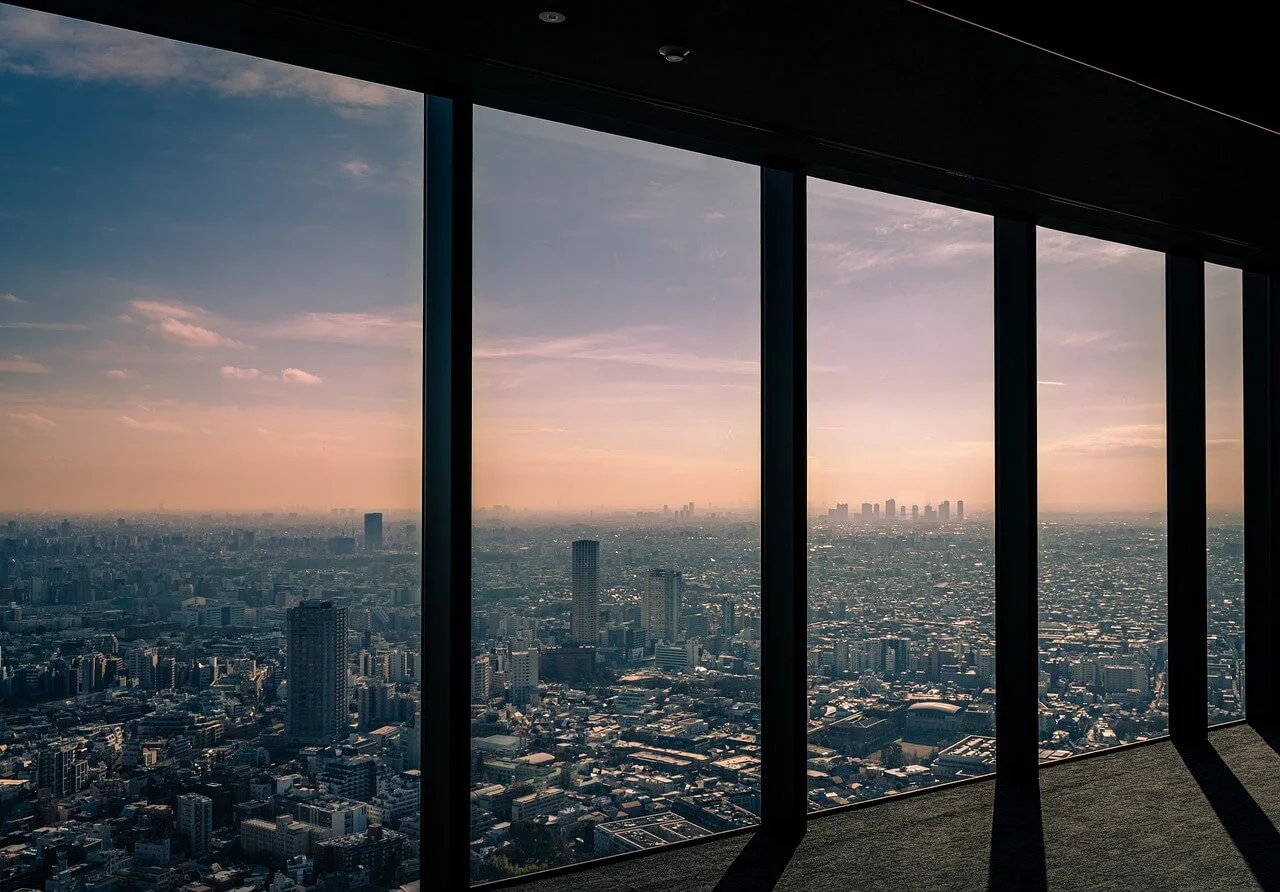
Looking to take a dip in Japan’s capital city? There are more spas in Tokyo than you can count, and while they’re all fantastic options, some lack the natural qualities that make hot springs the best way to relax.
Here are the 8 best onsen in and around Tokyo:
- Takaragawa Onsen
- Hakone Yuryo
- Ooedo-Onsen Monogatari Urayasu Mangekyo
- Sakura Onsen
- Yugara Onsen
Each option offers some unique blend of traditional charm, modern amenities, and rejuvenation. Prepare to unwind, recharge, and embark on a blissful onsen journey in or very near the capital.
What goes better than winter and onsen? Well, maybe nothing… But illumination displays in Tokyo might be the closest second. Check out Forever Foreign’s top 8 and give an extra spark to the winter season.
1. Takaragawa Onsen

Location: Gunma Prefecture
To get the good stuff, sometimes you gotta take a little trip. Located just a couple of hours from Tokyo, Takaragawa Onsen offers just that in the more rural and mountainous Gunma Prefecture. What sets it apart is its picturesque outdoor baths along the rushing Tone River.
A trip to this nearby prefecture means serene nature packed with beautiful mountains and soothing hot springs. Very different from the hustle and bustle of Tokyo.
If you take a trip to Takaragawa Onsen, go through the list of ryokan (traditional Japanese inn) and book yourself a traditional onsen stay.
2. Niwa no Yu
Location: Nerima Ward, Tokyo
Looking for something a little closer to home base? Niwa no Yu could be the best choice available.
This not-so-hidden oasis in the heart of Tokyo is conveniently located in Nerima next to the old Toshimaen theme park grounds. The hot spring boasts indoor and outdoor baths, Finnish saunas, and a relaxation area among several spa services.
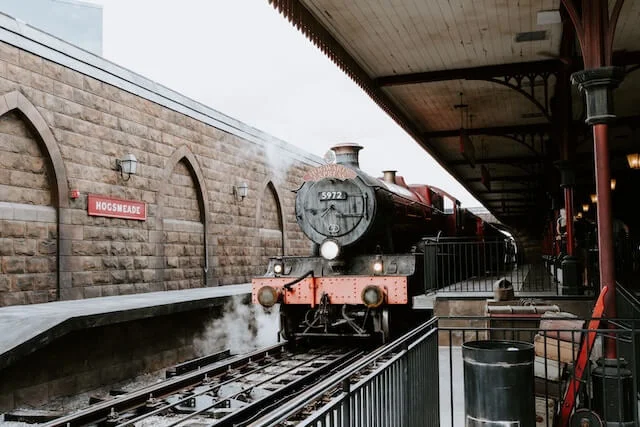
Step into the peaceful atmosphere of the Japanese garden-inspired interior and soak away your worries in the therapeutic waters. Oh, and consider using this as your final stop of the day after wandering around the nearby Warner Brothers Harry Potter Studio Tour .
3. Hakone Yuryo
Location: Hakone, Kanagawa Prefecture
Stepping away from Tokyo once more – but not too far! – there’s one of the most famous onsen locations in all of Japan in Hakone. At least it’s one of the most famous among tourists because of its combination of high quality facilities and proximity to the capital.
Don’t let the idea of tourists scare you away, though. A trip to Hakone means being surrounded by breathtaking landscapes and staying at some of the best ryokans in Japan with both indoor and outdoor bathing options.
And if you’d rather not stay the night, you can always pop in for a day trip from Tokyo or hit Hakone Yuryo on your way to Kyoto. There’s plenty to do in the area from boat rides to day hikes.
4. Thermae-Yu
Location: Shinjuku Ward, Toyko
If you’re heading to Tokyo, there’s a good chance you’ll end up in Shinjuku at some point. And if you do, you’ll have a fantastic Tokyo onsen at your fingertips.
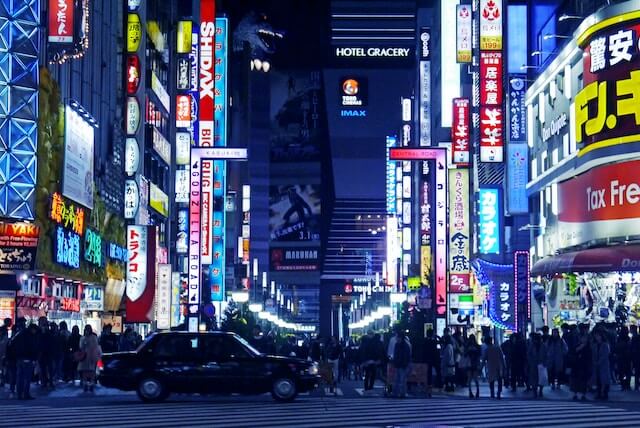
Thermae-Yu features a variety of baths, ranging from traditional to themed and medicinal. There’s even a unique moisturizing choral bath that you won’t find almost anywhere else.
While there, you can also take advantage of the different traditional saunas or lie down in a stone sauna (ganbanyoku) for an additional ¥850 fee. When it’s all said and done, you can cool down in one of Golden Gai’s many bars with a beer or cocktail.
5. Ooedo-Onsen Monogatari Urayasu Mangekyo
Location: Urayasu, Chiba Prefecture
Not to be confused with the Odaiba Oedo-Onsen that closed down in 2021, the Urayasu Mangekyo location offers a similar vibe. This onsen resort replicates the vibrant atmosphere of the Edo period, featuring hot spring baths, foot baths, and various entertainment options.

You can either stay at the hotel or you can pick up a day pass to access the baths. Either way, you’ll have your pick of 38 (that’s right, 38) different baths, some indoors, some outdoors, some with a classic wooden bath house feel, others set up in a rock garden that can feel a bit like you’re in the mountains.
And if the Tokyo area onsen theme park wasn’t enough for you, there’s another theme park nearby. A short car ride away is Tokyo Disneyland and DisneySea, so if you’re still itching for more theme park action, head on down!
6. Yunessun
If you haven’t had enough of onsen theme parks, then head on down to Yunessun in Japan’s onsen capital of Hakone. Tickets start at ¥1,500 for the onsen area, but if you pay ¥3,500 you also gain access to the water park with different swimming pools, water slides, and themed baths.
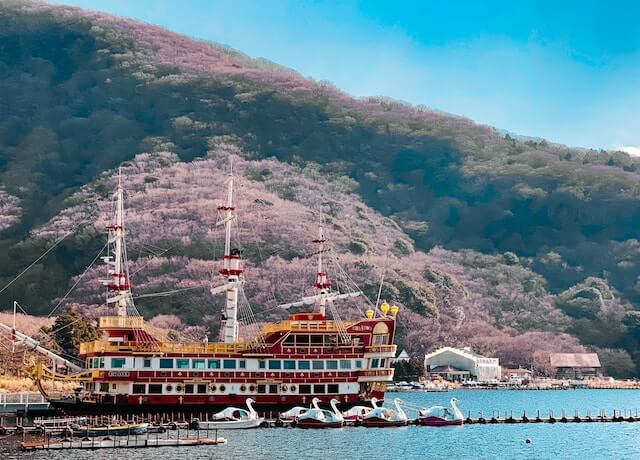
Looking to hop into a red wine-themed pool? They’ve got you covered. Want to feel like you’re soaking in coffee? They have that too. There’s a whole list of other attractions to choose from too:
- Swimming pools with a current
- Dr. Fish foot baths
- Outdoor camping options
Yunessun combines relaxation with entertainment for an unforgettable onsen adventure.
7. Sakura Onsen
Location: Toshima ward, Tokyo
Sakura Onsen is a popular destination whether you’re looking for the basic layout of indoor and outdoor baths, more intimate overnight stays with private baths , or even full-day spa pampering.

The building sources its mineral-rich hot spring water from deep underground, making it something of a modern miracle. The surrounding gardens also add to the serene atmosphere, making it a perfect hideaway from the city’s hustle and bustle.
Oh, and if you’re a fan of drama, you can put the cherry on top of your day by visiting the Tokyo Metropolitan theater.
8. Tokyo Yugara Onsen (Manyo-no-Yu)
Location: Machida, Tokyo
Located on the western edge of the Tokyo metropolitan area, Manyo-no-Yu is a towering complex that offers just about every relaxation service you could want. You can stay the night, go for a day trip, order fantastic Japanese food, and, of course, slip into all-natural onsen baths right in Tokyo.
Manyo-no-Yu is a great option for those looking for a break from the hustle and bustle of a typical Tokyo stay. You can plop it into the middle of a week in the capital or bookend your trip with a relaxing stopover.
Look forward to the following if you decide to head to Manyo-no-Yu:
- Terrace baths
- Indoor baths and saunas
- An array of wellness services like lymph massage and aromatherapy
- Rock saunas
If you’re looking for an onsen in Tokyo or nearby, there are plenty of options for overnight stays or day trips. Take your pick from traditional ryokan villages or onsen theme parks with wine baths. Tokyo has it all.
Choose the stop that works best with your itinerary and soon your troubles will be sliding off your back just like the mineral-rich hot spring water.
Share the adventures Share this content
- Opens in a new window X
- Opens in a new window Facebook
- Opens in a new window Pinterest
- Opens in a new window LinkedIn
- Opens in a new window Reddit
- Opens in a new window Tumblr
- Opens in a new window WhatsApp
You Might Also Like
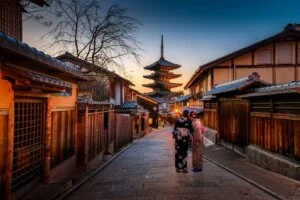
Kyoto’s Top 7 Natural Onsen Areas

Japan’s 11 Most Famous Onsen
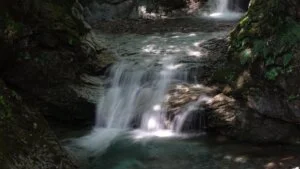
The 6 Best Onsen in Kumamoto
This post has 2 comments.
What a cool article it is! I wonder if you’ve already checked out Kamata onsen in Tokyo?
I haven’t, but I’ll have to give it a look! Thanks 🙂
Comments are closed.
- Skip to main content
- Skip to primary sidebar

Destinations
- Plan Your Trip
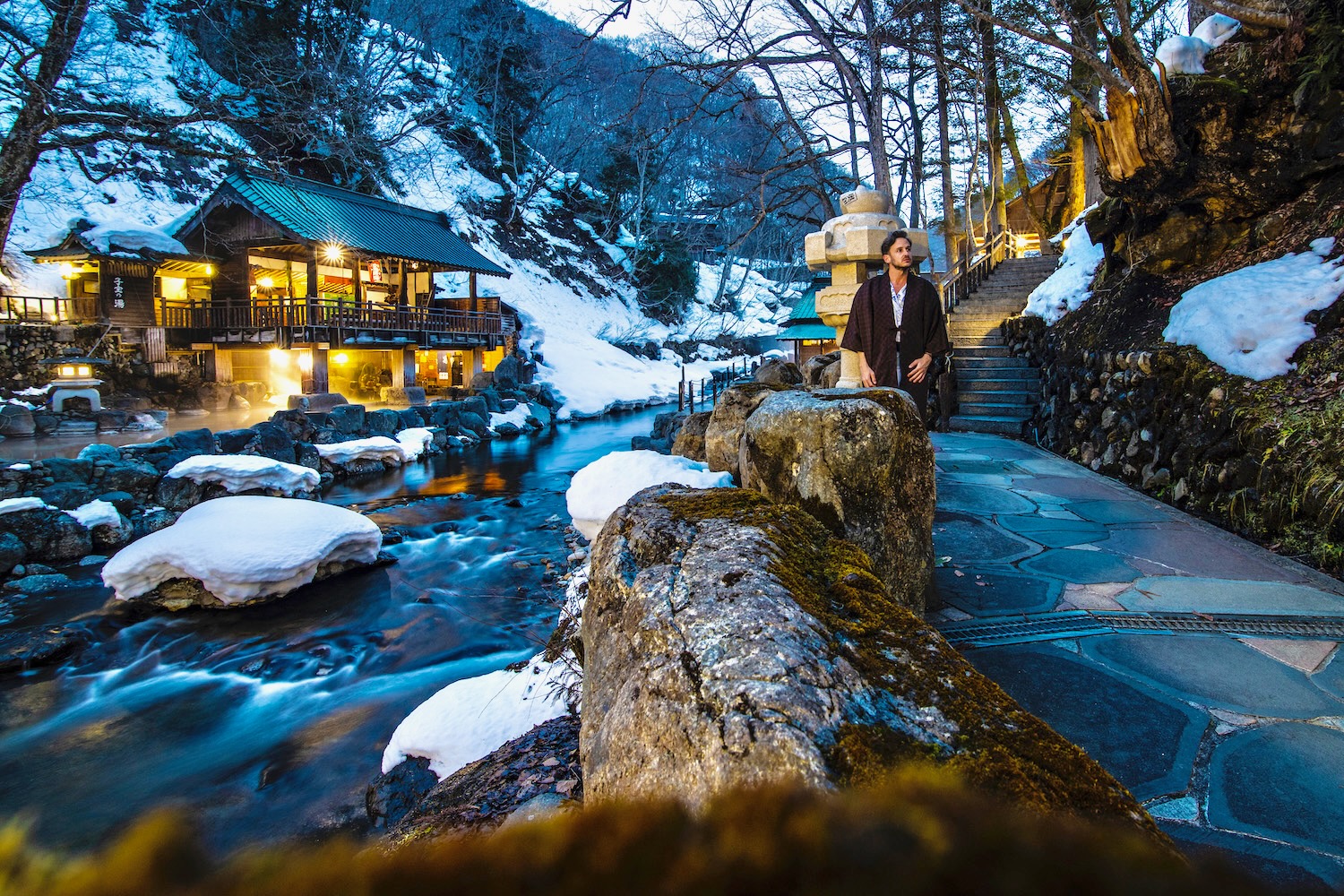
How to Soak in Japan’s Best Onsen
February 21, 2023 by Robert Schrader Leave a Comment
Onsen hot springs are as ubiquitous in Japan as stupidly cute things and cherry blossoms , so to the outside observer, a desire to find and stay in the best onsen in Japan might seem pointless.
It isn’t pointless, of course, a fact that will become almost immediately evident when you set foot onto the grounds of Takaragawa Onsen . Located in the foothills of the Japanese Alps about 90 minutes north of Tokyo by Shinkansen bullet train, this is one of my favorite places I’ve ever stayed in Japan.
The property boasts four outdoor hot springs and a ryokan that straddles—surprise—the Takara River, among its other delights. Whether you’re planning to visit Takaragawa Onsen from Tokyo on a day trip, or plan to stay here overnight as I often do, I have feeling you’re going to want to continue reading.
Takaragawa Onsen Feels Like Home
Most onsen in Japan are just, well, onsen, which is to say hot springs. When I was traipsing through the ancient cedars of Yakushima Island , for example, I would end each day at a local one, paying 200 yen to the old woman waiting in the entrance as I passed by, then relaxing to my heart’s content—but never for the night. At Takaragawa Onsen, on the other hand, the hot spring itself (which I’ll talk about in just a minute) is merely the unifying attraction.
Although I suppose you could simply bathe for the day, you’d be missing out on another amazing aspect of being here, which is staying in the attached ryokan , or traditional Japanese inn. The main building at Takaragawa dates back to 1955, which gives these traditionally-constructed and designed rooms an even more rustic feel. Featuring floor mattresses laid out on tatami mats, with indoor sitting areas that look out over the river, the rooms here are simple, but they’re exquisitely comfortable as well, all part of why I think this might be the best onsen in Japan.
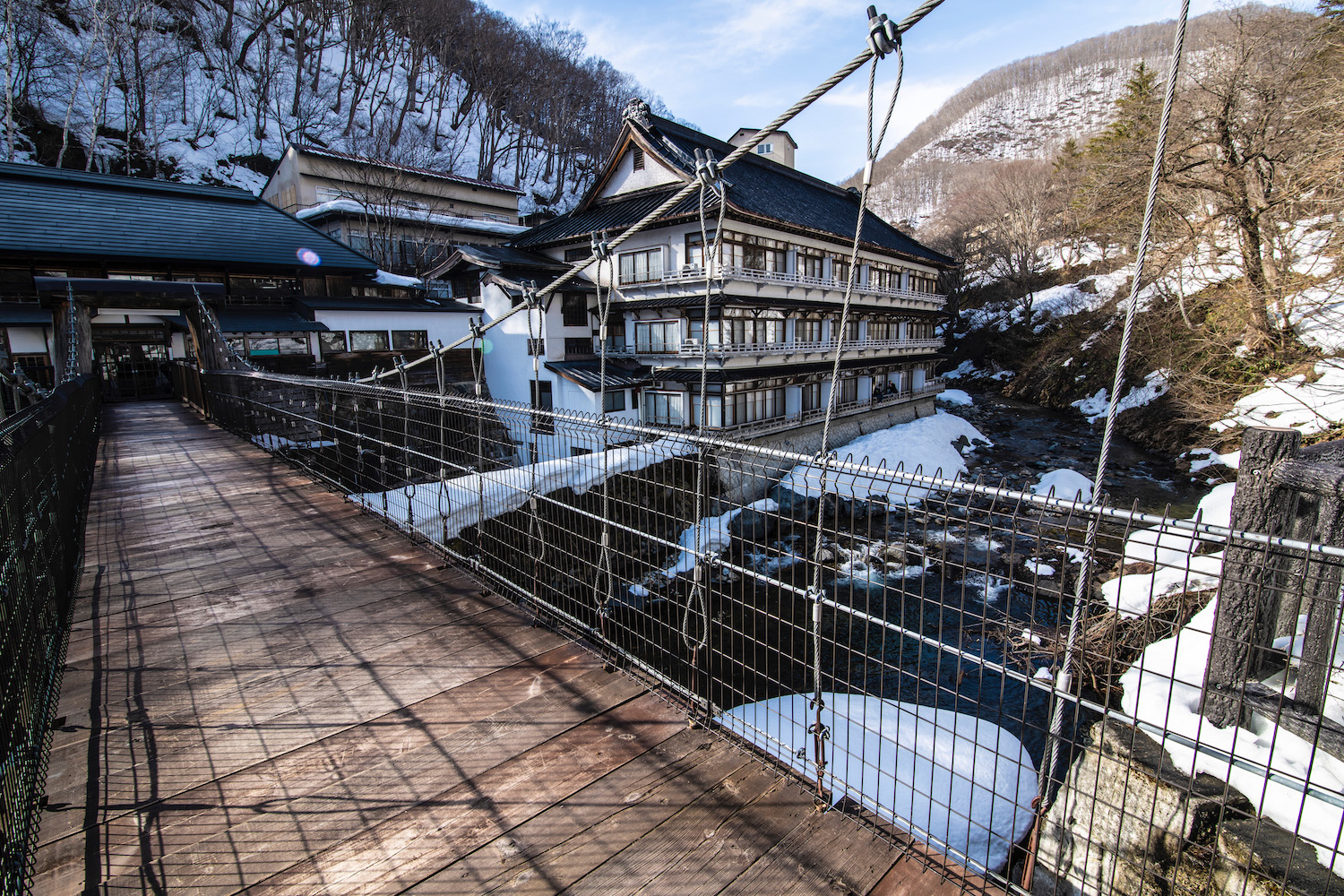
5 Reasons to Visit Takaragawa Onsen
The onsen at Takaragawa very much deserves its reputation as the best onsen in Japan. Or, I should say, their: Four outdoor onsen are available here, three co-ed and one for women only. Regardless of which onsen you choose, or how many other people accompany you, all feature relaxing stone bottoms and walls, traditional Japanese statues and wooden awnings to shield you from the rain and snow that fall here much of the year.
The seasons
Yes, you heard me right: It’s cold here much of the year. In late April, when I first visited, it hovered around 12-13ºC during the day. There were no leaves on the trees; there was still plenty of snow on the ground. In February, when I most recently visited, several feet of snow were on the ground; the air was far below freezing. These examples are to say nothing about the lushness of the green leaves in summer, which turn scarlet and golden in the Japanese autumn .
The convenience
Another great thing about the onsen at Takaragawa is that it’s open 19 out of 24 hours, which means that if you’re a night owl or an early bird, you can essentially enjoy a private onsen in Japan while everyone else is sleeping. Many onsen in Japan have short operating hours, which is not the case here. You can bathe as early at 5 AM, and as late as midnight.
In spite of its fair price, Takaragawa affords guests incredible luxuries, such as private dining rooms and microbrewed sake . Indeed, no matter how much money you end up paying to stay here, there’s something to be said about the sublime relaxation a couple of nights here affords, whether it’s at the end of one month in Japan or caps off a much shorter trip.
Even if you spend just one night at Takaragawa Onsen, it feels like taking a graduate-level course in Japanese cuisine, whether you enjoy crispy seafood tempura with green tea salt, prepare shabu-shabu and grilled fish right at your table or enjoy cold dishes like pickled umeboshi plum and, of course, sashimi , all served kaiseki -style in a private dining room.
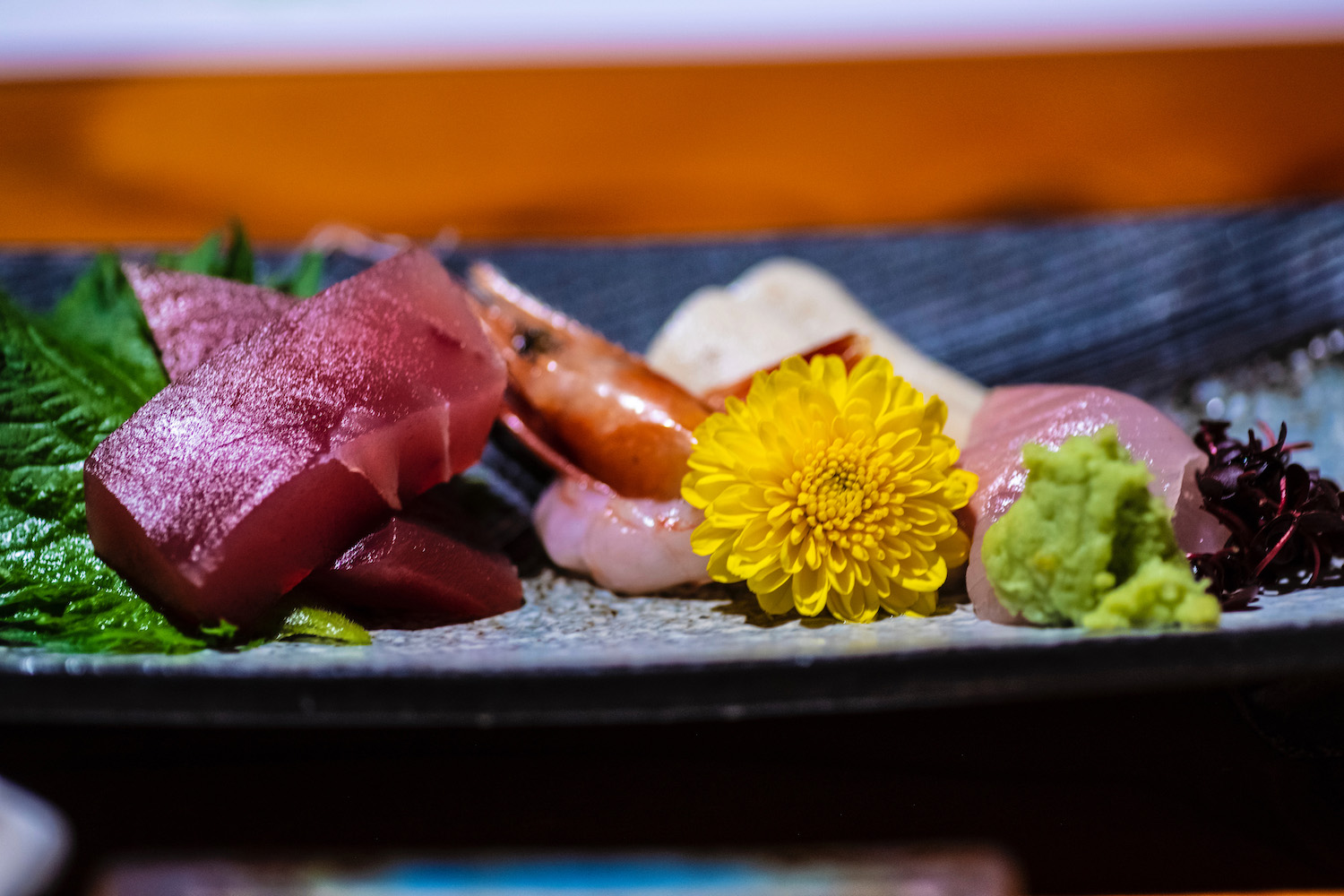
How to Get to Takaragawa Onsen
Even if you don’t end up loving Takaragawa Onsen quite as much as I do, it’s undoubtedly the best onsen near Tokyo. And it is very near Tokyo, to the extent that I often recommend it as a last stop on the custom Japan itineraries I plan for travelers —many head straight from Takaragawa to Haneda or Narita airports .
From Tokyo Station, you’ll want to ride the Joetsu Shinkansen northward to Jomo-Kogen, where shuttle buses to Takaragawa Onsen (you’ll need to reserve your spot at the time of booking) depart a couple of times per day. Depending on the location of your hotel in Tokyo, door-to-door travel time should be under three hours. While most people opt to stay here overnight, it is possible to do a Takaragawa Onsen day trip if you time things just right.
Other FAQ About Takaragawa Onsen
How do you get from tokyo to takaragawa onsen.
To reach Takaragawa Onsen from Tokyo, ride the Joetsu Shinkansen to Jomo-Kogen station, where shuttles for Takaragawa Onsen will take you onward to the ryokan . Note that you need to reserve your place on these vehicles (which are complimentary) in advance, ideally at or just after the time of booking.
Can I go to Takaragawa Onsen if I have tattoos?
Takaragawa Onsen, like most privately operated onsen in Japan, does allow guests with tattoos to bathe. However, out of cultural consideration for the Japanese guests at the hotel, you could consider covering up your tattoos if possible. Absent this, you might bathe early in the morning or late in the evening for the sake of discretion.
How much does Takaragawa Onsen cost?
Takaragawa Onsen offers a variety of accommodation plans, from à la carte rooms, to room-and-board plans with breakfast and dinner, including the option to enjoy food and drink in private dining rooms. Although you can sometimes find rates as low as ¥10,000 per night, the average person spends between ¥20,000-40,000 per night at Takaragawa Onsen.
The Bottom Line
Takaragawa Onsen is probably my favorite hot springs hotel in Japan. Superlatives notwithstanding, the reality of Takaragawa Onsen—a heritage inn set in a heavily wooded ravine, which dramatically displays all four of Japan’s seasons as you bathe amid them outdoors—is enticing to anyone with a pulse. The question (once you commit to visiting, of course) is how many nights to stay, and how to integrate this magical place into your larger Japan trip. Do you sleep here for a night or two, or take a day trip from Tokyo to Takaragawa Onsen? Answering this question correctly is yet another reason you should consider hiring me to plan your trip to Japan .
Plan Your Japan Trip

Subscribe to email updates!
Words, images and design ©2018-2024 Robert Schrader, All rights reserved. Read Privacy Policy or view sitemap .
Japan Travel Guide – Hokkaido | Tohoku | Tokyo | Kyoto

5 Best Onsen Towns to Visit near Tokyo
Onsen are very popular experiences, especially if you are a newcomer to Japan . These hot spring baths take advantage of the natural volcanism of Japan to offer visitors the opportunity to bath in soothing warm waters. Onsen have been a part of Japanese culture for a very long time and have a rich tradition built around them.
If you’re visiting Tokyo , there are plenty of onsen towns that offer tourists a relaxing experience. They offer an excellent break from busy city life.
We feature the ones that are not located in Tokyo but outside the city and they are often considered the best when you plan on visiting as part of your day trips from Tokyo . Don’t worry as they are easily accessible by trains. You’d better visit one of these at the weekend and stay a night there for the best onsen experience .
Are you ready to explore them and witness Japan’s iconic landmarks along the way?
Here are five great and most popular onsen towns near Tokyo:
1. Hakone Onsen

Hakone has been a popular area for natural hot spring baths for centuries. The town has many bathhouses, drawing from more than a dozen springs.
There are a number of inns you can stay at that have their own onsen. Many of these also open their doors to day visitors, as well.
Tenzan , a traditional Japanese style onsen and one of the most popular bathhouses in Hakone, has some lovely onsen pools, including many outdoor ones and restaurants and cafe nearby. Many of the bathhouses offer spectacular views of the surrounding area and sit in peaceful woods.

The Hotel Green Plaza Hakone is another awesome onsen hotel where you can stay overnight if you want to with stunning views of Mount Fuji . It offers its baths both for hotel guests and day-tripper. It’s a 3-minute walk from Ubako Station on the Hakone Ropeway .
You can easily reach Hakone by rail, taking the Odakyu Railway from Tokyo’s Shinjuku Station to Hakone-Yumoto station, a ride of about 85 minutes at a cost of 2330 yen.
2. Kusatsu Onsen

Located in Gunma Prefecture , this small mountain town has the largest flowing water volume of all the hot springs in Japan. There are also some of the most acidic waters in Japan, which kills all bacteria and other microorganisms in the water.
Because of the unique properties of the waters, Kusatsu has developed its own bathing traditions. There are two bathing styles that are unique to Kusatsu and you should experience them both separately for skin beautification and blood circulation.
The Jikan-yu style has bathers pray at a small indoor shrine. The water is then stirred by the bathers, lowering its high temperature and helping the body absorb the steam after vigorous exercise.
The act of stirring the water is called Yumomi , which you can see in the Netsunoyu building located adjacent to yubatake (Hot Water Field, the symbol of Kosatsu).

Everyone usually sings a song at this point, too, opening up the lungs. When bathers enter the water, they cover their heads with towels and pour water on the back to help benefit from the healing properties.
This is a more coordinated onsen ritual than many and bathers will follow the bath leader’s call, staying in the water for only three minutes.
Awase-yu, a traditional bathing culture, is more relaxed. Bathers soak in four or five tubs of increasing water temperature to help them take the heat.
You can experience this bathing tradition at Otakinoyu, a popular hot spring in Kusatsu. Besides, this onsen offers private “Shakunage” baths for rent at 2,000 yen per hour, available for couples and families to bathe together.
There are only few restaurants and shops that serve guests to this unique onsen town, as well.
You can reach Kusatsu by taking the JR limited express from Ueno Station to Naganohara-Kusatsuguchi Station, then taking a bus thirty minutes to the town, or by taking a number of buses.
3. Atami Onsen

For centuries, the waters of Atami have appealed to bathers. Located on the Izu Peninsula , Atami is a very popular destination for couples with many excellent hot springs resorts. The most famous spring is the saltwater spring, which is very unique among Japan’s many onsens.
This is a very romantic trip, with plenty of food and shopping for visitors, including Onsen-manju , a sweet dumpling that Atami is famous for.
There are also plenty of other sights to see besides the onsen, including Atami castle , some wonderful museums, and the Akao Herb and Rose Garden.
Atami Korakuen Hotel is one of the largest hotels with natural onsen in the Atami area offering a panoramic view of the ocean, a large public bath and reserveable open-air baths.
You can reach Atami by taking the Tokaido Shinkansen , or limited express trains (80 mintues), which go straight there. Your fastest option, the Shinkansen, takes 50 minutes.
4. Ikaho Onsen

In Gunma Prefecture, Kusatsu Onsen is not the only onsen resort town you can explore rather it has some and one of the most popular among them is Ikaho Onsen . One interesting fact and the uniqueness you find here is it provides you iron enriched hot spring water.
The charming small town is centered on a 300-meter-long set of stone stairs that lead through the middle of town. These stairs are lined by shops and places to eat.

A visit here will seem like a trip back in time. The town has a hidden feel. There are many onsen, as well as some excellent sightseeing on the Ikaho Ropeway . Depending on the season, you can go fruit-picking or enjoy some spectacular fall foliage .
In this area, many tourists also visit Mizusawa Temple, Mount Haruna and Lake Haruna to enjoy picturesque nature.
To reach Ikaho by train, take the Shinkansen from JR Tokyo Station to Takasaki Station, which is a 60-minute ride. From there, take the Joetsu Line to Shibukawa Station, for a grand total trip time of around 3 hours.
You can stay at Mimatsukan for a pleasant and memorable stay in the area of Ikaho Onsen Town. It offers a spacious indoor hot spring bath and a rooftop outdoor one, which I particularly like.
5. Kinugawa Onsen

For most visitors to Nikko, they want to explore its historic buildings including Toshogu Shrine, and Rinnoji Temple, and Okunikko area to enjoy the beautiful landscapes of Lake Chuzenji, Ryuzu Waterfall, Mount Nantai, Kegon Waterfall, Mount Hangetsuyama, Irohazak – the winding roads and so on.
Nikko is at its best in autumn when surrounding areas are blanketed by stunning fall colors. To find out more about Nikko’s exclusive autumn nature, click here.
If you plan to visit Nikko and stay overnight in a perfect place with onsen baths, choose Kinugawa Onsen.

You can stat at Nanaeyae that offers open-air hot spring baths, beautiful views of the valley, and authentic Japanese dishes. The hotel is a 5-minute walk from Kinugawa Onsen Station .
This onsen town is a place to sightsee in the morning and then relax in hot springs for the rest of the day. Stay at one of the many inns along the river Kinugawa. It is a good idea to book a ride on a riverboat to get some of the best views of the area.
Don’t forget to enjoy the foot baths that you find here, they are free!

For the more athletic, there are plenty of excellent hikes that allow you to get closer to nature. You can also visit the nearby theme park of Edo Wonderland, which is an educational park that immerses visitors in life during the Edo period.
Kinugawa can be accessed by train. In Tokyo, take the Tobu Nikko line toward Nikko from Asakusa Station .
Onsens often have gender-segregated bathing areas, though this can vary, as can the clothing requirements. Some ban tattoos, as these are associated with organized crime.
You can learn some important onsen etiquette . Be sure to learn and follow the onsen rules.
Share this:
- Click to share on Facebook (Opens in new window)
- Click to share on Twitter (Opens in new window)
- Click to share on Pinterest (Opens in new window)
- Click to share on LinkedIn (Opens in new window)
- Click to share on Telegram (Opens in new window)
- Click to share on Reddit (Opens in new window)
- Click to share on WhatsApp (Opens in new window)
- Click to email a link to a friend (Opens in new window)
Leave a Reply Cancel reply
Follow us on Facebook
Hot spring bath with great views of Mt. Fuji!!!!


Takaragawa Onsen: Full Travel Guide
With over 3,000 hot springs dotted across Japan, from north to south you can find an onsen and enjoy some true relaxation.
The Takaragawa Onsen Osenkaku is located in the Minakami Onsen area and can form a day trip away from Tokyo.
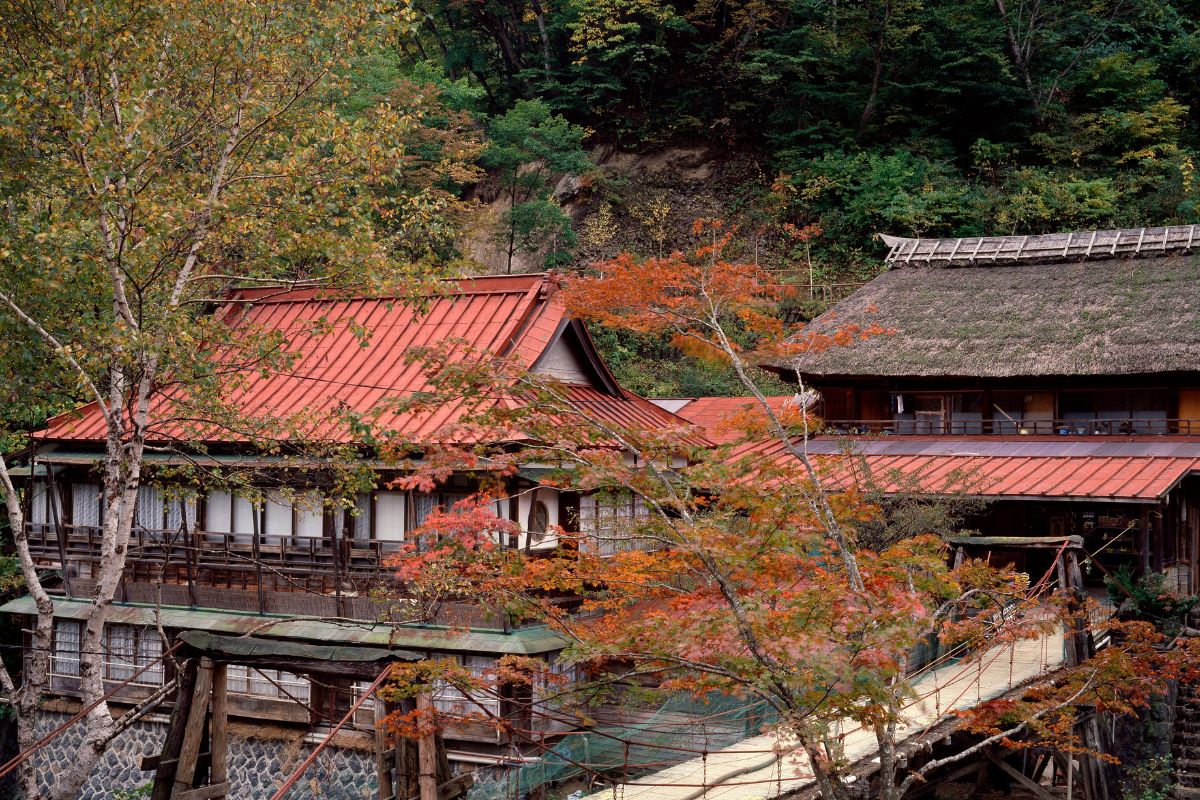
With one of the largest open-air outdoor baths, you can enjoy the sights of nature while soaking in the hot spring. The onsen is up in the mountains in Gunma Prefecture and can be accessed by train or bus.
In this guide, we will detail how to get to Takaragawa Onsen from Tokyo. This will include by train and then by bus.
We will also look at why you should visit Takaragawa Onsen including the different baths and the rates.
Getting To Takaragawa Onsen By Train And Bus
One of the best ways to get across Japan is by train and that’s certainly the case for most of the journey to get to Takaragawa Onsen.
From Tokyo Station, take the JR Joetsu Shinkansen all the way to JR Jomokogen Station which should take around one and a half hours.
Alas, that’s where the train ride ends but there is a bus and a further shuttle bus available for the final couple of legs of the journey.
The Bus To Minakami Station
After the train journey, you will need to take a bus which goes to Minakami Station.
Once there, you can decide to catch another bus to Takaragawa Onsen Iriguchi and that bus costs 1,050Y where there is a courtesy car to the resort itself.
There are two buses available directly to Takaragawa Onsen from Minakami Station during the day. The first one is at 10.45am and a further one at 1.35pm while it costs 1,150Y for the half-hour journey.
However, if you time your journey properly, you may be able to take a free courtesy bus instead. There are three shuttle buses available, two from JR Jomokogen Station and one from JR Minakami Station.
The trip to Minakami should be picturesque as there are more than a dozen hot springs to be found in the region.
Several resorts have been built amongst the valleys and mountains, including Takaragawa Onsen. Another nearby onsen tucked away in the mountains is Hoshi Onsen which is another rustic ryokan.
Then there is Sarugakyo Onsen which is a resort with a hot spring located next to Lake Akaya.
The Courtesy Bus To Takaragawa Onsen
Should you get to JR Jomokogen Station at either 1pm or 3pm, or to JR Minakami Station at 3.15pm, you can take the free courtesy bus.
Ensure that you make an advanced reservation first yet this is one of the perks of booking at the onsen.
Why You Should Visit Takaragawa Onsen
If there is one standout reason to visit Takaragawa Onsen, it is the open-air outdoor bath.
This is one of the biggest to be found in Japan, it opens ample room and is situated next to the stream of Tone River.
As you dip into the hot spring, you can gaze at nature and the scene changes with the seasons, it’s particularly enjoyable in winter when the snow falls.
The Different Baths
With one of the largest open-air outdoor baths, that should be enough to tempt you away from Tokyo for the day. However, there are a total of five different types of baths including four outdoor baths.
One of those outdoor baths is for females only while the other three are decidedly mixed-gender. Then there is one indoor bath which is separated for males and females.
For the mixed-gender baths, there is a decision to be made regarding whether to go completely naked or not. Visitors can use towels which are provided by the onsen itself.
This is one of the underlying reasons why the onsen proves so popular for visitors from overseas. That hot spring water is also of a noted high-quality with several health benefits. These include for muscle pain, arthritis, and neuralgia.
While Takaragawa Onsen has a huge open-air outdoor bath, the scenery is a huge part of the draw. The onsen also includes a ryokan and the traditional Japanese hotel has several elegant guest rooms.
You can also enjoy a range of authentic Japanese cuisine if you gain an appetite.
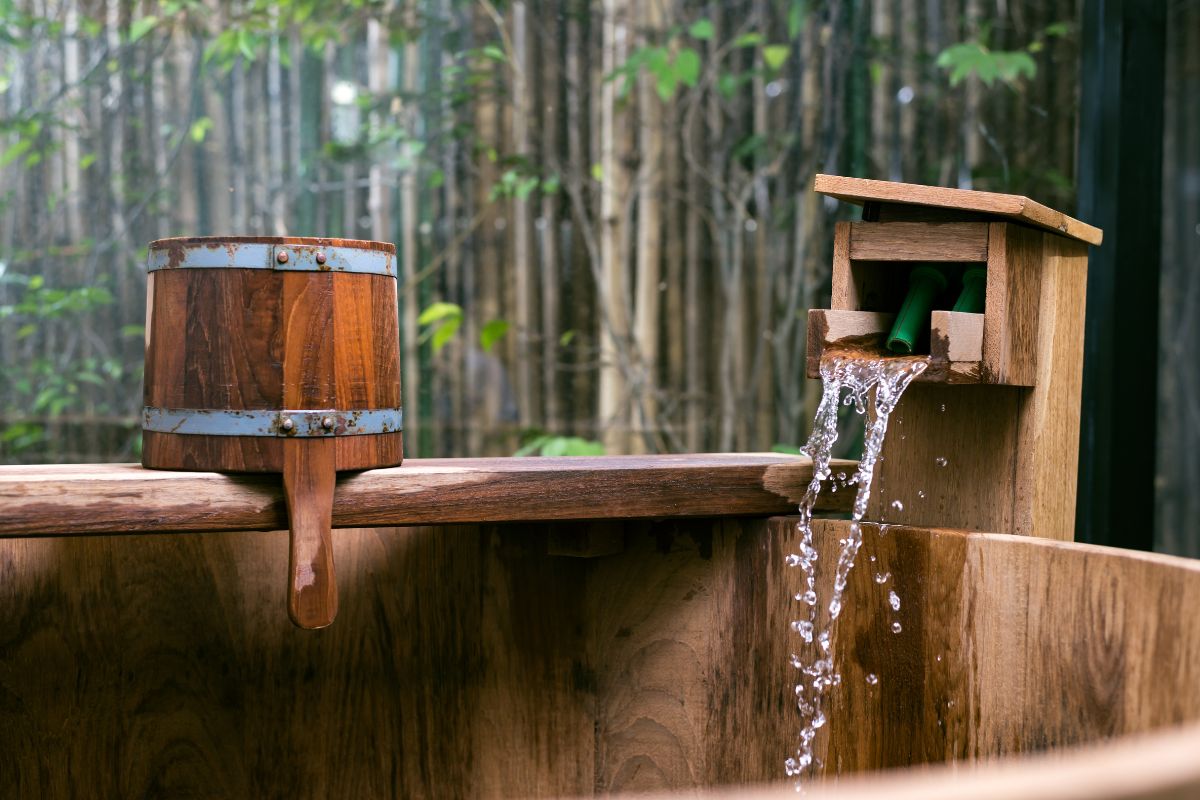
The daily rate for the onsen is 1,500Y and the facilities are open from 9am to 5pm for daily users. Staying at the ryokan starts at around 15,000Y for each person per night.
While the onsen bath is available to visitors during the day, the retreat is ideal for an overnight stay. If you do decide to stay, the onsen bath has a 24-hour availability for those guests who are staying overnight.
Final Thoughts
Takaragawa Onsen is a world-class facility in Gunma Prefecture, a northern mountain village. In 2013, it was named among the top ten hot springs in the world and little has changed since then.
Bathing outfits are insisted upon, which may be a relief for foreign visitors, and the day trip represents a part of authentic Japanese culture and hospitality.
Make sure that you take your camera as the sights to be seen from the onsen are so dreamy they are worthy of being on postcards.
Frequently Asked Questions
What is rare about takaragawa onsen.
The onsen is rare in that it is a hot spring bath that insists on a bath dress. All bathers in the Japanese facility must wear the bathing dress which is required.
The practice of nude bathing, and even using your own bathing suit, is not permitted.
What Different Types Of Accommodations Are Available At The Ryokan?
Each guest suite in the Main Building comes with a washroom and also comes with a living-room heating system too. The Main Building suites were established back in 1955 and were built from pine trees.
There are six guest suites on the first floor, five guest suites on the second floor, and another five guest suites on the third floor. Both the second and third floors also have a pantry.
The rooms on the First Annex are also built from wood and were established even earlier, in 1936.
In this two-storey building, there are three guest suites on both the first and second floors, each with a living room heating system.
The East Building is newer, even though it was built from iron and concrete in 1966. On the first floor, there is a pantry, a restaurant, a dressing room, and a public bath.
On the second floor of the East Building, there is a pantry and six guest suites, five come with a bathtub and another has a washroom.
There is a single guest suite on the third floor which has a front lobby. Every guest suite on the fourth and fifth floors comes with a washroom for that extra touch of luxury.
There are eight guest suites on the fourth floor (with a pantry) and six on the fifth floor while the East Building also has a banquet hall on the fifth floor.
- Recent Posts
- 16 Best Websites To Watch Japanese Movies With English Subtitles - May 11, 2023
- Is ZIPAIR The Best Airline For Traveling To Japan? - May 11, 2023
- Ryu Murakami Vs Haruki Murakami – Which One Should You Read? - May 11, 2023
Related Posts:
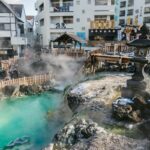
Gaijinpot Blog

10 Winter Onsen Trips From Tokyo
Looking for a charming getaway to warm up this winter? These scenic hot springs are just a short trip away from Tokyo.
By Elizabeth Sok Dec 25, 2023 5 min read
As cold weather sets in, why not plan your next trip outside the city ? The ten hot spring areas below represent a variety of onsen (hot spring) styles and trips, depending on your needs. Yugawara is fantastic for history buffs, while Kinugawa has fun attractions for those traveling with little ones. Plan a girl’s weekend, couples’s escape or family getaway in Atami, hitting up the most stylish cafes or enjoy romantic sea views from an open-air bath in Ito. Scroll down for the hottest onsen near Tokyo this winter!

Atami Onsen (Shizuoka)

Atami represents one of the premiere Kanto resorts of the Showa era. Its quick access from Tokyo, stunning beaches, cute cafes, shrines and, above all, its luxurious ocean view onsen make it a popular site for a refresh from city life. The chloride-rich spring waters here, known for their heat-insulating properties, are beneficial for helping skin maintain its moisture and for those sensitive to cold. As such, Atami Onsen is an ideal place to relax your body in these chilly winter months.
Ito Onsen (Shizuoka)

Located east of the Izo Peninsula, the Ito Onsen area is overflowing with gorgeous sites to visit, from port towns to beaches to mountains and lakes. The onsen here is plentiful, with over 150 establishments in Ito City offering hot spring baths. Known for its open-air onsen with fantastic sea views and soft water baths with minimal hard minerals, Ito’s waters help smooth skin and soothe minds. Check out nearby Ito Marine Town Michi no Eki for local gourmet food and Tokaikan Former Ryokan for stunning Japanese architecture and history.
Hakone Onsen (Kanagawa)

As one of Japan’s most popular hot spring resorts, Hakone has many outdoor onsen with spectacular views and private-room baths ideal for visitors bearing tattoos. Don’t miss Hakone Kowaki-en Yunessun, an onsen theme park where bathers can wear swimsuits! Hakone is known for its various mineral baths, including sodium chloride, calcium sulfate and alkaline. Hakone is perfect for day trips with its extensive network of higaeri onsen, such as Hakone Yuryo, where you can sample several different onsens on the same day.
Yugawara Onsen (Kanagawa)

Known for its abundance of clear low-alkaline waters, Yugawara Onsen’s baths are wonderful for smoothing your skin. Also, the area around Manyou Park has many hot spring inns that provide rotenburo (open-air baths) in every room so you can enjoy your private outdoor onsen. Don’t miss the quiet forest and brooks of Manyou Park itself, where you can also explore shrines, drink green tea and see monuments to historical figures who frequented Yugawara Onsen.
Kinugawa Onsen (Tochigi)

Kinugawa Onsen is a hot spring resort with a 300-year history and stretches along the shores of the Kinugawa River. The baths have low alkalinity which helps with chills, tiredness and nerve pain. This area also has many ashiyu (foot baths) to sample. To get a better view of the natural surroundings, make a trek out to the Kinugawa River Ropeway and the Kinu Tateiwa Suspension Bridge. If you’re traveling with children, the region has several kid-friendly destinations, like the Tobu World Square and Nikko Edomura Theme Park.
Echigoyuzawa Onsen (Niigata)

This hot spring area is a veritable winter wonderland with ski slopes and piles of fluffy snow. Access is also easy and convenient, with many onsen establishments near the largest station. The waters at Echigoyuzawa have low alkalinity and are said to be effective at relieving tiredness and muscular aches. While in Niigata, be sure to sample the famous rice and sake! Check out Ponshukan: a local sake tasting and marketplace for regional specialties inside the station.
Kawaguchiko Onsen (Yamanashi)
Along with a wide variety of spas, saunas and foot baths, the hot springs around Kawaguchiko provide fantastic views of Mount Fuji. Even at Kawaguchiko station, often the starting point for touring around the Mount Fuji area, you can enjoy a free foot bath to wash away your fatigue. There are numerous onsen located around the Fuji Five Lakes region that are perfect for day-trippers. While Fujiyama Onsen is famous for its multi-mineral and vanadium baths, Yurari and Benifuji no Yu are notable for allowing day-use kashikiri (private onsen).
Nasu Onsen (Tochigi)

Nasu Onsen is located along the slopes of Mount Nasudake, the central peak of the Nasu mountain range. Dating back to the Nara period (710-784), the site is also renowned for its shikanoyu (deer spring), so named for a historical tale of an injured deer being completely healed by its waters. The Shika no Yu onsen offers traditional wooden indoor baths, allowing guests to bathe in sulfurous waters of varying degrees. The area is also popular for its excellent mountain hiking and breathtaking views via the Nasu Ropeway.
Isawa Onsen (Yamanashi)

Discovered in 1961, Isawa Onsen soon developed into one of Yamanashi’s largest hot spring areas. Over 100 hot spring baths and hotels along the Fuefuki River await travelers looking to sample different baths for their unique atmospheres and enjoy a bustling nightlife with a retro Showa-era vibe. With low alkalinity, the waters are said to be effective at healing muscle and joint pain, relieving fatigue and aiding with bruising. This area is also well-known for its fabulous fruits, so be sure to sample local produce there.
Kamisuwa Onsen (Nagano)

Surrounded by the Yatsugatake Mountains and the beautiful Lake Suwa, the Kamisuwa Onsen area is abundant in natural springs and home to the oldest onsen facility in Japan, now a national heritage site. Many of the waters in the region are of low alkalinity and very gentle. Combined with stunning lakeside views, they are deemed good for rehabilitation and for improving mental health, with positive effects on depression, anxiety and insomnia. Check out the local sake, too, which benefits from the Kamisuwa’s high-quality waters. The Suwa 5 Kura tasting tour features five of Nagano’s most famous sake breweries.
1-1 Suwa, Nagano - Map Kamisuwa station Have you visited an onsen in the winter months in Japan? Tell us about your experiences below!

Studying in Japan made easy
Our program offers full support to study Japanese or pursue higher education in Japan

Elizabeth Sok
Canadian writer and translator with a doctorate in history. She’s either running after her little ones or in her Kyushu garden with a cup of yame-cha and a book.
More articles by Elizabeth Sok
Leave a Reply Cancel reply
Your email address will not be published. Required fields are marked *
Post comment
This site is protected by reCAPTCHA - Privacy Policy - Terms of Service
The 10 Best Things To Do in Kawagoe
Explore historical landmarks, indulge in delicious street food and immerse yourself in the culture of Kawagoe.
By Abhijit Sen Apr 17, 2024 5 min read

The 10 Best Things to Do in Akihabara
Planning a trip to Akihabara, Tokyo? Here are our picks for the best 10 things to do in Japan’s otaku and pop-culture capital.
By Elizabeth Sok Apr 5, 2024 5 min read

The 10 Best Things To Do in Shinjuku
Looking to experience urban Tokyo? Here are the top ten things to do in Shinjuku, offering towering views and beautiful gardens.
By Elizabeth Sok Apr 3, 2024 4 min read

- Employers Area
- List Properties
- Advertise on GaijinPot
- © 2024 GPlusMedia Inc.
- Terms of Use
- Privacy Policy
- Travel magazine
Hot springs Tokyo day trips: Relaxation within reach
(0 - 12 years old)
Book a private experience
November 2, 2023

Greetings! I'm Akira Shimizu, a 31-year-old Nagoya native who has had the privilege of calling Tokyo home for the past six years. Today, I'm excited to introduce you to one of Tokyo's best-kept secrets—hot springs day trips, a delightful addition to your Tokyo tours .
Just outside of Tokyo, you'll discover hidden gems that offer a serene escape from the city's hustle and bustle. Join me as we delve into the world of onsen towns. I'm here to serve as your guide, helping you plan your onsen adventure with insights into costs and essentials. Together, we'll embark on a journey to uncover the natural hot springs offering easy day trips from Tokyo .
Onsen experiences in Tokyo
Getting to hot springs from tokyo, tokyo's best onsen day trips, hakone: a hot spring paradise, kusatsu: a tranquil escape, atami: a seaside onsen retreat, hakone yuryo: luxury in nature.
- Oedo Onsen Monogatari: Edo-period experience
The quaint onsen town of Hakone Yumoto
Yunishigawa onsen: scenic natural hot springs, japan's open-air baths, relax and unwind, explore the surroundings, budget-friendly options, overnight stay at a ryokan: immersing in onsen culture.

In the heart of Tokyo lie serene escapes like LaQua Spa and Toshimaen Niwa no Yu, offering a day of pure relaxation.
Beneath Tokyo's urban exterior, natural geothermal springs provide rich mineral waters, perfect for unwinding. Regarding costs, visiting an onsen in Tokyo can vary, typically from 300 to 2,000 yen, often including access to various baths and amenities.
Whether you're a local or a visitor, these onsen adventures promise a unique and revitalizing journey.
Join me in exploring Tokyo's tranquil hot springs and make your day trip an authentic and memorable experience.

When it comes to getting to those tranquil onsen destinations listed below, you've got a range of transportation options to choose from.
The Shinkansen, known as the Bullet Train, is an excellent choice for its speed and comfort. For an even more efficient and cost-effective experience, consider the Japan Rail Pass (JR Pass), which grants you unlimited access to Japan's extensive rail network, including the Shinkansen.
When it comes to getting around Tokyo Station and Shinjuku Station, the key to making your journey smoother is understanding the station layout and utilizing the assistance provided by station personnel.
Upon reaching your main station, you might find that a bus is your next ride to reach more remote onsen areas. These well-connected buses provide a seamless journey, letting you relish the anticipation of relaxation. With these transportation insights, your hot spring adventure is poised to be convenient and memorable!

When it's time for a peaceful escape, the finest onsen destinations near Tokyo await, promising a day of rejuvenation for your body and mind. From the green beauty of Hakone to the sophisticated charm of Izu, these getaways offer pure tranquility.
Take advantage of Japan's top hot spring spots for the ultimate relaxation.
Luxurious retreats like Atami, renowned for its coastal onsen, and Kusatsu, celebrated for its healing waters, provide a sublime experience with stunning views.
Discovering these serene escapes is essential. Nikko offers onsen amidst unspoiled natural beauty, while Kamakura invites you to a coastal retreat with a historical touch. These options are perfect for a quick getaway, providing soothing experiences just a short trip from Tokyo. Dive into these onsen day trip options and find the ideal spot for your relaxing break.

Stop by a Hakone onsen, known for its revitalizing properties and diverse choices. Consider staying at Gora Kadan, a traditional ryokan with private onsen and views of Mount Fuji, or the modern Hakone Yutowa for contemporary comfort and healing hot spring.
Indulge in unique experiences like wine baths at Hakone Kowakien Yunessun, where you can soak in red or white wine for added skin benefits. And savor delicious kaiseki cuisine while enjoying the serene ambiance of Kinnotake Tonosawa.
Book private experiences in Tokyo
When in Osaka make sure to try “kushikatsu”!
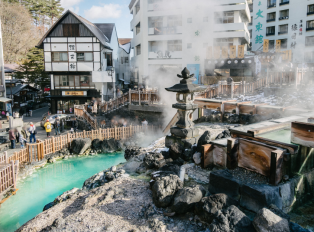
Discover Kusatsu Onsen, a hidden treasure nestled in the Gunma Prefecture. This onsen town boasts some of Japan's most therapeutic and naturally acidic waters, making it a must-visit for those seeking a genuine onsen experience.
A standout attraction in Kusatsu is the Yubatake, a captivating hot water field that reflects the town's deep connection to onsen culture. Here, you can immerse yourself in traditional onsen practices, including 'yumomi,' which is a method for cooling hot spring water before bathing.
The history of Kusatsu's healing waters dates back centuries, and exploring the geological wonders that give rise to these remarkable springs is a true delight. Take a moment to visit Sainokawara Park, where you can witness the comforting steam rising from the hot water and enjoy a peaceful walk amid nature.
As you explore Kusatsu's charming streets, savor local specialties like 'onsen manju' (steamed buns) and 'onsen tamago' (eggs boiled in the hot spring).

Experience the serenity of Atami's hot springs, which can be found in traditional ryokans, modern spa resorts, and public baths like the Atami Onsen, all with a beautiful ocean backdrop.
Atami is ideal for just a day trip from Tokyo, easily accessible by train. Start your journey with a soothing bath to relax, followed by a stroll along Atami Sun Beach. Be sure to relish the local seafood at the excellent restaurants in the area.
Be sure to relish the local seafood at the excellent restaurants in the area.
Discover Atami's captivating coastal scenery, including a visit to the MOA Museum of Art and the panoramic vistas from the Izusan Jinja Shrine. It's a day of genuine warmth, perfect for a memorable Atami experience!

Prepare to experience the delightful luxury of Hakone Yuryo. Located in the heart of Hakone, this exceptional resort offers a haven of relaxation, with various private and communal baths filled with the therapeutic warmth of natural hot springs.
Consider arriving early to make the most of your trip to Hakone Yuryo. Begin your day with a peaceful soak in a bath, followed by a stroll in the beautifully maintained gardens. Remember to enjoy a delicious kaiseki meal, and you can even treat yourself to a unique wine bath experience for your skin.

Welcome to Hakone Yumoto, a traditional onsen haven renowned for its therapeutic hot springs. This town offers an authentic public bath experience, providing a place to relax in soothing onsens with healing waters.
Take a stroll through the town's charming streets, where you'll find quaint shops and traditional tea houses. You can explore local crafts and enjoy some delightful snacks.
The town also offers a glimpse into Japan's history. You can visit attractions like the reconstructed checkpoint at Hakone Sekisho and enjoy the natural beauty of the Sengokuhara Pampas Grass Fields.
Let's explore the serene and authentic onsen town of Hakone Yumoto, where tradition and relaxation coexist.

Nestled in the serene embrace of Nikko's captivating landscapes, Yunishigawa Onsen is a hidden treasure waiting for you to uncover. This onsen town, surrounded by lush forests, offers a peaceful escape for nature enthusiasts and those searching for tranquility.
When planning your onsen day trip to Yunishigawa Onsen, make sure to harmonize your experience with the area's natural beauty.
Take a stroll along the riverbanks, where the soothing sounds of flowing water and the picturesque surroundings create a serene ambiance that envelops you.
For a unique onsen experience, consider indulging in an open-air hot spring with serene views of Yunishigawa's natural beauty. Many onsen resorts offer these tranquil baths, allowing you to take a break in warm waters while immersing yourself in the area's breathtaking scenery.
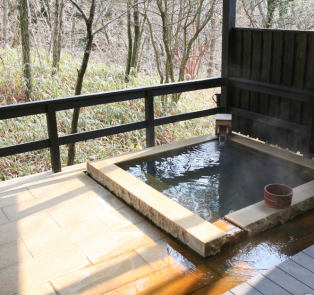
Explore Japan's open-air baths, a delightful respite from the city's constant hustle. These serene retreats are often nestled in natural settings, surrounded by lush greenery.
What makes an open-air hot spring special is the seamless blend of modern comforts and the beauty of the outdoors.
Many of these baths, such as Hakone Yuryo, are thoughtfully designed with relaxation in mind, offering a mix of hot spring pools and, on occasion, the beautiful scenery of Mount Fuji.
These baths are often located in spots with breathtaking scenery, making them perfect for unwinding and rejuvenating. The mineral-rich waters are believed to have therapeutic properties, providing a holistic wellness experience amid nature.
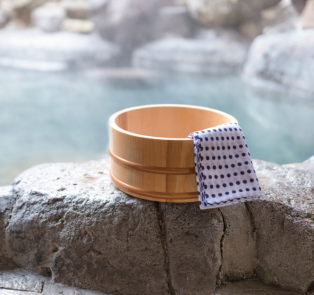
An onsen experience is all about finding solace for your soul. Onsen facilities are thoughtfully designed for one purpose: relaxation. Here, you'll find indoor and outdoor baths that wash away the day's worries. The peaceful surroundings and the serene ambiance create the perfect backdrop for unwinding. Each hot spring facility bears the mark of a rich history and tradition, honoring the deep cultural heritage of onsens. Take a moment to appreciate the aesthetics and immerse yourself in the timeless rituals of onsen bathing.
Understanding the do's and don'ts is crucial to make the most of your hot spring adventure.
Do's: include a pre-onsen shower, maintaining a tranquil atmosphere, using the small towel carefully, avoiding soap or shampoo in the water, and staying hydrated.
Don'ts: involve no bathing suits in traditional onsens, no photography for privacy, respecting the tranquility, and checking the onsen's tattoo policy. These guidelines ensure a respectful and blissful onsen experience in Tokyo, uniting relaxation and tradition.

Beyond the therapeutic hot springs, the neighboring attractions are a call to adventure and exploration.
In Nikko, near Yunishigawa Onsen, the intricate wood carvings at the UNESCO World Heritage site, Nikko Toshogu Shrine, are sure to impress.
Near Shibu Onsen, prepare for a unique encounter at Jigokudani Snow Monkey Park, where you can observe the snow monkeys' refreshing baths.
These nearby gems aren't just places to tick off a list; they're opportunities to forge meaningful memories and connect with the authentic spirit of Japan.

Understanding the expenses associated with a Japanese onsen visit is a wise move for travelers mindful of their budget. Typically, onsen visits come with admission fees, beginning at around 300 to 2,000 yen per visit. The good news is that you can discover special deals, such as morning or late-night discounts, that can significantly cut your costs.
Despite Japan's reputation for being an expensive destination, the reality is that you can enjoy hot springs without straining your budget. There's a multitude of options at your disposal. You'll find budget-friendly accommodations like hostels and guesthouses in hot spring areas.
In addition to the traditional onsens, you'll discover numerous public bathhouses, known as sento, offering a cost-effective entry point into hot spring bathing. And for travelers with a tighter budget, day trips to hot spring getaways near Tokyo are an excellent choice.

If you want to extend your day trip and stay overnight, why not immerse yourself in the heart of Japanese history and culture with a ryokan experience? These traditional Japanese inns offer a genuine glimpse into the past, featuring tatami mat rooms, comfortable futon beds, and delectable meals. Upon entering a ryokan, you'll have the chance to unwind in relaxing onsen baths and fully embrace the traditional way of life.
Places like Hakone, Kusatsu, and Gero Onsen are known for their traditional ryokans that offer an immersive cultural experience.
When considering your ryokan retreat, think about your preferences. Some ryokans are tucked away in the serene mountains, providing a sense of seclusion, while others are conveniently located in vibrant onsen towns, giving you easy access to local attractions.
Discovering Japan's hot springs can be as heartwarming as the thermal waters themselves, and it won't weigh down your spirits or budget. So, embrace the onsen experience with a relaxed smile!
Near Tokyo, you'll find a peaceful retreat in the form of natural hot springs. These accessible havens of tranquility offer a welcome respite from the city's fast pace. They're a soothing balm for your spirit, a chance to escape the daily urban hustle.
In a traditional onsen, you'll experience a wonderful blend of nature and culture. It's more than just relaxation; it's an opportunity for exploration, a haven of calm amidst the city's constant movement.
As you plan your next Tokyo getaway, consider these hidden treasures of onsen day trips. They're not just a solution for city living; they're an open invitation to immerse yourself in Japan's serene onsen and create enduring memories. It's a well-deserved treat!
Hello, curious traveler! Embark on a unique experience with Hello, curious traveler! Embark on a unique experience with City Unscripted Tokyo. Our personalized, private tours, led by local hosts, make you feel like you’re exploring the city with a knowledgeable friend. We’ll take you to well-known sights and reveal Tokyo’s hidden gems, unveiling stories typically missed by traditional tours. So unscript your journey, and see Tokyo through the eyes of our local hosts!

Top private experiences in Tokyo
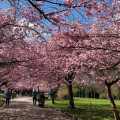
Tokyo in pink: discover the magic of the cherry blossom season

Your perfect half-day in Tokyo

Eat like a true Tokyoite

Epic Tokyo: A full-day tailored exploration

Get a head start: Kickstart your trip to Tokyo

On a roll in Tokyo! The sushi experience
We’ll pair you with the perfect host
There is no better way to see a city than with a friend who lives there. This is why we carefully match guests with their perfect host based on interested, personality and type of experience so they can discover a city beyond the tourist trail.
Find your perfect host and experience using our nifty little tool
Make your inbox happy with our travel tips and inspiration as well as exclusive offers and first access to new services.
You may also like
Drift through Tokyo’s iconic sights

Serene day trip from Tokyo

The best time to visit Tokyo and Kyoto: Discover the ideal season from a local

Best time of year to visit Tokyo: Uncover the ideal season for your trip

What is the best time to visit Tokyo? Your seasonal guide to Japan's capital

When is the best time to visit Tokyo, Japan? A detailed season-by-season breakdown
Explore our cities in japan.

Popular destinations

San Francisco

Mexico City

Read more Tokyo articles
4 Soothing Onsen Day Trips from Tokyo
www.jinya-ryokan.jp
Kanagawa Prefecture, Tokyo’s southern neighbor, abounds with beautiful vistas and natural hot springs. While these Kanagawa onsen and their surrounds are certainly worth an overnight stay, each works equally well as a day trip from Tokyo. Just be sure to check each one's tattoo rules before you go to avoid ending up in an awkward situation!
4. Hakone Yuryo (Hakone)
http://www.hakoneyuryo.jp/english/image/hotsprings/img_keyvisual_01.jpg
The town of Hakone is an overwhelmingly popular sightseeing spot in Kanagawa’s southwestern mountains, an area known for its onsen and stunning vistas of Mount Fuji. Hakone Yuryo has indoor baths, open-air baths, pottery baths, aromatic saunas and a smattering of private rooms with their own baths available to rent by the hour. Visitors are also invited to enjoy soft-serve ice cream, relax with a massage or stroll through the traditionally styled interior courtyard.
- www.hakoneyuryo.jp
3. Enoshima Island Spa (Fujisawa)
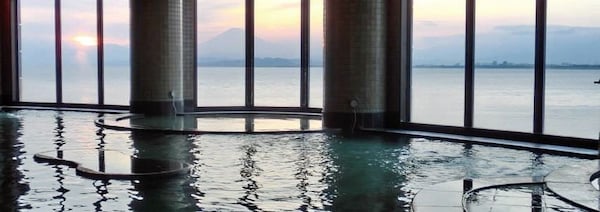
http://enoshimaislandspa.com/enoshima-island-spa/
Enoshima is a small island just off the Shonan coast in Fujisawa city, and there’s one location that’s got the island's upscale spa treatments covered. Enoshima Island Spa pumps hot water 1,500 meters (4,920 ft) from beneath the sea for use in its various onsen . The spa also offers massage and skin care packages, and its restaurant boasts impressive seaside views of Mount Fuji. While the spa doesn't have overnight accommodations, its website provides recommendations for nearby ryokan (traditional Japanese inns) and hotels.
- www.enospa.jp
2. Hakone Kowakien Yunessun (Hakone)
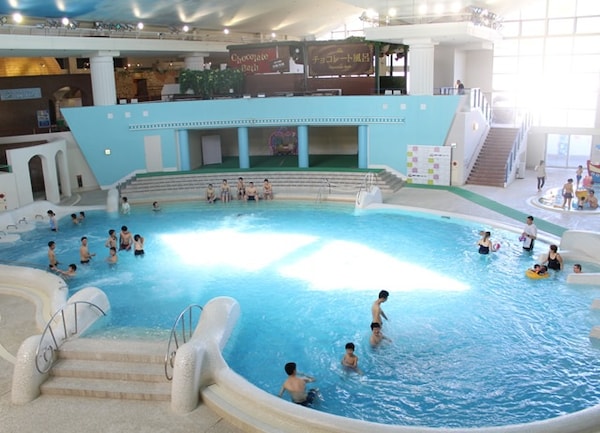
http://www.yunessun.com/enjoy/yunessun/gods.html
Lest Hakone take itself too seriously, the area also has one of Japan's most creative onsen resorts: Hakone Kowakien Yunessun. Billed as a “Hot Springs Amusement Park,” the resort has 25 themed water attractions. But what brings most people to Yunessun are the onsen infused with various beverages. Jet lagged? Soak in the coffee spa. Feeling Zen? Take a dip in the green tea pool. Time for a pick-me-up? Try the wine bath. And if you're wishing you had more than the usual modesty towel to cover up with, bring your swimsuit: some of the pools are co-ed, with bathing suits allowed.
- www.yunessun.com
1. Jinya Ryokan (Hadano)
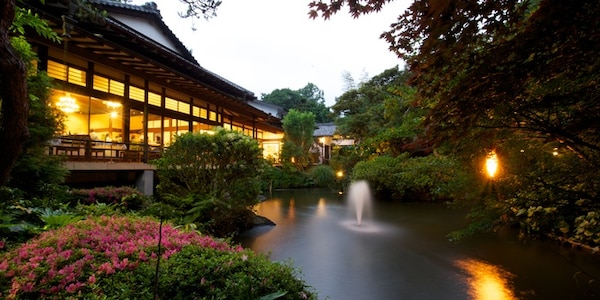
http://www.jinya-ryokan.jp/
Rich in history and natural beauty, Jinya Ryokan in the oft-overlooked city of Hadano has been welcoming travelers for centuries since its opening during the Kamakura Shogunate. The ryokan sits upon Tsurumaki Onsen, a spring said to have one of the world's highest concentrations of calcium, which Jinya claims can relieve rheumatism and neural pain. While the ryokan has several types of rooms to choose from for an overnight stay, Jinya also welcomes day-tripping visitors to reserve a washoku lunch, and its picturesque 3.3-hectare (8.2-acre) garden is open to all visitors.
- www.jinya-inn.com

This website uses cookies.
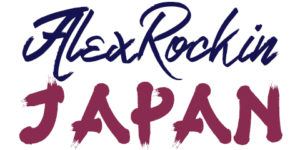
8 Best Onsen For Families With Children Near Tokyo
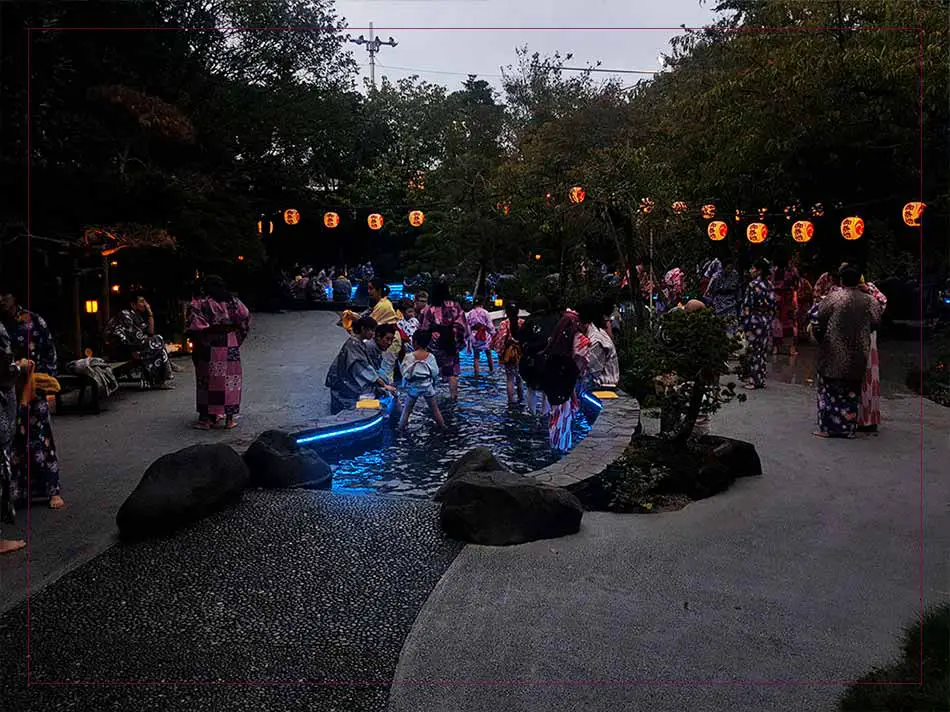
When planning your family trip to Japan you might be wondering about taking your children to a hot spring. Since I don’t have children I asked Japanese parents for help and they recommended me these 8 onsens for families with children in and near Tokyo city.
In Tokyo, the best onsens for families with children are Oedo Onsen Monogatari and Niwa No Yu, but for parents with a toddler or baby, Kom-Pal is considered the most kid-friendly Sento in Tokyo. As a day trip from Tokyo, you can find many family-friendly hot springs in Hakone and Ito Onsen.
The first 4 recommendations below are directly in Tokyo city. The other 4 family-friendly hot springs are near Tokyo, but so close that you can visit the onsen as a day trip. At the end of the post, I also have some general things you should know or keep in mind when visiting an onsen with your children.
1. Oedo-Onsen Monogatari (Odaiba)
Location: Odaiba, Near Ginza & Tsukiji Fish Market, Tokyo
General Information: Oedo-Onsen Monogatari (大江戸温泉物語) is located on Odaiba, a large artificial island overlooking Tokyo Bay. The island is actually one of my favorite places in Tokyo and I bring all of my family and friends there whenever they come to visit me. The futuristic ride over the Rainbow Bridge is already a highlight immediately followed by the giant Gundam Statue and plenty of other places for amusement and entertainment. I’m sure your children will love this place, too!
Onsen Theme Park: This is one of the best onsens in Tokyo for families with children because it is not only a real natural hot spring with open-air baths but also an Onsen town-themed amusement park. So in between or after soaking, your children can show how good they are at being a ninja or try out different traditional Japanese summer festival games. There is also a large Japanese Garden themed foot bath where you and your family can stroll around in Yukata.
The changing area, where you put on your free Yukata, and the onsen’s indoor and outdoor bathing facilities are gender-separated, but you can enjoy the open-air foot bath and the amusement area altogether as a family. If you or your children get hungry you will also find plenty of eateries offering traditional Japanese food from Ramen to Sushi as well as old-fashioned Japanese candy and treats.
The last time I went there with one of my friends, I saw many Japanese families with children and also a few toddlers. The only downside might be that Oedo-Onsen Monogatari is a bit more expensive than a normal onsen. But it also offers more entertainment than other onsen baths.
- Adults & children over the age of 12: ¥2,720 ($25 or 23€)
- Children ages 4 – 12: ¥1,058 ($10 or 9€)
- No fee for children under the age of 4
Access: The nearest Station is Telecom Center Station on the Yurikamome Line. This is the same line that brings you to the island via the Rainbow Bridge. From the station, it is a 6-minute walk to the Onsen. You can get to the onsen in about 30 minutes from Ginza and the Fish Market. Shibuya is about 40 minutes away and Shinjuku is about 50 minutes away. Unfortunately, the JR Pass is not valid on the trains towards Odaiba (Yurikamome Line and Rinkai Line).
Website: www.daiba.ooedoonsen.jp
2. Kom-Pal (Near Shibuya)
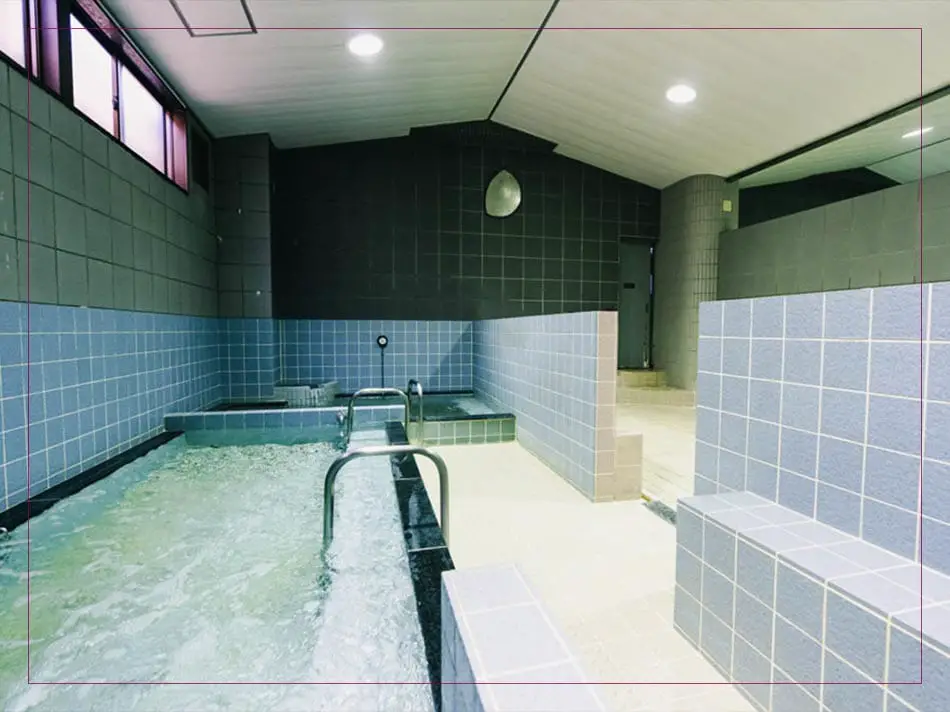
Location: Osaki, Between Shibuya & Shinagawa, Tokyo
General Information: Kom-Pal or Konparu-Yu (金春湯) is a family-friendly and authentic public bathhouse near Meguro River and right in the center of Tokyo. I’m pretty sure you have seen pictures of Meguro before since the river has become one of Tokyo’s most famous Hanami spots. Meguro is a more residential part of Tokyo and less popular for sightseeing, but Rinshi-No-Mori is a nice park to visit with children. You could also go to the unique Parasitological Museum. Shibuya, Meiji Shrine, Yoyogi Park, and other more famous sights are about half an hour away.
Family-Friendly Sento: This is actually not an onsen, but a public bathhouse called “Sento” in Japanese. Before you dismiss this option let me explain! Usually, I refrain from recommending public bathhouses in my onsen posts, but Tokyo is not an onsen town (there are a lot of amazing onsen towns near Tokyo , though) and the options are extremely limited. While a Sento is definitely not the same as an onsen, it still provides a similar and very authentic Japanese bathing experience. Out of all the family-friendly onsen and bathing facilities that I found directly in Tokyo, Kom-Pal is the most traditional one, in my opinion.
The gender-separated Sento has a history of nearly 100 years. It has 3 cozy indoor baths. One bath with a temperature of 42°C, one with a temperature of 40°C, and a cold one. Its bathing facilities are really, really basic but it is considered one of the most kid and family-friendly Sento in Tokyo. They have all kinds of toys children can play with while taking a bath and they also offer kids’ shampoo and a bath mat for babies for free. If you have very young children or a toddler, this is definitely the best place to go. The owner also has 2 really cute kids.
- Adults & children over the age of 12: ¥470 ($4 or 4€)
- Kids ages 13 – 15: ¥300 ($3 or 3€)
- Kids ages 7 – 12: ¥180 ($1.70 or 1.50€)
- Children younger: ¥80 ($0.80 or 0.80€)
Access: 12 minutes on foot from JR Osaki Station on the Yamanote Line
Website: www.kom-pal.com (Japanese only)
3. Toshimaen Niwa No Yu Onsen (Near Ikebukuro)
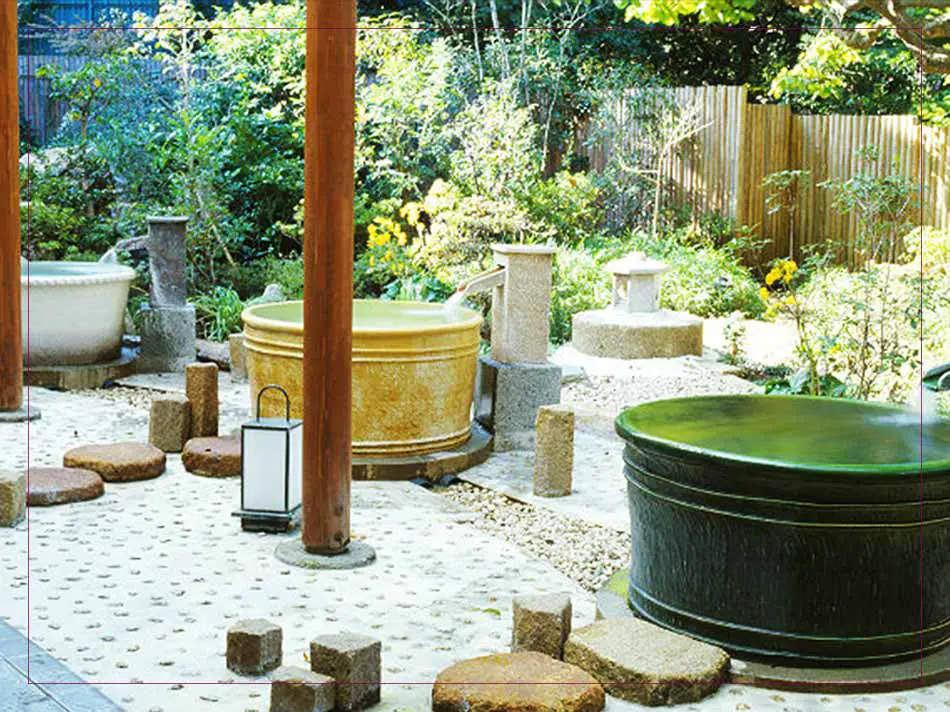
Location: Toshimaen, Near Ikebukuro & Shinjuku, Tokyo
General Information: Toshimaen Niwa No Yu (豊島園 庭の湯) sometimes also written as Niwa-no-yu is a natural onsen spa and bathing facility in Tokyo. You can get there in about 18 minutes from Ikebukuro Station and in about 24 minutes from Shinjuku Station. Both places are among the top 10 most visited spots in Tokyo. Sunshine City in Ikebukuro, for example, is a 240-meter-tall skyscraper perfect for shopping and entertainment and the Tokyo Metropolitan Government Office in Shinjuku has a free observatory from where you can see Mt. Fuji. Just around the corner from the spa is also Toshimaen, a water park with rides, slides, and pools perfect for kids.
Family Onsen & Swimming Pool: Niwa No Yu Onsen is an excellent hot spring spa for families with older children. It features 2 zones, a very beautiful gender-separated onsen, and a swimming pool area where you can bathe together with your whole family wearing swimwear. The onsen facilities are the most beautiful you will find in Tokyo at the moment. Very traditional and natural with a huge variety of open-air and indoor baths. In the huge swimming pool area, you can enjoy heated pools, outdoor pools, and a jacuzzi. They also have a nice Japanese garden with colorful Koi carp.
This is my No. 1 recommendation for onsen in Tokyo, but unfortunately, you can only come here with your children if they are junior high school students. That means they have to be at least 12 years old. This is the only reason why I didn’t put it on top of this list. Still, if your children are old enough forget about the other options and come to this place. Niwa No Yu is perfect for families because in contrast to the other onsen you can bathe together. Not in the onsen, but in the swimming pool area at least. Also, if your children are too shy or too old to run around in their birthday suits you could still try out an onsen by yourself while your partner takes care of the children in the pool area.
- Adults & children over the age of 12: ¥2,370 ($22 or 20€)
- Only junior high school kids or older are allowed
Access: Toshimaen Station on the Seibu-Ikebukuro Line is the nearest station. From the station, it is just a short 3-minute walk to the onsen facilities. Definitely a plus, but unfortunately you can’t use your Japan Rail Pass because the line belongs to the Seibu Railway.
Website: www.niwanoyu.jp (English Translation available)
4. Spadium Japon (1 hour from Shinjuku)
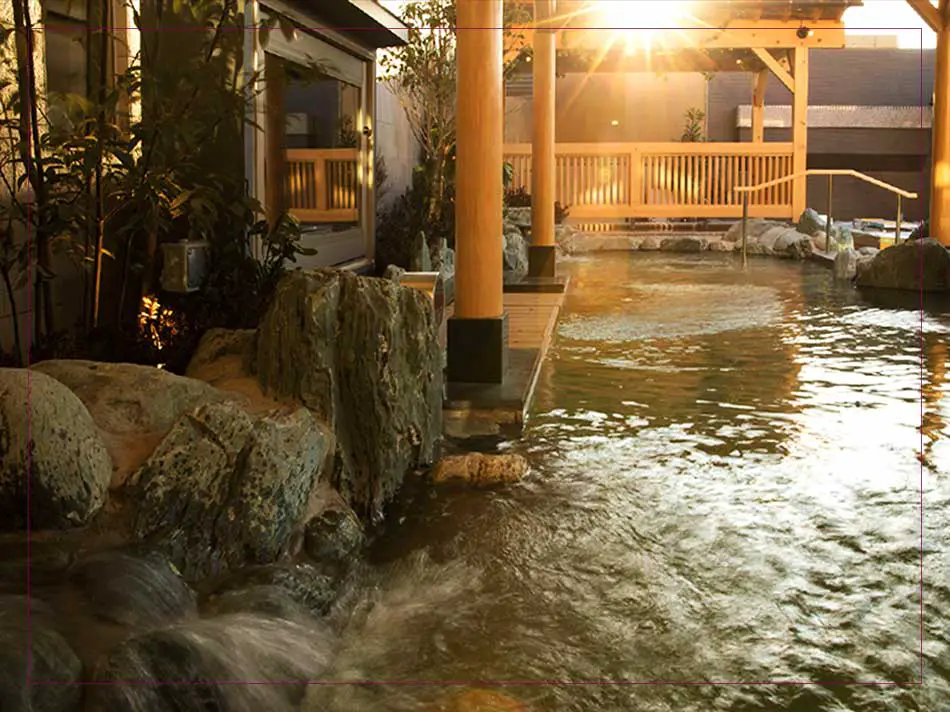
Location: Higashikurume, 1 hour from Ikebukuro & Shinjuku, Tokyo
General Information: Spadium Japon (スパジアム ジャポン) is a spa and wellness center located in the outskirts of Tokyo in Higashikurume. Honestly, I don’t know this area of Tokyo very well and after checking the surroundings I could only find Seibuen Amusement Park, a kid-friendly theme park, and the Tokorozawa Aviation Memorial Park, but both are about 1 hour away from the spa. That is about the same time it takes to Tokyo’s more famous sightseeing districts Ikebukuro, Shinjuku, and Shibuya.
Family Onsen Spa: This modern onsen spa has 3 floors and features 15 kinds of baths including a rotenburo (open-air bath), seasonal aroma baths, a silk bath, and many more. The open-air bath looks like a traditional Japanese onsen but the rest of the bathing facilities feel more like a typical spa. However, the onsen water comes from a real hot spring. According to their webpage, it is a transparent hot spring which is pretty rare in Tokyo. While the bathing facilities are gender-separated you can dine and relax together on the other floors after your bath. Sometimes they also have special kids or baby days.
If you have older kids and/or if you are looking for a more relaxing spa this might be a good alternative. However, two very important things. The spa has 2 electric baths. I know that they are supposed to be good for you but I have never dared to try them and so I don’t know how they are. But I am pretty sure it can be a bit of an unpleasant surprise, especially for children. So watch out for 電気風呂 (Denki Buro) and the “Sixpack Electric Jet Bath”. Also, since this place is popular among locals it can get pretty packed on the weekend.
This is also a tattoo-friendly onsen by the way. As long as you only have one tattoo and it can be covered you are allowed to enter. You have to tell the front and purchase one of their tattoo-cover seals, though.
- Adults & children over the age of 12: ¥850 ($8 or 7€)
- Children ages 7 – 12: ¥350 ($3 or 3€)
- Children ages 3 – 6: ¥100 ($1 or 1€)
- No fee for children under the age of 3
Access: The nearest station is Higashi-Kurume Station on the Seibu-Ikebukuro Line from where you can use the spa’s free shuttle bus (10-minute ride). Unfortunately, the Seibu-Ikebukuro Line is not covered by the Japan Rail Pass. From Ikebukuro, it takes about 45 minutes to get to the spa, from Shinjuku it takes about 1 hour.
Website: www.spajapan.com (Japanese only)
5. Hakone Kowakien Yunessun (2h from Tokyo)
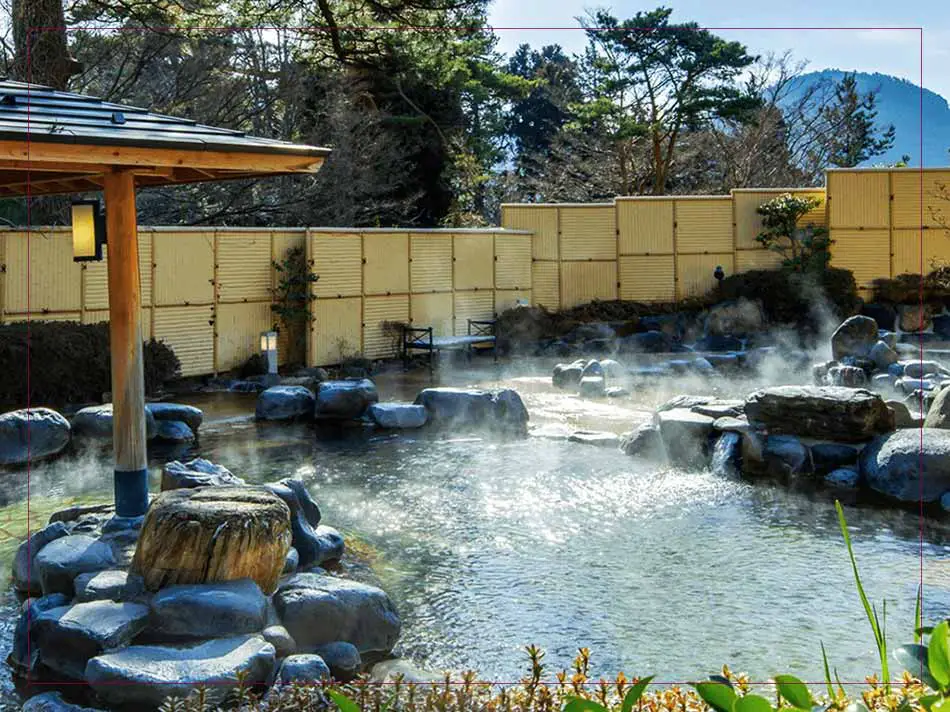
Location: Hakone, about 2 hours from Tokyo, Kanagawa Prefecture
General Information: Hakone Kowakien Yunessun (箱根 小涌園 ユネッサン) is an onsen theme park located in the famous hot spring and nature resort Hakone. It is part of the Fuji-Hakone-Izu National Park and one of the best and most popular day trip from Tokyo. I am going to write a whole article about this amazing hot spring destination, so stay tuned. From Tokyo, you can get to the onsen in about 1.5 hours if you take the Tokaido-Sanyo Shinkansen.
Onsen Theme Park: This onsen theme park consists of 2 areas. Mori no Yu is the name of the beautiful gender-separated onsen facility with open-air baths, a cypress bath, and pot baths. Yunessun, on the other hand, is a unisex swimming pool area with a lot of crazy pools. Outdoors you have water slides, cave baths, and a dragon waterfall. Indoors you have a wine bath, a coffee bath, a green tea bath, a Japanese sake bath, and more. It is not really a traditional onsen, but I am sure that the outdoor area and the crazy indoor baths will be a lot of fun for your children. In the Yunessun area, you are required to wear swimwear.
Private Onsen: From 11:00 – 20:00 o’clock you can rent a private onsen for your family. The costs are ¥3,000 ($28 or 25€) per hour.
- Adults & children over the age of 12: ¥3,500 ($32 or 29€)
- Children ages 7 – 12: ¥1,800 ($17 or 15€)
Access: Take the Shinkansen to Odawara Station, transfer to the Hakone Tozan Line, and get off at Kowakidani Station. From there it takes about 19 minutes to the onsen.
Website: www.yunessun.com
6. Enoshima Island Spa (1.5h from Tokyo)
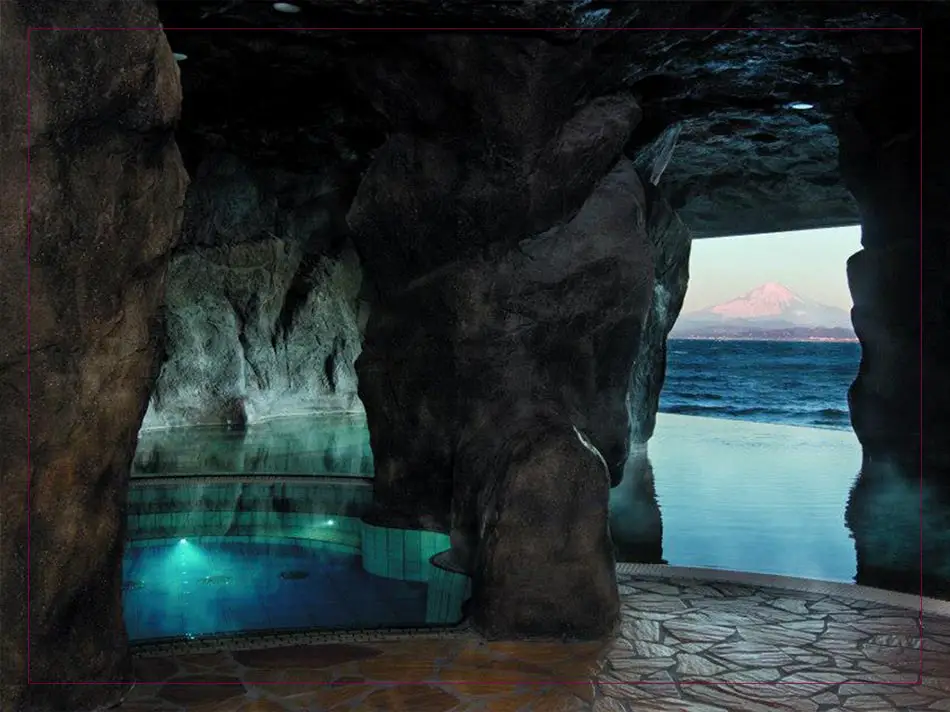
Location: Enoshima, Near Kamakura, 1.5 hours from Tokyo, Kanagawa Prefecture
General Information: Enoshima Island Spa (江の島アイランドスパ) or short EnoSpa is a fun onsen spa located on the same-named island near Kamakura. Enoshima is famous for its beaches and Kamakura is especially famous for its temples and a large Buddha Statue that you can go inside. When you are in Tokyo you should definitely make a day trip to Kamakura.
Family Onsen Spa: EnoSpa is a natural and modern onsen spa that spans over 2 floors. The first floor is a basic gender-separated onsen facility with a few different tubs. The other floor is a unisex swimming pool area where you have to wear swimsuits. Something that is especially cool for children is the cave area with waterfalls. In the evening this also turns into a romantic place for couples where you can enjoy the views of Mt. Fuji. In total the onsen has 10 different indoor and outdoor pools.
Now the bad. On Sunday the onsen spa is closed for children. Also, your children have to be at least 6 years old, otherwise, they are not allowed in.
- Adults & children over the age of 12: ¥3,175 ($29 or 26€)
- Children ages 6 – 12: ¥1,540 ($14 or 12€)
- Only elementary school kids or older are allowed
Access: 12 minutes walk from Katase-Enoshima Station on the Enoshima Line. This line is operated by Odakyu and is not covered by the JR Pass.
Website: www.enoshimaislandspa.com
7. Yusakasou Onsen Ryokan (1.5h from Tokyo)
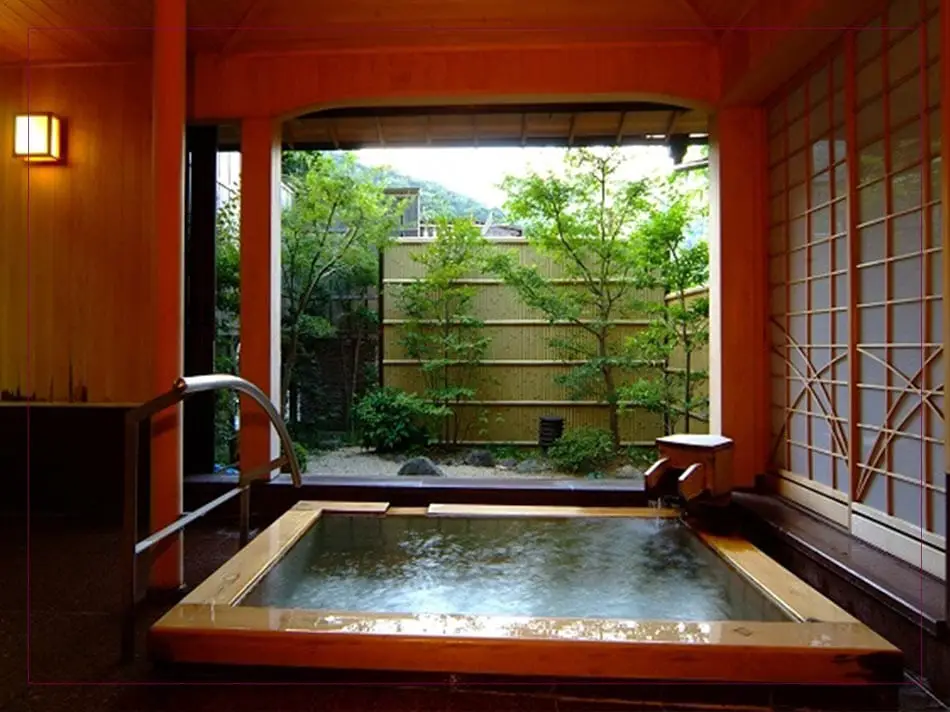
Location: Hakone, 1.5 hours from Tokyo, Kanagawa Prefecture
General Information: Yusakasou (湯さか荘) is an Onsen Ryokan located in Hakone. As I mentioned earlier you can get here from Tokyo in about 1.5 hours if you take the Tokaido-Sanyo Shinkansen.
Baby-Friendly Onsen Ryokan: This onsen ryokan has 4 types of baths: a mixed outdoor bath, an indoor male-only bath, an indoor female-only bath, and a private onsen. Since the outdoor bath is mixed your whole family can bathe together. Women can wear a special bath towel and from 8 – 9 o’clock it is a women-only bath.
They have a plan for day visitors where you can use one of their Japanese-style rooms from 14:30 – 20:00 o’clock. During that time you can soak in the mixed outdoor bath, you can also use the private onsen for 30 minutes for free, and they will serve you a Japanese Kaiseki dinner in your room.
In case you want to stay overnight, they also have a special baby plan. If your child is younger than 2 it can stay for free and your room will be equipped with diapers and a bottle warmer. Since the water for the onsen comes from an alkaline spring it is very gentle on babies’ skin.
Private Onsen: A semi-open-air cypress bath that can be reserved for 30 minutes upon arrival without any additional costs. The private onsen is also equipped with a diaper changing station and soap for babies.
- ¥11,000 ($102 or 91€) for adults and children (12+)
- ¥7,700 ($71 or 65€) for children (7 – 12)
- ¥2,200 ($20 or 18€) for younger children
Access: Take the Shinkansen to Odawara Station, and transfer to the local Hakone Tozan Railway. Get off at Hakone-Yumoto Station from where it is an 18-minute walk to the onsen ryokan. The Shinkansen ride to Odawara is covered by the JR Pass, but not the rest of the trip.
Website: www.yusaka.jp (Japanese only)
8. Hotel Epinard Nasu (2.5h from Tokyo)
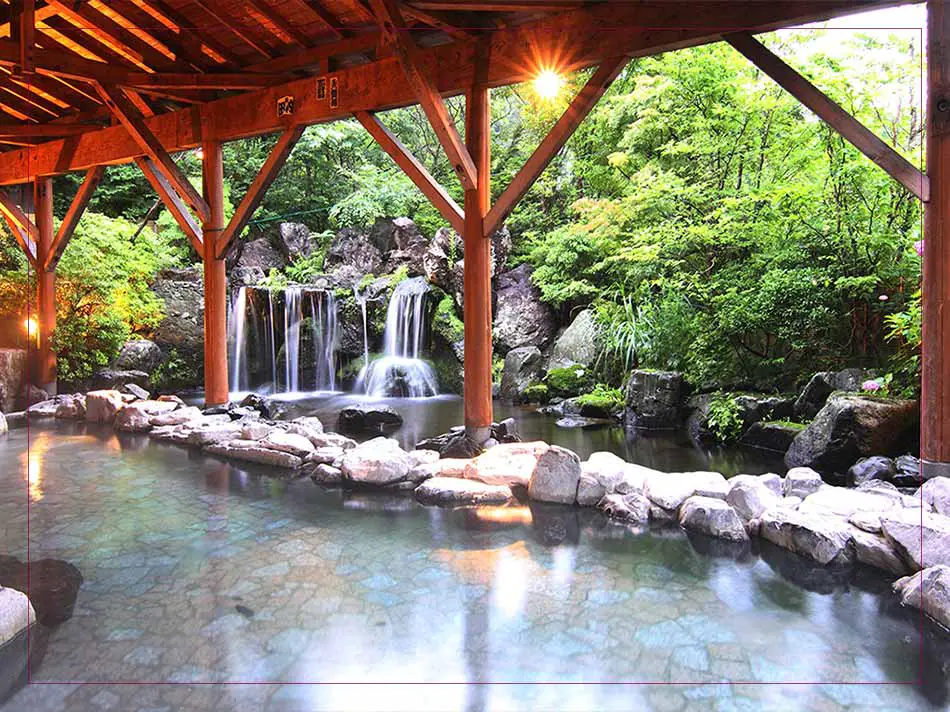
Location: Nasu-Shiobara Onsen, 2.5 hours from Tokyo, Tochigi Prefecture
General Information: Hotel Epinard Nasu (ホテルエピナール那須) is a family-friendly onsen hotel located in Nasu. You can get there in about 2 hours from Tokyo. The hotel is part of Nasu-Shiobara Onsen, a tranquil hot spring resort part of the Nikko National Park and surrounded by nature. It is less than 100 kilometers away from Nikko, another day trip you definitely can’t miss when you are in Tokyo, but by train, it would still take about 2 – 3 hours.
Family Onsen Hotel: The hotel’s bathing facilities consist of an onsen area with a variety of indoor pools and a beautiful open-air bath, as well as a large swimming pool with a kid’s area. The onsen is equipped with baby beds, bathing chairs, and soap for babies. They also have free swim helpers for children. If you are staying overnight you can use the bathing facilities for free, but the hotel also opens its doors to day trippers. As with the other facilities on my list, the onsen is gender-separated, but the pool is unisex, of course. So don’t forget to bring your swimsuit when you go to the pool.
- Adults & children over the age of 12: ¥1,109 ($10 or 10€)
- Children ages 7 – 12: ¥809 ($8 or 7€)
- Children under the age of 7: ¥500 ($5 or 4€)
Access: The nearest JR station is Nasushiobara Station from where it is a 30-minute bus ride and a 20-minute walk to the hotel. They also have a free shuttle bus that only takes 30 minutes from the station, but you need to tell them in advance.
Website: www.epinard.jp (Japanese only)
Bonus: Family-Friendly Onsen Ryokan Near Tokyo
Two other recommendations for family-friendly onsen ryokans I got are Yutaka (ゆたか) in Kusatsu Onsen and Hotel Epinard Nasu (ホテル エピナール 那須) in Nasu Onsen.
Inatori Akao Hotel Kaifuro (赤尾ホテル 海諷廊) is a modern and nice onsen hotel located on the Izu Peninsula in Shizuoka. The peninsula can be reached in about 2 – 3 hours from Tokyo and is famous for its onsen towns Atami, Ito, and Shimoda. Besides a beautiful onsen bath with rotenburo, the hotel also has 6 private hot spring baths. They are equipped with a baby bed and baby chairs and therefore perfect if you are traveling with a young toddler.
Another option I would like to recommend for younger children, not a natural onsen, though, is Hoshino Resort Risonare Yatsugatake (星野リゾート リゾナーレ八ヶ岳). It is about 3 hours away in Yamanashi Prefecture. One of my friends went there with her family (2 children) just a week ago and she loved it because her children had so much fun playing in the water area for kids. She showed me pictures of it and it looks so cool but also really safe.
Know Before You Go to an Onsen With Children
- Babies and toddlers that are still wearing diapers or haven’t been potty trained yet are usually not allowed to enter onsen baths. So, in that case, I would rather suggest you rent a private onsen or stay at an onsen ryokan with a family onsen bath
- Children up until the age of 7 can accompany their parent of the opposite sex
- If your child is older than 12, you usually have to pay the full adult ticket price
- Onsens can be extremely hot and are often way too hot for young children. So warn them before they enter the tub and try to find the ones that have a lower temperature. Also, try to stay away from the tap or the place where the hot spring water flows into the tub
- Don’t forget to tell your children that they can’t wear a swimsuit or swim trunks and that everybody will be in their birthday suit before entering the onsen
- Children with sensitive skin should better take a shower or rinse after the onsen . I explain everything about it in my post about the beauty benefits of onsen for your skin . You will also find more recommended onsen towns that you can visit if you or your children have sensitive skin
Hey. I'm Alex. I've been living in Japan since 2015. Before moving to Tokyo, I traveled through Japan for 7 months to visit all 47 prefectures. Traveling and living in Japan has been so much fun and such an incredible experience that I decided to write about it. Hopefully, my articles help you to get the most out of your trip and to fully enjoy your time in Japan! Feel for free follow me on Twitter and/or Instagram .
Recent Posts
All About Meiji Jingu: What to See & Do, Hours, Fee, Access
Meiji Jingu (明治神宮), also known as Meiji Shrine, is a famous Shinto shrine in Tokyo that is surrounded by a large evergreen sacred forest and known for its beautiful wooden architecture. It is...
How Much is an Onsen in Japan? 15 Examples from 100円 ($1,1€)
Before you are actually planning a trip to a hot spring you might be wondering how much it costs to visit an onsen in Japan. Luckily, there are a lot of awesome but affordable hot springs and...
- Destinations
Takaragawa Onsen: Wonderful Day Trip Onsen from Tokyo
Takaragawa Onsen Osenkaku: Picturesque Onsen Destination from Tokyo!

Japanese hot spring: Onsen(温泉) is one of the most popular tourist attractions in Japan among foreign visitors. There are over 3,000 Onsen spots in the whole country from north to south, and some of them can be easily visited from Tokyo for a day trip. One of the most popular Onsen spots from Tokyo is Takaragawa Onsen Osenkaku which is located in Minakami Onsen area, Gunma Prefecture.
*Please note that this article contains affiliate links.
Takaragawa Onsen Osenkaku (宝川温泉 汪泉閣) is a true Onsen gem located in Minakami Onsen area which is in the deep mountain of northern Gunma Prefecture. It’s one of the best Onsen for a day trip from Tokyo. The easiest way to access there from Tokyo is by JR Joetsu Shinkansen from Tokyo station to Jomokogen Station (approx 1.5 hours), then take a bus towards Minakami Station and change bus towards Takaragawa Onsen Iriguchi. There is free shuttle bus service available to Takaragawa Onsen Osenkaku from Jomokogen Station (at 1pm and 3pm) and Minakami Station (3pm) daily (advanced reservation is required).
Takaragawa Onsen Osenkaku offers the specious open-air outdoor bath, which is one of the largest in Japan. The bath is located along the stream of Tone River surrounded by beautiful rich nature which displays a stunning scenery in each season.

There are 5 kinds of baths at Takaragawa Onsen Osenkaku including 4 outdoor bath (3 for mixed gender, 1 for female only) and 1 indoor bath (male and female separate). At mixed gender bath, visitors are allowed to use provided towels to cover their bodies rather than going completely naked, and this is one of the reasons why Takaragawa Onsen is especially popular among foreign visitors.
Not only that Takaragawa Onsen has a beautiful scenic Onsen bath, but the quality of the hot spring water is also notable and has considerably several great effects to body and health such as Neuralgia, Muscle Pain, Arthritis, Coldness, and more.
Besides Onsen bath, Takaragawa Onsen Osenkaku is a traditional Japanese hotel (Ryokan) that offers cozy and elegant guest rooms with authentic Japanese cuisine. The rate starts around 15,000 yen per person per night. The onsen bath is available for daily use, but if you have time, it’s ideal to stay over and indulge yourself with this gorgeous Onsen retreat. Onsen bath is available for 24 hours for overnight guests.
<< Book Takaragawa Onsen Osenkaku with the best rate NOW!! >>
If you wish to have the most amazing Onsen experience in Japan, Takaragawa Onsen is one of the best places in Japan, moreover you can access there from Tokyo even for a day trip!
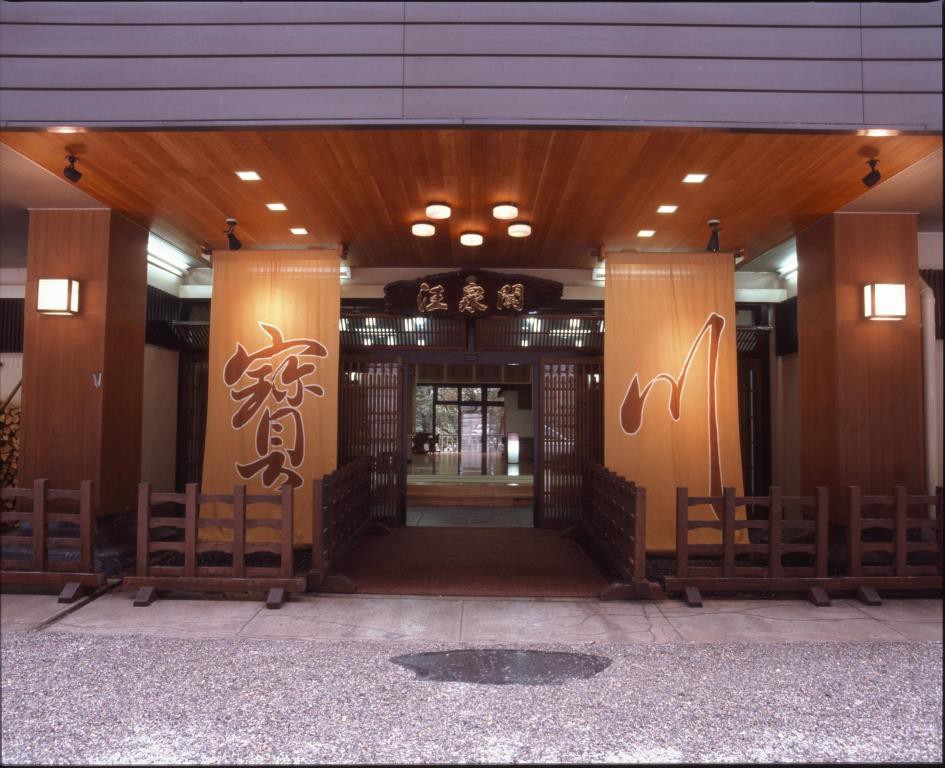
-Takaragawa Onsen Osenkaku (宝川温泉汪泉閣)
Map: http://bit.ly/2Qc6L01
Address : 1899 Fujiwara, Minakami Town, Tone-gun, Gunma Prefecture
Access: free shuttle bus service available to Takaragawa Onsen Osenkaku from Jomokogen Station (at 1pm and 3pm) and Minakami Station (3pm) daily (advanced reservation is required)
Or take a regular bus available from Minakami Station which leaves twice daily at 10:45 and 13:35 (30 mins, 1,150 yen)
Rates: Daily use 1,500 yen /Stay 15,000 yen ~
Hours: 9:00~17:00 (for daily users)
Official Website: https://www.takaragawa.com/english.html
For more information about amazing Onsen spots in Japan, you may wanna check out these articles, too!
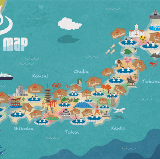
▽Related Articles ▽
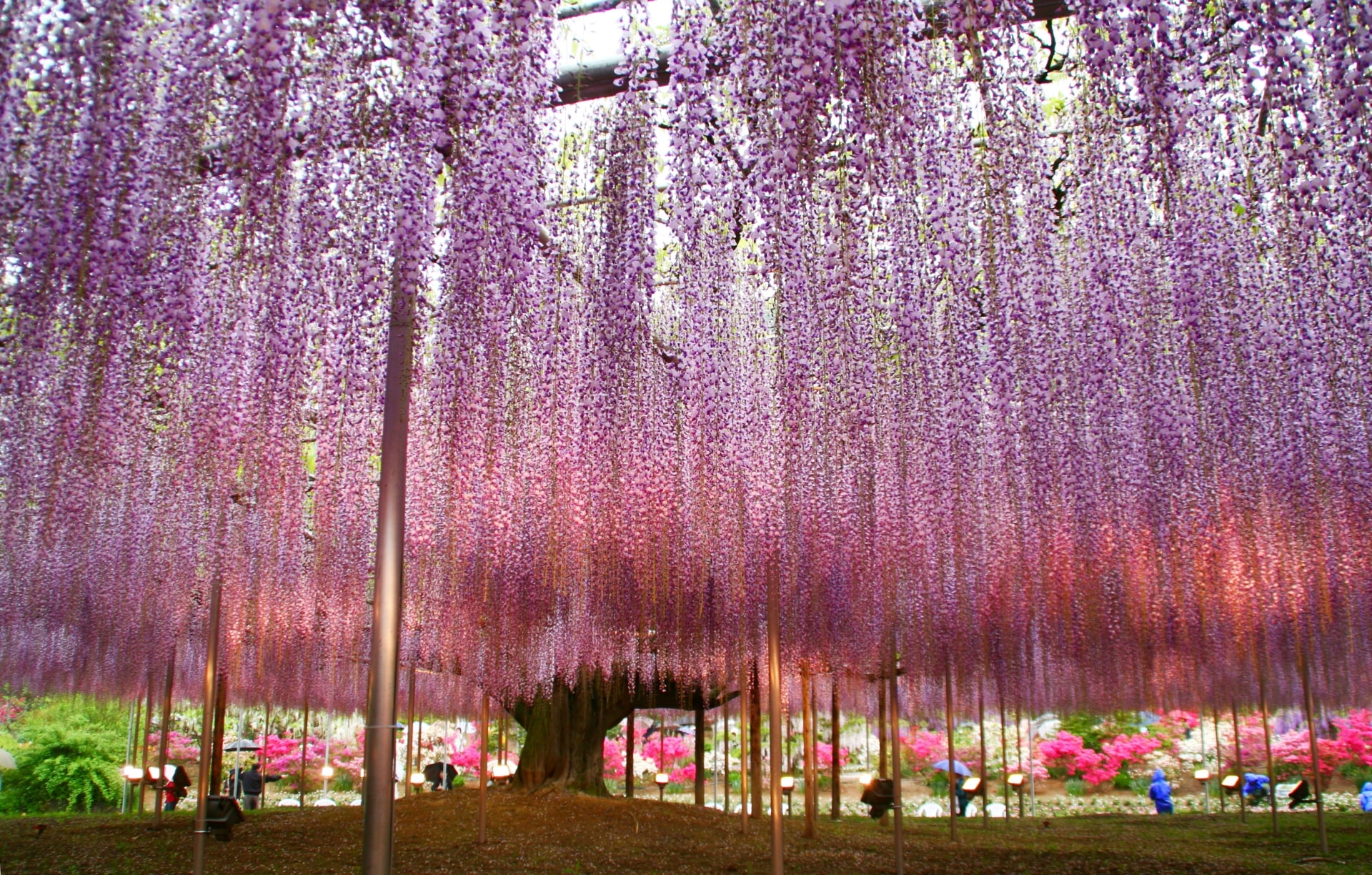
▼Editor’s Picks▼

"The world is my oyster" A globetrotter 🌎 and hammock lover 🌞 who loves taking adventures to fuel wanderlust. Born and raised in Japan, I have lived and explored countries around the world. As a resident of Japan and based on my travel experience, I'd love to share my knowledge and tips for travelling Japan with my readers. I hope my story will help you plan your trip and have a great time in Japan 🌈
- Things to Do
12 Best Natural Onsen in Tokyo | Spend a Day at a Super Sento
Published on 2022-06-13 by Sakura Mobile

Photo courtesy of Spa LaQua
Are you looking to visit an onsen in Tokyo?
In this article, we will be introducing to you 12 of the best natural onsen (hot springs) in Tokyo.
Even though Tokyo has the image of being a big and bustling city, there are actually many places where you can enjoy a natural hot spring. Most of the establishments included in this article are open to those who are just going on day trips, making it easy to stop by without having to commit to spending the night anywhere.
Have you booked your SIM card or pocket WiFi for your trip to Japan yet?
In Japan, you’ll want to be connected without missing out on high speed data and internet!
By reserving online before departing, you can
- Lower your rental fees
- Avoid stock shortages at the airport
To learn more about data and WiFi options for your trip, check out our products below.
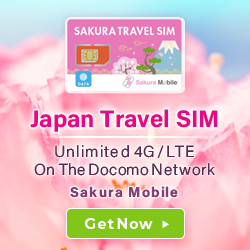
Hello readers! Sakura Mobile is a SIM & WiFi service provider for international residents and tourists in Japan.
Our global editorial team living in Japan will introduce the charms of the country based on what we have actually experienced and felt.
Table of contents
Are there onsen in tokyo, are tattoos allowed in onsen.
- Toshimaen Niwa-No-Yu in Nerima
- Musashi-Koyama Onsen Shimizu-yu
- Tokyo Somei Onsen Sakura
- Times SPA RESTA
- Maenohara Onsen Saya-No-Yudokoro
- Oyata Onsen Myojin Hot Spring
- THE SPA Seijo
- Onsen Yumorinosato
- Akigawa Keikoku Seoto-no-Yu Spa
- Oedo-Onsen Monogatari Urayasu Mangekyo
Skyscrapers, neon lights, and heavily populated city streets are probably what come to mind when you imagine Tokyo. So you might be thinking, “Wait, Tokyo has hot springs…?”
The image of a tranquil, traditional hot spring does not necessarily fit with the modern image of the metropolitan hub of Japan.
Although it may be tough to find a traditional ryokan (an old-fashioned Japanese inn) in the city, you might be surprised to find that there are more places to experience an onsen than you would have originally thought.
These establishments are usually called “super sento,” and they include many different types of public baths. Visiting one will usually cost you between 2,000 and 3,000 JPY. Depending on the super sento, they may also have resting areas and restaurants, so you can spend lots of time enjoying everything that it has to offer.
Some super sento will have everything from stone baths to wooden baths, baths that are outdoors, and even private baths that you can rent.
In Tokyo, most super sento also take water that flows a couple thousand meters underground or pull it from nearby onsen towns such as Hakone.
The water is all-natural and filled with minerals, so it is said to be very good for your health to soak in an onsen.
Related article
If you are looking for a ryokan in Tokyo, refer to the article below.
- The 11 Best Ryokans in Tokyo | All Different Types
↑ Go back to the table of contents
Unfortunately, many super sento in Tokyo do not allow individuals with tattoos to enter the baths.
Out of the super sento that we will introduce in this article, Thermae Yu and Musashi Koyama Onsen Shimizuyu are the only two that allow tattoos.
If you want to visit somewhere different, you should look for an establishment that offers a private onsen.
Although you are going to need to spend the night (some private onsen are attached to guest suites in ryokan and hotels), individuals with tattoos can use the bath without having to worry.
If private onsen interest you, we suggest you check out the article below.
- 15 Best Ryokan with Private Onsen in and Around Tokyo
12 best natural onsen in Tokyo
1. Thermae Yu (テルマー湯)

A 10-minute walk from Shinjuku Station and a 2-minute walk from Shinjuku-sanchome Station, Thermae Yu is an onsen establishment that sits right in the middle of the inner city. Fitting for a city that never sleeps such as Tokyo, it is open 24 hours so you can visit even in the dead of night or in the early morning.
Its convenient location makes it popular not only among locals but also tourists. Aside from its accessibility, however, Thermae Yu is also well-known for having many different types of baths.

The baths at Thermae Yu take hot spring water from a place called Nakaizu in the southern part of Kanagawa Prefecture which neighbors Tokyo. While already having a ton of health benefits for people who bathe in it, Thermae Yu goes an extra step and prepares a “toner bath,” which has the effect a moisturizer would have on your skin.
Additionally, there are a total of four saunas, two for men and two for women to use, and electric baths which have a low-frequency electric current running through the water.

After your bath, there is a lounge where you can spend time relaxing. You can feel free to make use of the massage chairs or simply lay down because many people will likely be doing the same. With restaurants on the premises as well, we think that you could very likely spend a whole day relaxing at Thermae Yu.
Information
- Price : Starting from 2,405 JPY
- Address : 1-1-2 Kabukicho, Shinjuku City, Tokyo 160-0021 ( Google MAP )
- Hours of Operation : Open 24 hours
- Tattoo Friendly : Tattoo cover-ups provided (1 for 300 JPY)
- Visit Official Site
2. Spa LaQua (スパラクーア)

Spa LaQua is located inside Tokyo Dome, which is also a multipurpose stadium. Depending on the time of the year, you can expect to see baseball games or concerts taking place here. However, there are many other things to do at Tokyo Dome, including restaurants, shops, and even an amusement park.
With an easy-to-access location, Spa LaQua is a very well-known and popular location among locals. This can make it crowded on certain days of the week, so we recommend going on a weekday afternoon to avoid crowds; this way, you can get the most relaxing experience possible.
Because Spa LaQue sits among other busy city-like attractions, you can imagine it will feel very artificial. However, the interior has more green than you might expect, and you can rest assured that it uses natural hot spring water.

Spa LaQua uses hot spring water that flows 1,700 meters underground and uses it to fill its bathtubs both indoors and outdoors. While exploring the public bath area you may be surprised to find that some of the water even looks murky, but this is because of the different types of chemicals included. These are said to help moisturize and keep your skin healthy and soft.

There are three women-only saunas and four men-only saunas. An interesting point is that they are all kept at different temperatures, so even those sensitive to the heat (or those that feel like some saunas aren’t hot enough) can enjoy the sauna. There is even a cool sauna where you can cool down which is said to be good for your blood flow.
- Price : Adult – 2,900 JPY, 6 – 17 Year-olds – 2,090 JPY
- Address : LaQua Building 1-1-1 Kasuga, Bunkyo City, Tokyo 112-0003 ( Google MAP )
- Hours of Operation : 11:00 am – 9:00 am
- Tattoo Friendly : No
3. Toshimaen Niwa-No-Yu in Nerima (豊島園 庭の湯)

Toshimaen Niwa-No-Yu was designed by a famous Japanese landscape gardener, Kenzo Ogata. Especially in the city where it is hard to find many trees or expansive areas of green, Toshimaen Niwa-No-Yu will give you the nature getaway that you need if you’ve been stuck in the city for a little too long. There are three zones, two of which are separated by gender. These two each have a bathing area, a sauna area, and a beauty area.
The third zone is an area where both men and women can enter the bath together. You will need to wear a swimsuit, making it feel more like a water park. This area includes larger pools and jacuzzis.

The hot spring water at Toshimaen Niwa-No-Yu is drawn from a spring located 1,445 meters underground. Like any natural onsen, the water will have a good effect on your skin and will rejuvenate your body. In the all-gender area, this water is even used in the outdoor jacuzzi. Additionally, outdoors you can find small outdoor baths meant for one person surrounded by artfully placed plants and flowers.

As you might expect coming from a Japanese landscape artist, there is an area specially dedicated to a Japanese garden. Different flowers bloom depending on the month of the year, so you can always expect to discover something new. You can also find a koi pond, waterfalls, and of course lots of green. It would make a very relaxing day to have fun trying out all the different baths and then take a stroll through the Japanese garden before heading home.
- Address : 3-25-1 Koyama, Nerima City, Tokyo 176-8531 ( Google MAP )
- Hours of Operation : 10:00 am – 11:00 pm
4. Musashi-Koyama Onsen Shimizu-yu (武蔵小山温泉 清水湯)

Starting as far back as 1924, Musashi-Koyama Onsen Shimizu-yu has a rich history and feel of a traditional Japanese public bath. However, it has gone through many renovations, so you will see that it is more modern-looking and cleaner than you might expect.
Aside from the normal stone baths that you would find at other onsen, Musashi-Koyama Onsen Shimizu-yu’s indoor baths include a jet bath, an electric bath, and a jacuzzi. Outdoors, you can find an open-air bath as well.

Musashi-Koyama Onsen Shimizu-yu prides itself in the different types of hot spring water used in its baths. One is called “black water” and the other “golden water.” As the names suggest, black water is a deep black color due to the various minerals inside. Similarly, the golden water is a murky golden color and flows even deeper in the ground than the black water. They both have positive effects on your health such as taking away muscle, nerve, and joint pains.
These unique types of water are difficult to find elsewhere in Tokyo, so we suggest that you take advantage of Musashi-Koyama Onsen Shimizu-yu if you are interested in the health benefits that onsen have to offer.

We recommend Musashi-Koyama Onsen Shimizu-yu for its cost-effectiveness. For only 480 JPY (and even less for younger visitors), you can enjoy the natural onsen through the multiple baths. Because Musashi Koyama Station is located just a quick train ride from the center of Tokyo, it will be very easy to visit during the day and return to your hotel by the evening.
- Price : Adult – 480 JPY, Stone Spa – 1,400 JPY, Sauna – 400 JPY
- Address : 3-9-1 Koyama, Shinagawa City, Tokyo 142-0062 ( Google MAP )
- Hours of Operation : 12:00 pm – 12:00 am
- Tattoo Friendly : ?
5. Tokyo Somei Onsen Sakura (東京染井温泉 SAKURA)

Tokyo Somei Onsen Sakura is located less than a 10-minute walk from both Sugamo and Komagome Station, both of which are on the most well-used train line of Tokyo, the Yamanote Line. Note that upon entering, you will need to register as a member.
After registering, you will receive a wristband that you must keep on your person during your stay. Everything that you buy from drinks from the vending machine to food at the restaurant will be charged to your wristband; you then pay for everything at the end when you leave the establishment.

There are a total of three outdoor baths (one in the men’s area and two in the women’s area) and two large indoor baths, one for each area. Tokyo Somei Onsen Sakura pulls natural hot spring water from 1,800 meters underground. You will find that although filled with beneficial minerals, the water has no color and is very clear which is said to be unusual when it comes to onsen in Tokyo.

Although Tokyo Somei Onsen Sakura is not a lodge where you can spend the night, you can enjoy food similar to that of a ryokan. There is an option to reserve a traditional Japanese course-style meal called “kaiseki” with your visit, which will cost you around 3,500 JPY without add-ons.
Kaiseki includes dishes that use fresh ingredients to match the seasons. If you are not keen on eating traditional Japanese food, the restaurant at Tokyo Somei Onsen Sakura has all sorts of other options such as steak or pasta.
- Price : Adult – 1,320 JPY, Children – 770 JPY
- Address : 5-4-24 Komagome, Toshima City, Tokyo 170-0003 ( Google MAP )
6. Times SPA RESTA

Just a 6-minute walk from the east exit of Ikebukuro Station, Times SPA RESTA has one of the most convenient locations on our list if you are staying in the city. It does not give off the traditional Japanese public bathhouse atmosphere but instead feels like a modern spa with aspects of a super sento.
Aside from the bathing areas, there are a great number of relaxation opportunities available including saunas, five different types of massage parlors, four lounges, and even a sun tanning machine.

There are a total of 6 baths in the men’s area and 5 in the women’s area, making this one of the larger establishments that we are recommending. Like most other onsen, there are separate areas for men and women, both with many types of baths including massage baths, outdoor baths, and baths where you can lie down, called “neyu” in Japanese. On the women’s side, Times SPA RESTA has the option to even watch movies while entering the outdoor bath.

A unique point of Times SPA RESTA is that there are different events and packages available depending on the season. Packages include massages, and there are events that happen on specific days of the week or on a few days over the span of a few months. Because of the sheer amount of things that you can do at this facility, we believe that this may be one of the prime places to go if you are in search of a spa day in Tokyo.
- Price : Starting from 2,100 JPY
- Address : Times Station Ikebukuro 4-25-9 Higashiikebukuro, Toshima City, Tokyo 170-0013 ( Google MAP )
- Hours of Operation : 11:30 am – 9:00 am
7. Maenohara Onsen Saya-No-Yudokoro (前野原温泉 さやの湯処)

Maenohara Onsen Saya-No-Yudokoro was originally home to a businessman who lived during post-war Japan. He designed the large Japanese garden that surrounds the building, giving it a very traditional feel. The garden will look completely different depending on the season during which you visit.
We recommend Maenohara Onsen Saya-No-Yudokoro if you are interested in experiencing Japan through the atmosphere of an onsen. Depending on the day, you can also get special discounts or experience a different kind of medicinal herb in the steam sauna.

The bathing area of Maenohara Onsen Saya-No-Yudokoro consists of one outdoor all-natural hot spring bath, four outdoor baths, and three indoor baths. With a large number of outdoor baths, you can expect to have a relaxing time bathing while looking out at the surrounding nature.
Unlike some of the others on our list, Maenohara Onsen Saya-No-Yudokoro offers a private half-outdoor bath available for rent for 2,100 JPY. According to the laws, however, even families are not allowed to partake in mixed-gender bathing if the parties involved are over 7 years of age. We recommend this bath for those who are not as accustomed to Japanese public bathing customs and would like to keep their bathtime private.

After you finish bathing, you can enjoy a meal (we recommend the traditional soba in particular) at the restaurant that looks out to the Japanese garden or rent a private room to lounge around with your friends and/or family. These rooms can range anywhere from 2,100 JPY to 5,100 JPY depending on which one you choose. For those who want to know the specific prices of each room, please check the website.
- Price : Starting at 890 JPY, Children – Starting at 550 JPY
- Address : 3-41-1 Maenocho, Itabashi City, Tokyo 174-0063 ( Google MAP )
- Hours of Operation : 9:00 am – 12:00 am
8. Oyata Onsen Myojin Hot Spring (大谷田温泉 明神の湯)

Located close to Kita-Ayase Station (which is a bit further out from the main parts of the city), Oyata Onsen Myojin Hot Spring is known for the high sodium and iron concentration onsen water that you can actually feel while soaking in the bath. It has a reputation for being some of the most effective hot spring water in the city, helping with ailments such as bad blood circulation and skin wounds.

A bath made of all-natural Japanese cypress is well-known at this onsen. Located outside and tucked further away than the other outdoor baths, it is definitely a selling point of Oyata Onsen Myojin Hot Spring because of the nature-filled surroundings and quiet atmosphere.
Additionally, there is both a bath filled with water hotter than usual and one that is on the cooler side; switching between these and the ice water bath as well is said to be good for your blood circulation. If you are not used to extremely hot bath water, it is also good to have more lukewarm options.

After soaking in all the different baths, we recommend visiting Oyata Onsen Myojin Hot Spring’s restaurant. With a large menu that includes noodles, Japanese curry, seafood, desserts, and much much more, you are sure to find something that you enjoy. There is also a large selection of drinks both alcoholic and non-alcoholic. The lemon sour, in particular, is packed with real lemons, a sight you might not see anywhere else. We recommend giving it a try if you are of legal age.
- Price : 1,100 to 1,300 JPY, Children (3 to 12 years) – 600 JPY, Infants (0 to 2 years) – 400 JPY
- Address : 1-18-1 Oyata, Adachi City, Tokyo 120-0001 ( Google MAP )
- Hours of Operation : 10:00 am – 11:00 pm (closed on the third Tuesday of every month)
9. Nagomiyu (武蔵野温泉 なごみの湯)

Nagomiyu is a spa facility that is only a one-minute walk from Ogikubo Station on the west side of Tokyo. It is a bit out of the way of the inner city but its proximity to the station makes it a very good choice for those who are prioritizing location convenience. There are five floors that include not just onsen but spas and other types of spa treatments.

The women’s bath is on the second floor and the men’s bath is on the fourth. Both floors also have very spacious saunas. The natural hot springs are located outside, in two spacious baths made of stone. Although not a 100% natural hot spring, the carbonated bath indoors is said to be especially effective for soft and youthful skin; it is recommended that you should spend a long time in the water to get the maximum effect.

On the other floors of Nagominoyu, you can find a multitude of spa treatments. Although things like facials and hot stone massages are common, Nagominoyu also has many treatments that you might not have heard of before.
A relaxation room called the “scarlet womb,” (pictured above) might make you wary at first, it is known to be a place that relaxes all your senses and can be treated much like a meditation room. Other treatments include color therapy and a traditional Japanese “bedrock bath” where you lay down on warm stones and relax.
- Price : 1,300 to 1,980 JPY, Children (4 to 6 years) – Starting at 1,070 JPY, Infants (0 to 3 years) – 540 JPY
- Address : 1-10-10 Kamiogi, Suginami City, Tokyo 167-0043 ( Google MAP )
- Hours of Operation : 10:30 am – 9:30 am
10. THE SPA Seijo (THE SPA 成城)

THE SPA Seijo is a spacious establishment in the western, more suburban part of the city. Every day of the week offers different discounts for different customers; for example, if you visit THE SPA Seijo on Saturday or Sunday, you can get a family discount. A restaurant also serves more ordinary foods in a cafeteria-like space so you can get the typical Japanese super sento experience.

The baths at THE SPA Seijo have rejuvenating effects on the skin. The indoor bath is the most spacious, but there are also some small single-person outdoor baths to use as well. Compared to other onsen, however, there are fewer types of baths and onsen which makes THE SPA Seijo perfect for a short day trip.
Many patrons enjoy the spa along with the bathing area because of the various saunas. All are set at a variety of temperatures, making it possible for those of all heat tolerances to enjoy them.

Unlike some of the other onsen on our list, this one may be out of the way for some. If you are thinking of visiting, we suggest that you use it as an opportunity to explore the more residential areas of Tokyo. You may be able to find some hole-in-the-wall places to eat or shop.
Because THE SPA Seijo is located a ways away from the station, we recommend that you use the free bus that runs from Chitose-Funabashi Station. In the same building on the first floor, you can find a Uniqlo so you can go clothes shopping on your way home.
- Price : Starting at 880 JPY, Children – Starting at 660 JPY
- Address : Central Wellness Town 3-20-2 Chitosedai, Setagaya City, Tokyo 157-0071 ( Google MAP )
- Hours of Operation : 10:00 am – 10:30 pm
11. Onsen Yumorinosato (深大寺天然温泉 湯守の里)

Because the more populated areas of Tokyo are crowded with buildings, trees and patches of green are few and far between. Onsen Yumorinosato, located in a quieter part of Tokyo, attempts to bring nature and people together. We recommend this onsen to those who are looking to escape from the bustling city.

One of the most attractive points of Onsen Yumorinosato is the baths that are made of all-natural materials. Wood, bamboo, and boulders are all used in the construction of the different baths, giving the area a very traditional feel. You will find that it is very easy to relax in the hot spring water pulled from 1,500 meters underground when the baths feel blended into the surrounding trees and rocks.
Additionally, you can buy hot spring water for 2,800 JPY per 20 liters. If you buy the water and bring it back home to use in your own bathtub, you can enjoy all the benefits of an onsen from the comfort of your own home.

Onsen Yumorinosato is further away from the center of Tokyo, so we recommend visiting some of the sightseeing spots that you can only experience in this area. Close by to Onsen Yumorinosato is a temple called Jindaiji that has one of the biggest statues of a Japanese monk. If you are interested in these more traditional parts of Japan, we recommend that you talk a walk around and perhaps purchase some souvenirs.
- Price : Adult – 1,000 to 1,100 JPY, Children – 600 to 650 JPY
- Address : 2-12-2 Jindaiji Motomachi, Chofu, Tokyo 182-0017 ( Google MAP )
- Hours of Operation : 10:00 am – 9:00 pm
12. Akigawa Keikoku Seoto-no-Yu Spa (秋川渓谷 瀬音の湯)

Akigawa Keikoku Seoto-no-Yu Spa is located in Akiruno City, somewhere you might not have ever heard of even if you are a Tokyo native because it is so far out into the rural area of the prefecture. This onsen embraces the surrounding nature; the restaurant on the premises is made out of glass giving you a great view of the outside, and at night, you can gaze upon a starry sky, which is very rare to see in the inner parts of Tokyo.
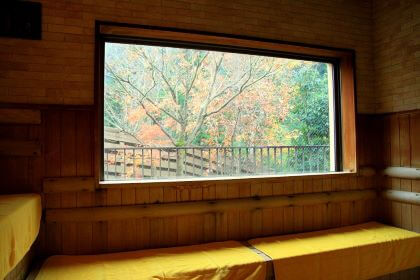
Akigawa Keikoku Seoto-no-Yu Spa has an indoor and an outdoor area, both with baths filled with natural hot spring water flowing 1,500 meters underground. Additionally, you can rent a private onsen for 1,000 JPY per hour.
Like other spa facilities, you can find a sauna (pictured above) at Akigawa Keikoku Seoto-no-Yu Spa. Although it is comparatively smaller than others on our list, there is a large window that looks outside, which makes up for the size by giving you a relaxing experience.

Whereas the majority of the onsen on our list do not allow visitors to stay the night, Akigawa Keikoku Seoto-no-Yu Spa has a cottage about 50 meters away from the onsen area. Because Akigawa Keikoku Seoto-no-Yu Spa is further away from the center of the city, we recommend staying the night if your lodge is quite far away. This way, you can take your time enjoying the onsen.
- Price : Adult – 900 JPY, Children – 450 JPY
- Address : 565 Otsu, Akiruno, Tokyo 190-0174 ( Google MAP )
- Hours of Operation : 10:00 am – 9:00 pm (closed on the 2nd Wednesday of March, June, September, and December)
Notice of the closure of Odaiba Oedo-Onsen Monogatari
Odaiba Oedo-Onsen Monogatari was an onsen facility that included not only an onsen but also had a food court, different types of pools, other amusement park-like attractions, and lodging for guests to stay the night. Although it was a very popular establishment among tourists, it unfortunately closed down in September 2021.
It is a bit of a way from Odaiba, but the same Oedo-Onsen Monogatari Group has a similar theme park in Chiba Prefecture (neighboring Tokyo to the east).
Below are the details.
Oedo-Onsen Monogatari Urayasu Mangekyo (大江戸温泉物語 浦安万華鏡)

Oedo-Onsen Monogatari Urayasu Mangekyo is located in Chiba Prefecture, which neighbors Tokyo to the east. The premises is very large, and it includes four outdoor baths, seven indoor baths, and two saunas. Depending on the season there are different events such as light shows for Christmas or snack hand-outs for Valentine’s Day. This makes Oedo-Onsen Monogatari Urayasu Mangekyo perfect for families with young children.

It is not natural hot spring water, but the bath pictured above is the most popular among visitors. It is called the “collagen spring” and has the color and scent of wine. Those who have entered it praise the effects on their skin. Even if you are not as concerned about the health benefits of the various baths at the onsen, it will be a fun experience just to enter a bath as unique as this one.

We have introduced many onsen where you can get spa treatments, but Oedo-Onsen Monogatari Urayasu Mangekyo’s most exciting part is the theme park aspect. The biggest bath is located outdoors and has tunnels and caves, making it a fun adventure for families, couples, and groups of friends. The bath requires you to wear a swimsuit because it is an all-gender bath, so even those who are not used to onsen customs can enter without having to worry about anything.
- Price : Adult – 1,888 JPY, Children – 858 JPY
- Address : 7-3-12 Hinode, Urayasu, Chiba 279-0013 ( Google MAP )
- Hours of Operation : 11:00 am – 12:00 am
What did you think?
Today we introduced many different onsen that you can visit without having to go very far out of Tokyo, some even with theme park elements.
At many of the onsen that we introduced today, it might be hard to communicate with staff or understand the Japanese public bathing customs if you are not familiar with the language. If you are thinking of going, it might be wise to find a friend who is used to the culture or can speak Japanese well.
Even though I have a grasp of the language, I found it difficult when visiting, but having someone there to teach me about the ins and outs of onsen allowed me to have a more enjoyable and relaxing time.
Although there are many rules surrounding public bathing in Japan, taking the time to get used to and understand them can make for a very rewarding experience.
CUSTOMER’S VOICE
- 15 Best Onsen near Tokyo | Great View and Traditional Experience
Share this:
- Share on Tumblr

- Tokyo Cheapo (繁體中文)
In Search of Snow Monkeys: Getting to Jigokudani Monkey Park from Tokyo
Planning to visit the snow monkeys from Tokyo? It’s definitely a bucket-list item. Japanese macaques have been patronizing the hot-spring baths at Jigokudani Snow Monkey Park for decades (since 1964, officially), and they have become one of Japan’s most iconic sights.
Even in the era of “overtourism”, a visit to the Japanese snow monkey park — tucked away high in the mountains of Nagano Prefecture — is a worthy, relatively uncrowded endeavor.
It’s possible to see the snow monkeys as a day trip from Tokyo, but it’s more fun as part of a longer itinerary. Here’s an overview of how to make your way from Tokyo to the snow monkey park, and what to expect when you get there.
Pro tip: Jigokudani Monkey Park is a great addition to the itinerary if you have a Hokuriku Arch Pass or a JR East Nagano and Niigata Area Pass . These regional rail passes are an economical way to travel around on the Shinkansen.
What is the Jigokudani Monkey Park?

Jigokudani Monkey Park is a remote park in Nagano, where you can see the famous Japanese snow monkeys having a bath. The park is home to a whole troupe of wild Japanese Macaques. There are no cages, and the park does not have a perimeter fence to keep the monkeys inside.
The park does feed the monkeys, so they have a reason to pop round for a visit. The monkeys are not trained, though, and they choose whether to visit the park and whether to take a dip in the hot spring (onsen). That’s part of the beauty of the place, and something that sets it apart from many of Japan’s other animal experiences .
The iconic scenes with monkeys in the onsen surrounded by snow can be seen from roughly late December until early April. There’s little to no snow for the rest of the year, but even then, it’s still a great opportunity to get up close and personal with some unique Japanese fauna.
Pro tip: Take a look at the live snow monkey camera to get an idea of the vibe.
Where is Jigokudani Snow Monkey Park?
Jigokudani Snow Monkey Park is in Yamanouchi in the Shimotakai district of Nagano. It’s within the vast Shiga Kōgen National Park, a prime place for hiking, as well as skiing and snowboarding .
The word “Jigokudani” means “Hell Valley” — and is a name given to this, and several other volcanic areas of Japan, because of the steam and boiling water that escapes from the harsh terrain.
How far away is it? It takes a minimum of 4 hours to get to the Jigokudani Snow Monkey Park from Tokyo, depending on your mode of transport and traffic/weather conditions.
When should I visit the snow monkeys?
January and February are prime “snow monkey” spotting months.
The Yamanouchi region receives heavy snowfall in winter, and it’s generally white from December through March. However, January and February are said to be the best time of year to visit the monkey park. It’s definitely the most scenic, with snow-capped trees backgrounding groups of bathing Japanese macaques.
You can actually visit in any month, though — park employees feed the monkeys year round. Because of that, they can be found near the man-made rock bath (the center of attention) fairly reliably, even in summer.

Snow monkey park: Opening times and entrance fees
¥ 800 for adults 9 a.m. to 4 p.m. (Nov. to March)
The monkey park is open daily from 8:30 a.m. to 5 p.m. in the warmer months, and 9 a.m. to 4 p.m. between November and March.
The park entrance fee is ¥ 800 for adults, and half that for kids.
Getting to the snow monkey park from Tokyo
It is possible to make a day trip to see the snow monkeys from Tokyo. But you’ll need to leave bright and early, and be prepared for a long day. If possible, we recommend extending your trip and spending at least one night in the area.
There are three main ways to get to Jigokudani Monkey Park from Tokyo, so let’s break them down.
Pro tip: If you’re committed to making a snow monkey day trip from Tokyo, we recommend this bus tour . It includes a round-trip coach from Shinjuku, and entry to the monkey park. Plus, you also get an all-you-can-eat buffet lunch. It costs ¥ 16,000 , which is less than the approximately ¥ 20,000 you’d otherwise spend on transport alone.
Shinkansen and bus: The best route
¥ 10,140 one way 2 hours and 15 minutes, plus transfer time Only one transfer, and partly covered by regional rail passes
This route is by far the easiest and most convenient way to get from Tokyo to the snow monkey park. You’ll take the Hokuriku Shinkansen from Tokyo Station to Nagano Station.
Then, from the East Exit of Nagano Station, there are well sign-posted buses, run by Nagano Electric Railway, leaving for the snow monkey park about once an hour. They cost ¥ 1,800 each way, and the journey to the Snow Monkey Park Bus Stop (next to the Shigakōgen Roman Museum) takes about 45 minutes.
Using a JR Pass or a regional rail pass to get to Jigokudani Snow Monkey Park
The Hokuriku Shinkansen part of the journey is covered by regional rail passes, so it makes sense to use one if the snow monkey expedition is part of a longer itinerary.
Our top picks for rail passes to use for this trip are the Hokuriku Arch Pass and the JR East Nagano and Niigata Area Pass .
The Hokuriku Arch Pass is great value if you’re planning a round trip between Tokyo and Osaka or Kyoto, and want to take a more scenic route. Along the way, you can stop at Jigokudani Monkey Park, as well as other destinations like Karuizawa and Kanazawa .
Meanwhile, the Nagano and Niigata Area Pass is great for exploring the region in-depth — for example, you can hit up ski slopes at Gala Yuzawa , and the hot springs at Kusatsu Onsen .
Shinkansen, train, and bus: For train fans
¥ 10,240 one way 2 hours and 30 minutes, plus transfer time Cool old trains, partly covered by regional rail passes and the Snow Monkey Pass
If you’re a train buff, you might like this route: it makes use of the Nagano Electric Railway. This line runs a combination of iconic former Odakyu Railway Romance Car train sets and former Narita Express wagons.
Note: Nagano Electric Railway trains are not covered by the JR Pass, or any other regional JR passes, since it’s a private, non-JR railway company. You can book seats online .

To get to the snow monkey park, you take the Hokuriku Shinkansen to Nagano Station. Then take the Nagano Electric Railway to Yudanaka Station. There are “Snow Monkey” and “Yukemuri” services, which run six times each day, with the journey taking about 45 minutes and costing ¥ 1,590 .
From Yudanaka Station, there is one bus each hour from 9 a.m. until 12 noon, then less frequent services after that. Check the timetable here . The bus takes 10 to 15 minutes ( ¥ 310 ) depending on the service, and the bus stops at a sligtly more convenient bus stop further up the hill.
The Snow Monkey Pass
If you opt for this route, consider getting a Snow Monkey Pass. It costs ¥ 3,400 and covers the Nagano Electric Railway, the bus from Yudanaka, and entry to the monkey park. Just the round trip from Nagano Station to the monkey park would usually cost ¥ 3,800 , so you’ll definitely see savings. Plus, the pass is actually valid for two days, so it’s great value if you’re staying overnight in the area.
By car: Convenient for groups and families
¥ 5,000 to ¥ 6,000 in tolls one way 4 to 5 hours, with breaks

If coming from Tokyo, the trip will take you 4 to 5 hours, including rest stops. From central Tokyo, you need to get on to the Kanetsu Expressway that heads towards Niigata, then switch to the Jōetsu Espressway heading towards Nagano. After about 4 hours of driving and ¥ 5,000 to ¥ 6,000 of tolls, you leave the expressway at the Shinshu-Nakano Interchange. From here, it’s a 30-minute drive to either of the parking lots.
There are two parking lots. One is free ( Jigokudani Monkey Park Main Parking Lot ), with a 25 to 30-minute walk to Jigokudani. The other costs ¥ 500 ( Jigokudani Parking ), but means a shorter, 15-minute walk to the bathing area.
The paid parking is reached via a narrow road, is closed in winter, and is not suitable for large vehicles. While the walk is shorter, it also involves a climb up some stairs on a rather steep dirt track. If you or members of your group struggle with stairs or rough ground, then the longer walk from Kanbayashi Onsen Parking may actually be a better option!
One-day tour packages for Jigukodani Snow Monkey Park

If you want to pack the snow monkeys into a day trip, we recommend joining a tour. It will save you a lot of stress, and can actually be great value.
Best snow monkey tour from Tokyo
¥ 16,000 Book here Great value. Includes round-trip transport, park entry, and a buffet lunch.
For those who want to make a snow monkey day trip from Tokyo, we recommend this bus tour . You’ll also visit the Shiga Roman Museum while you’re in the area, as a bonus.
Best snow monkey tour from Nagano
¥ 22,000 Book here Snow monkeys, sake tasting, and Zenkōji Temple
If you are already in Nagano City, you can join this tour . Not only will you visit Jigokudani Monkey Park, but you’ll also go sake tasting and visit Zenkōji Temple . Lunch and transport are included, and you’ll be accompanied by an English-speaking guide.
Overnighting: Accommodation options near Jigukodani Monkey Park
While you can visit the snow monkeys from Tokyo, it will take your whole day — and it will be a long day indeed. Instead, we recommend staying nearby to get the most out of all that travel time.
The closest hotel to the snow monkeys is Korakukan Ryokan , a traditional Japanese inn that is in the valley itself. It’s not cheap, but it does offer an up-close-and-personal view of the primates and a rare chance to bathe with them in the facility’s own outdoor hot spring bath. There are indoor and private baths too, if you aren’t so keen on sharing with Curious George and his crew.
Your other options are staying in the nearby towns of Yudanaka or Shibu, where you’ll be able to find cheaper hotels and inns, most of which feature their own hot spring baths, too. Try the intimate and onsen-equipped Yudanaka Yasuragi in Yudanaka. You can also walk around and visit the numerous public baths in the area — many of the onsen use an honesty-box system for payment.
Nearby Nagano City is also full of hotel options, but doesn’t have much going for it besides Zenkōji Temple . Instead, the nearby Shibu Onsen area offers a quaint, convenient, and historic base for exploring the area.
No monkeying about: Rules and reminders

The monkeys may like bathing, but they’re far from domesticated. Like any wild animals, it’s important that you don’t try to touch or feed them. Leave doggo at home, keep a safe distance, and avoid looking in their uncannily human eyes (they’ll take it as a sign of aggression and may come at you). Oh, and don’t try to bathe with them (unless you’re doing so at Korakukan Ryokan). Just enjoy the sight of them taking advantage of a 100% free outdoor bath.
Frequently asked questions
Is there somewhere to eat at the snow monkey park.
There is no food or drink available at Jigokudani, and carrying any food or drink into the park is not permitted. However, meals are available at Jigokudani Onsen Korakukan on the other side of the river from the monkey park. There is also a cafe called Enza, between the main parking lot and the start of the park trail.
How much time do you need for Jigokudani Monkey Park?
Allow yourself an hour or two to explore the park — that’s about enough time to see all there is to see.
Special thanks to fellow Cheapos Selena Hoy and Kaori Nagy for their help with this Tokyo to Jigokudani article. While we do our best to ensure that everything is correct, information is subject to change. Originally published in October 2017. Last updated: November 2023.
- Bullet train
- Cheap Getaways
- Family friendly
- Hot springs
- Rail Passes
- Rail travel
- Snow monkeys
- Weekend-getaway
Get our Tokyo Cheapo Hacks direct to your inbox

The Best eSIMs for Visiting Japan

A Beginner's Guide to Shibuya - Scramble Crossing, Shopping & Great Views!

Narita Airport to Tokyo

Best Budget Sushi Restaurants in Tokyo

Tokyo's Best Airport: Flying into Narita vs. Haneda

Top Things to do in Odaiba: Gundam, Museums & Tokyo Bay

24 Hours in Tokyo — The Ultimate Itinerary Guide

Tokyo Events This Week: Wisteria, Gyoza, and Shoe Festivals
Tokyo events for Monday, April 22 to Sunday, April 28, 2024.

New Video! Hidden Gems: Tokyo's Most Underrated Shrines and Gardens
Tokyo is often described as busy, crowded and futuristic, but there are also traditional shrines and gardens where you can swap the hustle and bustle of the city for peace and quiet.

3 Hidden Sound, Art and Poetry Experiences in Tokyo
A different way to tune into the city.

Where To See Yaezakura: Late-Blooming Cherry Trees in Tokyo
8 perfect picks, from parks to shopping streets.

New Video: Top 20 Things to Do in Shinjuku
You'll need more than a day — there are LOTS of things to try!

International Music Artists and Bands Coming to Japan in 2024 (Updated)
Upcoming names include Baekhyun, the Red Hot Chili Peppers, Iron Maiden — and more.

6 Spectacular Spring Flower Festivals Around Tokyo
Move over, cherry blossoms! These other blooms will take your breath away well into late spring.

Yozakura: 8 Best Nighttime Cherry Blossom Illuminations in Tokyo
Light-ups have been extended, since the blossoms were so late this year.

Updated Forecast: 2024 Tokyo Cherry Blossom Dates
They've been teasing us — but looks like they're about to bloom, at last.

Close without accepting

Time Travel with Spirited Away: Ginzan Onsen’s Enchanting Charm Revealed
J apan is home to countless hot springs. It is a beloved destination for hot spring enthusiasts, offering a myriad of different hot springs. Among them, I would like to introduce the hot spring town of Yamagata Prefecture in the northern Tohoku region.
Read more: Seychelles Escapes: Unveiling Three Stunning Resorts for Newlyweds
To visit Yamagata, you must take the JR Yamagata Shinkansen “Tsubasa” from Tokyo Station and travel for about 2 hours and 30 minutes. The hot spring village in Yamagata Prefecture is not well-known to foreign tourists. However, it is a beloved local hot spring where you can enjoy a tranquil atmosphere.
One of the most representative hot springs in Yamagata Prefecture is Ginzan Onsen . It is also the most famous hot spring village in Yamagata. About 500 years ago, miners who were mining silver discovered it. Wooden inns started to appear along the river in the 1920s, establishing itself as a hot spring destination.
Ginzan Onsen is mainly famous for being the setting for Studio Ghibli’s Spirited Away . In Ginzan Onsen, we recommend spending a day staying at a traditional ryokan . It’s an impressive place with scenery that makes you feel like you’ve taken a time machine back to the past.
Notoya Ryokan in Ginzan Onsen is one of the most famous inns. It is the first inn you see when you arrive at Ginzan Onsen. You can also use the free footbath and public bath in the hot spring village.
Hijiori Onsen is a hot spring located in the mountains of northern Yamagata. It is a remote place where you can enjoy the untouched natural landscape. This place is a hot spring with a history of over 1200 years. There are hot spring inns opened by local farmers about 300 years ago and 20 resorts run by families. There are no chain hotels to be found.
At Hijiori Onsen, you can enjoy the rustic scenery of the hot spring village and glimpse the coziness of the morning market, which opens at 5:30 am.5:30 am:30 am is famous for its excellent-efficacy hot spring water.
It takes a long time to visit Hijiori Onsen from Tokyo. You must take the JR Yamagata Shinkansen Tsubasa from JR Tokyo Station to JR Shinjo Station for about 3 hours and 30 minutes. After getting off, you must take a direct bus to Hijiori Onsen Machiaijo Bus Terminal on the Hijiori Yukemuri Line.
Editor's Pick
- Cooling Without Costing: Tricks to Lower Your AC Bill This Summer
- Idol-Actress Living in Bangkok for a Month Reveals Authentic Travel Itinerary: 5 Must-Visit Destinations
- Love in Berlin: Celeb Couple Yoon Seung Ah and Kim Mu Yeol’s Travel Adventures
- Top Japanese Travel Destination Loved by Locals
It is where you can feel the traditional hot spring atmosphere, even in Japan.
Atsumi Onsen is the only hot spring village located in the coastal area of Yamagata. It has a long tradition and is located on the Atsumi River. It started to develop as a hot spring resort in the early 1600s and has established itself as one of Japan’s representative hot springs.
When spring comes, flowers bloom from over 300 cherry trees along both sides of the Atsumi River. The cherry blossoms in full bloom stand out in the elegant scenery. You can enjoy the cherry blossoms and use the free foot bath along the river. At night, lights are added, allowing you to enjoy an even more beautiful night view of cherry blossoms.
Various inns are located in Atsumi Onsen village. You will find a great atmosphere and facilities anywhere, making it an excellent place to rest. Fresh seafood is offered for breakfast and dinner, which satisfies the guests.
Yunohama Onsen is a hot spring resort with inns in front of the sea. This place was selected as one of the Top 100 Sunsets in Japan, offering a breathtaking sunset view. Thanks to the vast Yunohama coastline, it’s also great for walking along the sea. At an inn in Yunohama Onsen, you can enjoy fresh seasonal seafood.
You can spend a day in a traditional inn in a beautiful hot spring village overlooking the sea. It’s a place where you can enjoy the open sea and hot springs in one place. Yunohama Onsen is a popular tourist destination among locals.
Zao Onsen is located between the mountains of Yamagata and Miyagi Prefecture. This area is famous for skiing, attracting many tourists in winter. If you visit in winter, you can enjoy skiing and hot springs simultaneously. Zao Hot Springs is renowned for its rich mineral content, relieving fatigue and beautifying skin.
Zao Onsen has a public bath. Three places offer public baths from 6 am to 10 pm. T66 ame i110 pm4 for adults and 400 yen for children, so you can enjoy it without any burden. You can also stay in a Japanese-style inn at Zao Onsen.
Most Viewed in Gangnam Times
- Seychelles Escapes: Unveiling Three Stunning Resorts for Newlyweds
- Top 6 Most Expensive Ferrari Vehicles of All Time
- North Korea’s Biochemical Threat: US Sounds Alarm on Weapons Development


IMAGES
VIDEO
COMMENTS
Located in the west part of Kanagawa prefecture, Hakone attracts numerous tourists all year round with a range of tourist attractions and scenic spots around.Because Hakone is easily accessible from Tokyo, it takes only 1.5 hours to get to the area from Tokyo by train, it is a popular day trip destination as well!. Popular attractions around Hakone Yumoto Onsen
The hot spring in the Mitsui Garden Nihonbashi is clean and tidy, and the quality and hospitality here are top notch throughout the stay. You will like the Japanese bath in this Tokyo onsen hotel. Address: Japan, 〒103-0022 Tokyo, Chuo City, Nihonbashimuromachi, 3 Chome−4−4 9階. Phone: +81 3-3270-1131.
10 Best Hotels In Tokyo With Airport Shuttle - Updated 2024. 1. Enjoy the great view of Mount Fuji from Hakone Yumoto (from USD 159) Show all photos. Hakone Yumoto is an area filled with various facilities and is well-known for its great natural hot spring. It is a popular area among local tourists, especially families.
5. Nasu Onsen (Tochigi): A leading hot spring resort near Tokyo. Nasu Onsen Resort is a group of amazing hot springs situated in the area surrounding Mt. Chausu, the only active volcano in Tochigi Prefecture. The resort includes 11 different hot springs, with Nasu Onsen (also known as "Kanoyu") being the most well-known, having been discovered ...
3. Ikaho: Iron-rich waters and slurp-worthy noodles. 4. Atami: A seaside resort. 5. Kinugawa: A riverside onsen town near Nikkō. Home. Things to do in Tokyo. Japan has more hot spring facilities than almost anywhere in the world, so it's the perfect place to warm up this winter with a good soak.
1. Hakone Onsen (1.5h from Tokyo) One of the Best Onsen Towns Near Tokyo. Location: Hakone, Fuji Hakone Izu National Park, Kanagawa Prefecture. General Information: Hakone Onsen (箱根温泉) is one of Japan's most popular hot spring resorts and one of the most popular day trip destinations from Tokyo.
Just 3 hours from Tokyo is the DHC Akazawa Onsen Kyo. Unlike other hot springs, this place is run by DHC, a resort company, and a trip to Akazawa will not only be about the natural hot springs there! DHC Akazawa Onsen Kyo is a multi-purpose resort with a wide array of facilities including fitness clubs and swimming pools.
Shuzenji Onsen is a lovely option for an overnight trip out of Tokyo. Surrounded by mountains on all sides, this charming hot spring resort town has gorgeous scenery, delicious food, and an abundance of hot spring baths. It's especially beautiful during spring for the blossoms, and in autumn for the colours. Unsurprisingly, it's one of the ...
A trip to this nearby prefecture means serene nature packed with beautiful mountains and soothing hot springs. Very different from the hustle and bustle of Tokyo. If you take a trip to Takaragawa Onsen, go through the list of ryokan (traditional Japanese inn) and book yourself a traditional onsen stay. 2. Niwa no Yu. Location: Nerima Ward, Tokyo
From Tokyo Station, you'll want to ride the Joetsu Shinkansen northward to Jomo-Kogen, where shuttle buses to Takaragawa Onsen (you'll need to reserve your spot at the time of booking) depart a couple of times per day. Depending on the location of your hotel in Tokyo, door-to-door travel time should be under three hours.
You can easily reach Hakone by rail, taking the Odakyu Railway from Tokyo's Shinjuku Station to Hakone-Yumoto station, a ride of about 85 minutes at a cost of 2330 yen. 2. Kusatsu Onsen. Yubatake - hot water field of Kustasu Onsen. Photo Credit: くろふね at Wikimedia Commons.
Contents show. The Takaragawa Onsen Osenkaku is located in the Minakami Onsen area and can form a day trip away from Tokyo. With one of the largest open-air outdoor baths, you can enjoy the sights of nature while soaking in the hot spring. The onsen is up in the mountains in Gunma Prefecture and can be accessed by train or bus.
Sayano Yudokoro is, by name and by nature, the onsen most representative of Tokyo's 23 wards, and is perfect for a day trip. Saya refers to the ancient kanji, 清, essentially meaning "clear" or "pure." That meaning is reflected in the wonderfully fresh water that flows into the baths. Many people are already in the know when it comes to the ...
We will introduce them below. 1. Boso Kamogawa Onsen - ZEKUU - (房総鴨川温泉 是空-ZEKUU-) Photo courtesy of Boso Kamogawa Onsen. Boso is a Japanese-style hot spring inn located along the coast of Chiba Prefecture, about a two-hour train ride from Tokyo Station.
With over 300 years of history, Kinugawa Onsen is not to be missed. Kinugawa Onsen is a hot spring resort with a 300-year history and stretches along the shores of the Kinugawa River. The baths have low alkalinity which helps with chills, tiredness and nerve pain. This area also has many ashiyu (foot baths) to sample.
From Tokyo. By train. There are various ways to get to Hakone Onsen from Tokyo, but we recommend the Limited Express Romancecar from Shinjuku, as it's the fastest (80 minutes), most comfortable, and has a discount when you buy the Hakone Freepass. It costs 2,330 JPY, or just 1,110 JPY if you have the Hakone Freepass.
Tokyo's best onsen day trips. Hakone: A hot spring paradise. Kusatsu: A tranquil escape. Atami: A seaside onsen retreat. Hakone Yuryo: Luxury in nature. Oedo Onsen Monogatari: Edo-period experience. The quaint onsen town of Hakone Yumoto. Yunishigawa Onsen: Scenic natural hot springs. Japan's open-air baths.
Kanagawa Prefecture, Tokyo's southern neighbor, abounds with beautiful vistas and natural hot springs. While these Kanagawa onsen and their surrounds are certainly worth an overnight stay, each works equally well as a day trip from Tokyo. Just be sure to check each one's tattoo rules before you go to avoid ending up in an awkward situation!
6. Thermaeyu. Thermae Yu (テルマー湯) is located the heart of Tokyo, in the bustling commercial district of Shinjuku as an urban sanctuary that's open 24 hours a day. This onsen draws visitors with its convenient location and the variety of baths it offers, sourced from the hot springs of Nakaizu in Kanagawa Prefecture.
In Tokyo, the best onsens for families with children are Oedo Onsen Monogatari and Niwa No Yu, but for parents with a toddler or baby, Kom-Pal is considered the most kid-friendly Sento in Tokyo. As a day trip from Tokyo, you can find many family-friendly hot springs in Hakone and Ito Onsen. The first 4 recommendations below are directly in ...
Takaragawa Onsen Osenkaku (宝川温泉 汪泉閣) is a true Onsen gem located in Minakami Onsen area which is in the deep mountain of northern Gunma Prefecture. It's one of the best Onsen for a day trip from Tokyo. The easiest way to access there from Tokyo is by JR Joetsu Shinkansen from Tokyo station to Jomokogen Station (approx 1.5 hours), then take a bus towards Minakami Station and ...
11. Onsen Yumorinosato (深大寺天然温泉 湯守の里) Photo courtesy of Onsen Yumorinosato. Because the more populated areas of Tokyo are crowded with buildings, trees and patches of green are few and far between. Onsen Yumorinosato, located in a quieter part of Tokyo, attempts to bring nature and people together.
2 hours and 15 minutes, plus transfer time. Only one transfer, and partly covered by regional rail passes. This route is by far the easiest and most convenient way to get from Tokyo to the snow monkey park. You'll take the Hokuriku Shinkansen from Tokyo Station to Nagano Station.
It takes a long time to visit Hijiori Onsen from Tokyo. You must take the JR Yamagata Shinkansen Tsubasa from JR Tokyo Station to JR Shinjo Station for about 3 hours and 30 minutes.